#and also 12's era because he is very much still a player who spent all his time while alive
Text
*thinking about dr who* damn thomas england wouldve loved this shit
#specifically i think thomas england would have loved 11's era + the tv movie bc i think he has absolutely NO taste for what is ''good''#and also because those two eras‚ specifically#have the most time spent in AMERICA and i think thats UNBELIEVABLY on brand for him to have been MOST into the parts that are actually#NOT in the uk at all#and also 12's era because he is very much still a player who spent all his time while alive#on the same team as elijah valenzuela#OH ALSO. LMAO IT WOULD BE SO FUNNY TO HAVE THOMAS ENGLAND BE SUPER INTO 11 BECAUSE 11 LITERALLY ERASED HIMSELF FROM TIME SOOOOOOO#some bonff#truly i am with thomasn england exactly like amy willing 11 into existence because shes mad that he stopped existing#doctor who#blaseball#ari opinion hour#thomas england
1 note
·
View note
Text
Social Commentary in The Ballad of Songbirds and Snakes, Part III
Part 3. Yeah… There’s a whole lot going on in the last third of the book, and I may have had to put it down a few times because I got really excited about how she wove the new book with the original trilogy. I know some people thought Part 3 was over the top, but I found it purposeful and deliberately on the nose, and I think that’s why it works. If you want to see my thoughts on the rest of the book, here are the links to Part 1 and Part 2.
Major spoilers below:
Tagging some who asked me to and/or are interested: @the-tesseract-wrinkling-time, @shesasurvivor, @everlarkedalways, @xerxia31, @infinitegraces, @panemposts, and @endlessnightlock. Some others are tagged throughout.
Before we move on to Part 3, I have to backtrack to something from Part 2 I forgot to include in the previous meta (I blame being up till 7 am and only getting four hours of sleep for that). In Chapter 18, Reaper stabs and rips the Panem flag and then uses it to cover the fallen tributes. The reaction of the mentors is shock and horror that the flag has been treated in such a manner. There’s a lot to unpack here. First, desecration of the flag in the US (and I’d guess most other countries, too) is almost always guaranteed to get a reaction. There have been attempts to pass a constitutional amendment to make it a federal crime to burn the flag. Others argue burning the flag is something protected as freedom of speech. Yet, official guidelines for how to treat the flag are broken all the time by letting it touch the ground, not lighting it, not taking it down during inclement weather, and turning it into a massive symbol of patriotism by holding it horizontally on a football field. I saw someone make reference to the outrage against NFL players kneeling during the national anthem as being disrespectful to the flag (even though that was a suggestion of a military veteran, as opposed to sitting during the anthem instead) rather than being outraged at the actions those players were protesting (police brutality against African American men). So, who is it that rips down the flag? Reaper, the tribute from District 11. Rue and Thresh were District 11, as were Chaff and Seeder. All were portrayed in the movies by African American actors. It’s fairly clear in the books that it’s a predominately black district. In other words, it’s likely Reaper is also a black man who tears down the flag of a country that oppresses him so he can provide cover and give dignity to the dead tributes. Now, think about it from a “rebel” perspective, and imagine that’s a Confederate flag that was ripped down. I know in the books that the Districts are the rebels and the Panem flag is more connected to the Capitol, but still. The debate over the (mostly successful) removal of the Confederate flag from former slave states has raged in the US in the past decade. Probably the most famous image of that debate is when a black woman climbed the flagpole at the South Carolina Statehouse and ripped down the flag. Remove the flag of the government that oppresses you, which is what Reaper does.
Something I find really interesting is the lack of technology in this book. Panem obviously has advanced technology, but it’s not nearly as present as it is in the trilogy. I’m gonna go out on a limb and assume that’s a result of the depressed economy, and by the time we get to the 74th Hunger Games, the economy in the Capitol has recovered and been used to develop new technologies and products that make life easier for citizens. That’s a post-World War II/1950s consumerism analogy if I’ve ever seen one. Post World War II affluence in the United States was a major factor in the development of new weapons and technology. Because American workers were making more and had savings and wages rose 100% between 1945 and 1968, Americans spent more, bought more, and paid more income tax. The solidification of capitalism as America’s economic system helped the US “win” the Cold War against the Soviets. Because Americans made more and were subsequently taxed more, the government had more money to develop new weapons and technologies. The first computer, the hydrogen bomb, vaccines for polio and smallpox, NASA, and the development of ICBMs all took place during this era. A strong economy typically makes people think the nation/government is strong. Not coincidentally, an early counterculture developed during the 1950s that protested against increased consumerism and senseless spending. The Beats/Beatniks/Beat Generation disliked that Americans spent so much money on frivolous things while others (African Americans, the rural poor, and so on) suffered. Sounds a lot like the Capitol citizens who spent lavishly and didn’t care about the districts. As a slight aside, Allen Ginsberg, one of the Beat Generation’s poets, wrote Howl, which calls out capitalism and repression. I wrote The Cry for @promptsinpanem’s prompt Howl in homage to that. Someday, I might actually expand it.
In Part 2, I wasn’t sure who had the power, and I really couldn’t figure out Highbottom. That’s mostly cleared up for me by the end of the book. I was intrigued by Pluribus Bell’s (many bells, I love it!) story about Highbottom and Snow’s father before Snow left for District 12. It was the seed that let me hope we’d get more information, and we did. Crassus Xanthos Snow is Snow’s father. Crassus was a member of the First Triumvirate (Julius Caesar, Pompey, and Crassus) and helped transition the Roman Republic to the Roman Empire (from pre to post Hunger Games). He also gained power and influence as a soldier during the slave uprising of Spartacus (became a hero during a rebel uprising). Also, Xanthos is a city in Turkey that’s been conquered repeatedly but always recovers (Snow lands on top!). Highbottom’s first name is Casca, who was one of Caesar’s best friends, but he ends up being the first person to stab Caesar during his assassination. The break in the relationship between the two men is clearly why Highbottom turns on (young) Snow, and the explanation about how the Hunger Games come to be is a pretty big allegory to the betrayal of Crassus (Caesar) by Casca. Also, that explains why Highbottom didn’t ever really seem to be supportive of the Games, even though he was credited as their creator. ( @everlvrks)
There are a lot of references to Roman names and places in this book and the trilogy. The Capitol seems pretty obsessed with the Classics and wants to reflect that type of lifestyle and elitism. During grad school, one of the books I had to read discussed the obsession America’s Founding Fathers (Washington, Hamilton, Jefferson, and so on) had with the Classics. They emulated Greek and Roman ideals. The District of Columbia (Washington, DC) is named after the Roman goddess of Liberty. Jefferson’s and Washington’s homes use classical architecture like domes and columns and many of the federal buildings (the Capital and White House) reflect that. Add on the Washington Monument (an obelisk—which are found all over in the ancient world) and the columns of the Lincoln Memorial and the dome and columns of the Jefferson Memorial, and well… The Founding Fathers were Deists who revered the Classics, which is why I (a religious historian) always laugh when people tell me the US was founded on religion. Yeah, and the Civil War wasn’t fought over slavery, either.
Before this book, I would never have thought about Snow having a history with District 12 or a stint as a peacekeeper. I even looked ahead to the title for Part 3 and still didn’t realize that was going to happen, but it makes sense. First, Snow seems to have known Katniss much better than can really be explained. Her hunting outside the fence and her escapes to the Lake were never really solitary because he knew the area. He’d been there before. He’d visited Lucy Gray in the Seam, been to the meadow, and so on. Some people may see that as too much, but it absolutely fits with the draconian oversight of the Capitol during Katniss’ time, and it indicates why Snow was so intrigued and obsessed with her. Second, Snow’s experience in the military would have worked wonders for his political career. He won the Hunger Games, served as peacekeeper, visited the districts, became the youngest person to qualify for officer training, and went to the university. That’s a stellar resumé for a budding politician. Clearly, he was exceptional. Terrible, but exceptional (which is said about super-villain Voldemort in Harry Potter, too).
I had to stop and put the book down and wiggle with glee when the tree appeared in the distance. I didn’t think we’d get the actual Hanging Tree in the book, but that might have been the most thrilling part for me. It wasn’t overt. She didn’t name it. She just set the scene, but I knew what it was. And then to have the hanging and the man yell out to his “love” and the mockingjays pick up his cry and for Snow to see a mockingjay and immediately hate it… Oh, good night, nurse. It’s just too much. That’s when I made this post. I’ll admit, I have a thing for lone, massive trees. My dad has one on his farm, and there’s a huge, very old Burr oak that’s a local tourist attraction close to where I went to college. I felt like I was driving down the road and seeing it rise from the distance, which I did way too many times during undergrad and grad school.
References to the Covey having traveled and planning to again travel north were clear indicators that District 13 was alive and well (sorry for the on the nose pun) even back then. It seems obvious to me that Snow kept that information in the back of his mind as he took power and anticipated an eventual attack from there. The fact that his family’s fortune was destroyed in District 13 makes it even more appropriate that the final rebellion came from there, too.
I didn’t like Lucy Gray in the first two parts of the book, and I’m still not completely taken with her. There’s just something about her I don’t quite trust, and I’m not convinced she was completely in love with Snow. Sejanus thinks she is, but I’m also not sure I trust him to be the most perceptive person either. I’ve discussed this briefly already with some others, but I’m still on the fence about her. I acknowledge that she doesn’t have the same power as Snow does, so it’s not possible by definition for her to play him, but I do think she’s manipulative. Peeta is, too, so that’s not necessarily a bad thing, but it does indicate she’s not exactly who she says she is. Lucy Gray’s job as a performer gives me even more pause because her living is made by putting on a show, by performing, by convincing an audience that what she’s doing is authentic. For lack of a better way to put it—If Lucy Gray is a performer, how would Snow ever know what’s real and what’s not real? Sound familiar? (This part’s for you, @lovely-tothe-bone.)
The songs:
Deep in the Meadow—It’s a lot disconcerting that Katniss’ lullaby to her sister is a song Snow’s heard before out of the mouth of the woman he once loved. Equally disturbing to know that he’s been in the meadow, and I really thought that the song was going to be about Lucy Gray and Snow together there. I’m glad it stayed a lullaby and not a love song. I think it’s fabulous that Katniss and Peeta reclaim the meadow for themselves as a place where their daughter dances. It’s a little bit (a lot) poetic.
The Hanging Tree—Well, now that we know where that story comes from, I like it even more. The only part of the book I didn’t really like was Snow thinking he had something figured out and then rethinking and then changing his mind and so on. There was a little bit too much of that as he tried to decipher song lyrics, and particularly with this song.
The public domain songs—I grew up singing these songs (although with some slightly different words), so they all brought a smile to my face. Probably my favorite rendition of Keep on the Sunny Side is from the movie Oh Brother! Where Art Thou? The entire soundtrack is very bluegrass, and good bluegrass is delightful. And it’s nice to know what the Valley Song really is.
Unnamed—Okay, so my favorite was the first one at the Hob (pp. 362-364). I’m no songwriter, but I could hear the tune, and it was very Lumineers (maybe crossed with the Dixie Chicks?). Upbeat and peppy and feel good, all the way. I also find it interesting that music and concerts are outlawed in District 12 once there’s a new base commander. An allegory on the tendency to cut art programs first? On the power of art as a motivation for action? Both?
Which brings us to the star-crossed lovers of District 12, or something. Obviously, this brings up images of Katniss and Peeta, but probably the most famous reference is in Shakespeare’s Romeo and Juliet with the star-crossed lovers taking their lives. That’s often read as them being fated to die, which is something Snow seems to follow. He mentions his destiny and fate many times and doesn’t do a very good job of recognizing his choices. There’s one time during the Games when he resolves to do the right thing, but otherwise, no. Shakespeare does also say in Julius Caesar that the fault is not in our stars, but in ourselves (which John Greene used in his book title). Snow doesn’t want to take responsibility for what he does. He chooses to follow the rules instead of what is right. He’s legalistic instead of ethical. There’re a lot of philosophical and religious undertones to that, but I’ll let that float for a while.
On page 386, Lucy Gray tells Snow, “You’re mine and I’m yours. It’s written in the stars.” I’ll be honest, I almost dropped the book when I read that. In Catching Fire, Katniss says the same thing about Gale, but she doesn’t end up with him. They aren’t fated. She ends up with Peeta, who she chooses to love. I should have known from that point that Lucy Gray and Snow would not end up together, but I still wasn’t sure how that was going to happen. I really did think she was going to break up with him or betray him somehow because that was the only thing I could think of that would make him stop loving her and turn into what he becomes. A broken heart is a really good reason for revenge, but what actually happens so much worse. ( @mtk4fun and @norbertsmom )
Snow and Lucy Gray decide to run away together, just like Katniss and Gale were going to in the original trilogy. Lucy Gray is worried the mayor’s going to kill her, and Snow doesn’t want to live without her. Except he realizes really quickly that he doesn’t like life on the run. It’s beneath him. He deserves better. He’s entitled to and fated for more, he thinks. On top of that, he’s passed the officer’s training exam, and suddenly there’s a way out of the pit into which he’s fallen. And then he lies to Lucy Gray.
Lucy Gray’s said all along the most important thing to her is trust, and then he lies to her. He doesn’t tell her he had a hand in turning in Sejanus. He doesn’t tell her because he’s afraid of losing her, which is a selfish reason, not one to spare her feelings or to protect her. He lies to protect himself. By the time they get to the cabin at the lake, he’s decided he’s not going with her, and she’s realized he’s lied to her. And then the weapon he used to commit murder (for her or him?) is there. Snow snaps quickly after that. There’s a metaphor, I’m sure about him losing his hold on reality and self-control when he’s past the boundaries of civilization, but he falls really, really quickly. He goes from wanting to tell her he’s changed his mind to attempting to murder her. The only thing that really stops him is the snake bite, which is not fatal, but reminds me why I didn’t trust Lucy Gale. Was it deliberate? Did she leave him on purpose? Does she escape him, or does he manage to cut her down? Either way, he doesn’t choose love. Love, which is a selfless act, isn’t his end game. He chooses himself. He chooses being selfish and looking out for himself instead of others. He doesn’t like being vulnerable. He clinically plans to marry someone he doesn’t love, so he never feels exposed again. In short, he makes the opposite choice Katniss does, and that makes all the difference.
A few other things because this is way too long at this point:
Peacekeepers: Boot camp for peacekeepers was interesting and strongly resembles the process of the military stripping down differences and making each soldier part of a machine. Haircuts, uniforms, routines, and so on are all about stripping away his identity, and he hates every second of it. He’s too good for that, and there’s entitlement all over the place. That’s very different from the peacekeepers from the districts who join the military as a way out of poverty. I mean, Snow does, too, but only because he’s forced.
Betrayal: Recording Sejanus and Snow justifying it was hard to read. It was harder to read about the execution. And then to have the Plinths take Snow in after he returns to the Capitol is absolutely the worst. Despicable behavior.
Poisoning Highbottom: It doesn’t surprise me, and it’s exactly what the rumors in the original books were. Snow kills his rivals to ascend.
Snow’s role in the Games: The Hunger Games change dramatically between the 10th and the 74th. It’s clear Snow has a significant role in how and why that happens. The tributes aren’t caged and are housed in luxury. The cattle cars are replaced with a high-speed train with lots of food. The tributes get stylists and prep teams instead of being unwashed and dirty. In other words, the treatment of tributes becomes more humane, which becomes even more problematic. At least Lucy Gray knew she was being offered up as a sacrifice. No one lied to her about what she was. The implementation of these ways to fatten the lambs up for slaughter is horrific and cruel and very Snow.
Finally, the purpose of the Hunger Games changes for Snow by the time we get to the end of the book. They are no longer just a way to punish the districts. They’re a way to exert controlled warfare instead of a messy war between the Capitol and the districts. It’s still kids being forced to kill kids. The tributes are still kids in cages. They’re still “not from here.” The Capitol kids are to be protected, but the parents in the poor areas aren’t able to take care of their own. It’s all deliberate. Collins doesn’t pull punches about the treatment of migrant children in cages or the murder of schoolchildren. What she does is point out that we don’t really mean what we say about protecting children. We’re only outraged for our own, not for those who are different. Suzanne Collins doesn’t have time for white privilege, American elitism, tyrannical government, excessive capitalism, or excuses, and her book reads that way. I loved every word of it.
#tbosas#tbosas spoilers#balladspoilers#the ballad of songbirds and snakes#meta#hunger games meta#spoilers#book spoilers#really#long post
61 notes
·
View notes
Text
The Maradona of the 21st Century is not Lionel Messi
The most common and in fact only real comparison ever made between 2 great footballers of different eras is that of Diego Maradona and Lionel Messi. Both are diminutive left-footed Argentine number 10′s, blessed with the best dribbling ability the game has ever seen. With a strength and speed that belies their stature, combined with extraordinary close control, they beat defenders at a rate that noone has matched.
And in the early day’s of Messi, there were eerie similarities. 2005 saw Messi make his international debut against Hungary, the same opponent Maradona debuted against. In 2007 Messi scored against Getafe with a goal identical to Maradona’s ‘goal of the century’ and then a couple of months later he scored with his hand against Espanyol, going unpunished as Diego famously did with the ‘Hand of God’.
But since then, the differences between the two players careers have grew and grew. Messi has so far spent over 20 years at one football club, Maradona represented 6 across 7 different spells. Leo though only 33, has already scored well over twice as many career goals as Maradona, and has appeared in well over 200 more senior matches. Messi has scored over 30 goals for his club in 13 consecutive seasons, Maradona only scored over 20 goals twice in Europe. Messi has so far won 35 major honours in club football, to Diego’s 9. Maradona has lifted the World Cup whereas Messi has never won a senior international trophy and Messi has scored over twice as many goals for Argentina, with over 50 more caps so far.
Simply put, they have had very different careers and lived very different lifestyles. I feel greater similarities are to be found between Maradona and another 21st century footballer, who also wore the number 10 shirt for Barcelona, Ronaldinho.
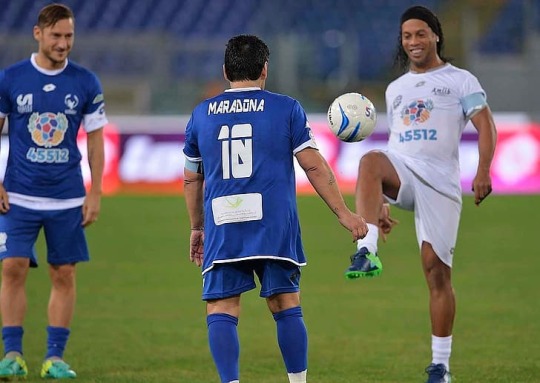
Maradona and Ronaldinho both spent 10 seasons in Europe, played for 3 European Clubs, and spent 2 seasons at their first European club. They played by far the best and most consistent football of their career and reached their highest highs at their 2nd European club. Here both men won 5 major honours, including 2 league titles and a European trophy. Maradona played 52 more games for Napoli and scored 21 more goals than Ronaldinho for Barcelona, which makes it likely that if they’d played an identical amount of games, they’d have an almost identical goal tally.
Both won the World Cup with a 2-0 knockout stage win over Belgium, a 2-1 Quarter-Final win over England, and beat Germany in the final. Both also scored goals in the Quarter-Final which were the best remembered of the tournament and highly embarrassed the England goalkeeper.
Here are some stats which highlight some more similarities in their respective careers:
Club trophies won: Maradona 9, Ronaldinho 12. Number of Clubs: Maradona 6 (in 7 spells), Ronaldinho 8. International caps: Maradona 91, Ronaldinho 97. International goals: Maradona 34, Ronaldinho 33. Competitive Internationals: Maradona 46, Ronaldinho 52. Goals in Competitive internationals: Maradona 17, Ronaldinho 17. Total senior goals: Maradona 345, Ronaldinho 299. freekicks scored: Maradona 62, Ronaldinho 66.
As Players
Maradona was a classic Number 10, a creative playmaker operating from a free role either as an attacking midfielder or a 2nd striker. His game was renowned for his dribbling which due to his low centre of gravity, stocky physique, acceleration, quick feet, close control, agility and his ability to quickly change direction made him extremely difficult to stop. Despite a solid goal return, Maradona’s game was about more than just scoring goals and individual runs, his vision, passing and creativity made him a fantastic teamplayer also.

Ronaldinho also could operate as a Number 10, playing in a free central role as an attacking midfielder, though he could also be deployed on either wing to devastating effect. Ronaldinho was an extremely effective playmaker as like Maradona he possessed outstanding vision and creativty with great passing ability. He was also a world class dribbler with underrated pace and acceleration, aswell as athleticism, balance and ball control allowing him to take on opponents. He was one of the most effective ever 1 v 1 at beating players with his tricks, feints, stepovers, nutmegs, aswell as sheer unpredictability making him extremely challenging to handle. Ronaldinho was also known for his technical skills, flair, creativity and touch.
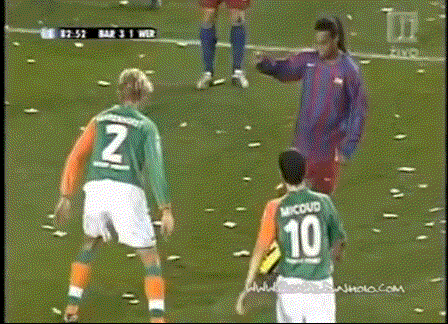
Maradona and Ronaldinho are the most skillful players to ever reach the top of the game. More so than anyone else who has become the number 1 player on the planet, they were freestyle footballers. Maradona was one of Ronaldinho’s idols as a kid, and it’s easy to see why. Only Ronaldinho himself could cast a similar spell over the ball, Diego seemed to be almost at one with it, manipulating it in any way he wanted.
Whether doing keepy-ups with his shoulders, head, heel or slices as naturally as other players do them with their feet, Maradona had an artists understanding with the ball. And not just footballs either, his feet could do whatever he wished with golf balls, rolled up socks, anything he could make resemble a football he juggled with.

Maradona and Ronaldinho were two players who you didn’t need to see in an-game situation to be entertained by. Just throw them a ball. This was evidenced with the well known video of Maradona warming up before a UEFA Cup Semi-Final against Bayern Munich set to ‘Life is Life’ by Opus. Preparing for the game as if he’s arrived too early for a kickabout and is waiting for his mates to show up, Diego plays with an unbelievable rhythm.
This sense of rhythm and fun didn’t leave Diego once the game had kicked off, with regular rabona’s and roulette’s (which became known as the Maradona turn due to the level he perfected it) elevating the entertainment for everyone in attendance.
This is where I think his game is more similar to Ronaldinho’s than that of Messi’s. Lionel though brilliant to watch is nowhere near as flashy, applying skills only when absolutely necessary. For Ronaldinho however, skills always felt necessary. No look passes, pannas, elasticos (known also by some as ‘the gaucho’ due to Ronaldinho’s mastery of the skill) were all regular features of Ronaldinho’s arsenal.
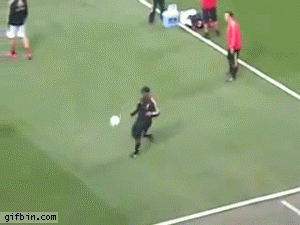
Like Maradona, Ronaldinho was always worth watching before a game had even kicked off. And in training he was capable of getting his teammates to stop dead in their tracks and just stand around watching him perform his skills. An example of Ronaldinho’s ridiculous skill level compared to everyone else, was when he and a number of other top professionals took on the ‘Blindfolded Keepie Uppie challenge’ where as the name suggests, you attempt to do kick ups whilst wearing a blindfold. Benzema managed 5, Lewandowski 7, Xavi 8 and Ronaldinho.. 44.
It’s maybe a strange thing to say about a player who some consider the greatest of all time, and most consider in the top 3 of all time, but Maradona could’ve done even more in football. What he was able to do was limited by injuries courtesy of the many dreadful fouls he endured, bouts of lacking motivation, a lifestyle that led to drug addiction, weight gains & crash diets, and 2 drugs bans that meant he scored just 15 league goals after his 30th Birthday.
And aswell, it shows how good Ronaldinho was that a career that saw him become the only player to win the World Cup, the Champions League, the Copa Libertadores and the Balon d’or (not to mention 2 La Liga’s and 2 FIFA World Player of The Year Awards) is seen by many as one that could and should have been better. A lack of dedication and discipline, combined with his hedonistic lifestyle off the pitch led to Ronaldinho’s physical decline coming alot sooner than it should have. That said I think it’s unfair to boil his whole career down to just his years at Barcelona (where he did for a while have the focus and dedication to become the best player in the world) and dismiss everything else. There was still plenty of very good performances afterwards for AC Milan, Flamengo and Atletico Mineiro, where he thrilled the supporters with his quality.
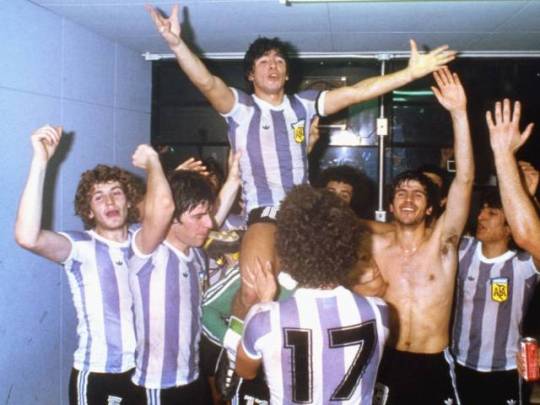
Maradona was in many ways an individualist, for example he had his own fitness coach and his own doctors, never using the doctors employed by his club side or national team, but he was also very much a team player. A technical leader, he was loved by his teammates because he took all the pressure, all the attention on his shoulders, freeing the team up to go out and play without burden. The best example of the deep respect Maradona’s teammates had for him was in a clip from the Napoli dressing room following their historic first Scudetto win in 1987, where the players all sing as though ultras rather than colleagues: “Oh mama, mama, mama, do you know why my heart is racing? I’ve seen Maradona! I’ve seen Maradona! and Mum I fell in love with him!”

In a different way, Ronaldinho was also an excellent team player. When Ronaldinho was at the peak of his powers, a 16-year old Argentine came to his attention. Here he saw a player he knew could be something special. Ronaldinho became a sort of big brother figure to Messi from that point on, helping him as much as possible. For an introverted young kid to have the best player in the World take such a care and interest in him, must have been a tremendous boost. There was no ego from Ronaldinho, no jealousy or attempt to keep the teenager ‘In his place’. When Messi was 17, Ronaldinho introduced him to Kobe Bryant as “someone who will be the best footballer of all time” and in an interview with Four Four Two magazine the current Balon d’Or holder claimed Messi was already better than him.
Beginning

Diego Armando Maradona was born October 30, 1960 in Buenos Aires, Argentina and was raised in the Villa Fiorito shantytown, on the outskirts of the capital city. His love of football came very early, when he was given a ball as his first toy at 3 years old, and slept hugging it all night. Growing up in a shack without water or electricity, when Maradona joined the Argentinos Juniors youth team at just 8 years old he and his parents soon realised that their only way out of this hardship was for Diego to make it as a footballer. He already played with an ability way beyond his years and small, skinny physique quickly beginning to garner attention.
As a ballboy for Argentinos Juniors 1st team games, he would go on to the pitch at half time and entertain the crowds with his skills and tricks, aswell as an extraordinary acceleration when dribbling the ball. On one occasion as the 10-year old Diego exited the field for the Argentinos-Boca Juniors game to re-commence, the fans chanted “Let him stay! Let him stay!”. As Maradona continued to seemingly get better with every match he played in the youth teams, Argentinos Juniors had already pinned all their hopes on him before he’d even joined the first team. They already recognised him as the only player they had who could raise serious funds in the future, and in the meantime would be able to improve the team. He was promoted to the first team aged 15.
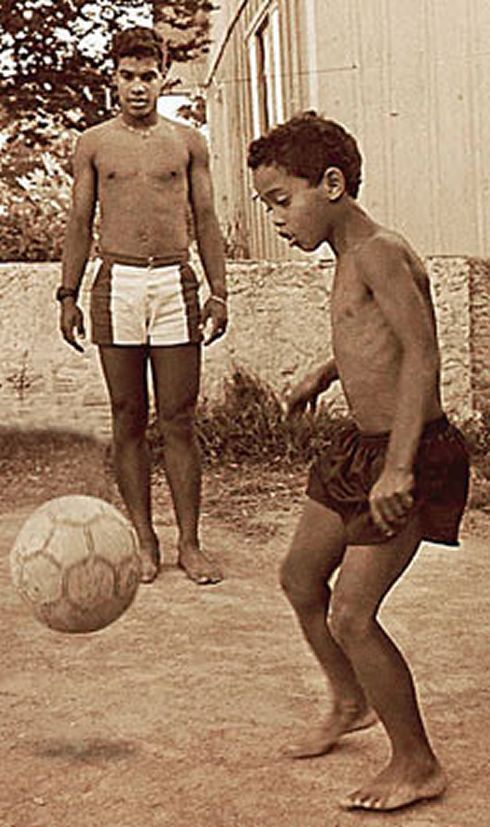
Ronaldo de Assis Moreira was born March 21, 1980 in Porto Alegre, Brazil. He lived in a wooden house in the middle of a favela, until his brother Roberto 8 years his senior, was gifted a home in a more affluent area by Gremio in an effort to get him to stay with the club and reject the interest of Italian club Torino. Tragedy would soon strike for Roberto and his younger brother however, when Roberto returned to the house to celebrate his 18th birthday only to find his father drowned in the family swimming pool.
From a young age Roberto would train his younger brother in one-on-one football sessions, after noticing he too had a real talent for the game. Ronaldinho said of this time “Roberto forced me to juggle the ball as many as 500 times. He stood to watch me do it and would never go until I’d completed it. This took all the fun out of it for me, and at that age it made me very angry. I cried. I didn’t understand. But later I understood what he wanted.”
Roberto’s football career was going well, he had played for Brasil’s under 20′s team and won 3 consecutive state titles with Gremio, the future looked very bright, when more misfortune struck the family. Roberto suffered a serious injury and was let go by Gremio. He moved to FC Sion in Switzerland and with his older brother and father figure since the passing of his Dad now living far away, Ronaldo felt an increased urgency and responsibility to step up and make it as a footballer to help the family financially. He had learned alot from his big brother, who despite being prevented from fulfilling his potential due to injury was still able to etch out a career in football, with a journeyman career making appearances for many sides including Vasco De Gama, Fluimenese and Sporting Lisbon.
Ronaldo played Futsal and Beach Football aswell as 11-a-side football and all this honed his ball control and skills. Often the smallest and youngest player on each of the teams he played for he quickly was assigned the nickname ‘Ronaldinho’ meaning ‘little Ronaldo’ which has always stuck throughout his career despite him growing to over 6 feet tall. He was 13 when he received his first media attention after scoring all 23 goals in a 23-0 win for his side at Futsal (though he did later say “those kids were terrible!”). After starring at the Under 17 World Cup, Ronaldinho followed in his big brothers footsteps by signing for Gremio.
Maradona and Ronaldinho both had their youthful innocence cut short and were forced to see Football as more than fun but as a way out of their hardships at a very young age. As a mere child Maradona had all his families hopes pinned on him for a way out of extreme poverty and Ronaldinho experienced the hardships of life early too with the death of his father and career damaging injury to his brother. But despite all the external pressure and aswell the huge demand they put on themselves to succeed for their families, their pure love for football never wavered.
Starting Out
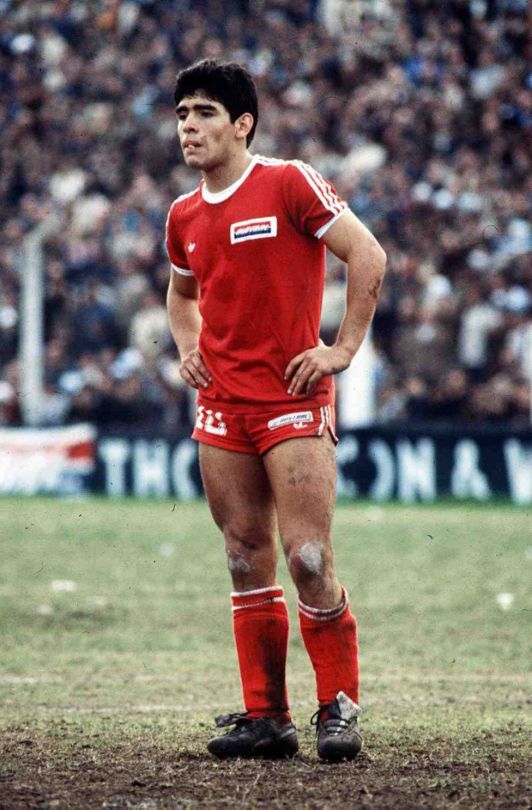
Maradona made his first-team debut for Argentinos 10 days before his 16th Birthday. A few minutes after entering the pitch, he nutmegged an opponent. A few weeks later he made his first start, with then vice-president Settimio Aloisio recalling “What really struck me was the joy there seemed to be in his playing. What seemed unique was that he didn’t seem to have any fear, he was so self-assured, so determined. It was the first time he played a full 90 minutes in the first-team and he did it with all the confidence of a player who had been playing top-class football for at least six years.”
In Diego’s first season for the club in 1976 they finished 2nd bottom of the Metropolitano Championship. In his final season they finished 2nd top. He scored 116 goals in 166 appearences, including a Messi-esque 69 in 71 in his last 2 seasons. Maradona was now too big and too good for the team, and it was time for Argentinos Juniors to get the big payday they hoped years of nurturing this talent would get them. Maradona joined the club he always dreamed of playing for, Boca Juniors for $4M.
Maradona scored 28 goals in 40 games for the club, including a memorable goal in his first Superclasico at La Bombanera stadium against River Plate. The 1981 season brought him his first trophy in senior football, when Boca secured the Metropolitano Championship, the clubs first title for 5 years, by a single point. They had finished 6th in the competition the year before Diego joined.
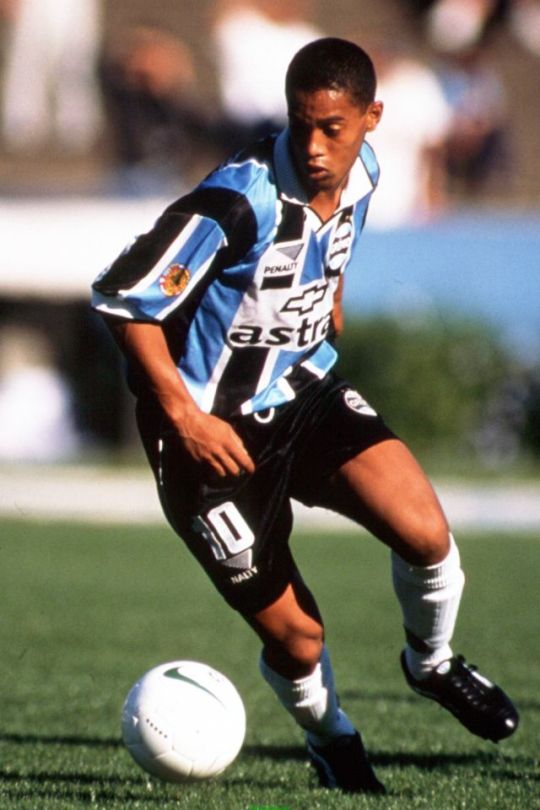
Ronaldinho made his debut for Gremio in 1998, and by his 2nd season the teenager was already showing himself as one of the top Brazilian players in the world. A real breakout moment for him came in the Campeonato Gaucho, the State Championship, usually won by one of Porto Alegre’s biggest sides, either Gremio or rivals Internacional. Gremio came out on top after a sublime performance from Ronaldinho where he tormented and terrorised Brazil’s World Cup winning captain Dunga, on one occasion flicking the ball over his head.
Ronaldinho scored 58 goals in 125 appearances for Gremio, 52 in 87 excluding his debut season and 28 in 37 in his last full season. This was enough to convince Paris St. Germain to spend 5 million Euros to bring him to the French Capital.
Maradona and Ronaldinho both began their professional careers for their local sides, neither club the most glamorous or prestigious of their country, but both rapidly stood out with their performances. Ronaldinho was transferred to Europe in half the time with his first 3 seasons in his native country as opposed to Maradona’s 6, highlighting the change in Football between the late 70s, early 80s and the late 90′s, early 00′s.
In 1978 Argentina had won the World Cup with just one player playing outside of Argentina, and coach Menotti had warned Maradona that Argentina fans would not accept him leaving to play his domestic football in Europe, he did not join a European club until his 7th season. By the time Ronaldinho was on the scene, Europe’s stranglehold over Football meant it was the only place to play for the game’s best talents. Maradona played 206 games in the country of his birth before joining FC Barcelona for a then world record fee of £5 Million pounds.
Europe

Maradona described his time at FC Barcelona as the ‘unhappiest period of my career’. He found German coach Udo Lattek’s hard early-morning training sessions unsuited to his lifestyle, and had a relationship with Barcelona’s then president Jose Luis Nunez which was hostile from the off. The free-spirit of Diego quickly found the atmosphere of Barcelona oppressive, he felt the cold, calculated stuffed shirts of the Barca boardroom looked down on him as a naive, uneducated outsider. Maradona was used to getting his way in Argentina, and was not a man who could easily accept authority over his life. Whilst Barcelona as an institution were not a club willing to bend for one man, no matter how talented he was with a football.
The early signs on the pitch however, were promising. The team received a standing ovation leaving the pitch away to Red Star Belgrade in the Cup Winners Cup, after a 4-2 victory with 2 goals each for Maradona and fellow foreign star signing Bernd Schuster. But the ego’s and personality clashes of Nunez, Maradona, Lattek and Schuster meant it was never likely to last. After Maradona had spent his first ever Christmas away from Argentina in a state of depression, and not long after he’d returned from a prolonged absence due to viral hepatitis, Lattek was sacked, which did not displease either of Barcelona’s star players, with Schuster referring to the manager as a ‘drunkard’.
Lattek was replaced by Cesar Menotti, Argentina’s World Cup winning manager who had managed Diego in the Under 20s and senior national side. It was hoped by the Barcelona hierarchy that this would be the man to bring the best out of Maradona.
The appointment of Menotti wasn’t the only thing bringing comforts of home to Maradona’s life. He did everything to recreate the life he’d known in Argentina, acquiring the friendship and services of Argentines living in Barcelona to provide him with Calabresi and sandwiches just like he’d known in Buenos Aires. But whenever Maradona and his clan would hit Las Ramblas, which was often, he had to accept he wasn’t in his beloved Argentina anymore. He was in a place with wealthy, educated people who looked down on him and his friends, fuelling Maradona’s inferiority complex which he battled all his life due to his poor upbringing.
It was also during this time in Barcelona that Maradona first began taking cocaine, and though he was able to keep this a secret from Barca, some reports of his activities including regular house parties into the early hours with prostitutes in attendance did make it back to an increasingly exasperated board. The Maradona-Nunez conflict continued to intensify, with Jorge Cyterszpiler, Maradona’s then agent responding to comments from Nunez in the press by phoning him and calling him a “son of a bitch”.
4 Days before the King’s Cup final between Barcelona and hated rivals Real Madrid, Nunez refused to allow Maradona to travel to Munich for a testimonial match, a lack of liberty which infuriated Maradona. The team were able to capture the trophy however, beating Real 2-1 with a 90th minute winner, in a game both Maradona and Schuster ran. It had been a turbulent debut season however to say the least, the team had finished 4th behind Athletic Bilbao, Spanish champions for the first time in 27 years, and the two Madrid clubs. They had also been dumped out of the Cup Winners Cup by Austrian minnows Memphis. Maradona scored 23 goals in 35 appearances but injuries and illness had limited him to just 20 league games and 11 goals.
Maradona’s second year was to be defined by yet another rivalry, this time that of coach Menotti and Athletic Bilbao manager Xavier Clemente. In a war of words due to differing football philosophies similar to that of Brian Clough and Don Revie in England, Menotti made public his disdain for what he considered (not without reason), the thuggish football of Bilbao saying “the day they decide to be a bullfighter rather than a bull on the pitch it will play better football.” Clemente responded saying he would take no lessons from an Argentine who spent more time pursuing women than teaching football skills. The stage was set for a series of violent matches to take place between the sides that season. With Barca leading Bilbao 2-0 at the Nou Camp early in the season, Goikoetxea, subsequently named ‘the Butcher of Bilbao’ delivered one of the most brutal fouls Spanish football had seen on Maradona. Menotti demanded Goikoetxea be banned for life, as it was he was hit with a 10-game ban instead. This came as little consolation for Maradona who had long complained about the harsh treatment he received from defenders in Spain due to little protection from referees. This tackle, feared possibly career threatening at the time, kept him sidelined for 3 months.
A few weeks after his return to fitness, Maradona lined up to face Bilbao again, this time at the San Mames stadium. Maradona led his team heroically through another brutal match, scoring both goals in a 2-1 win for his side in one of the dirtiest matches seen at the stadium. Maradona’s duels with Bilbao didn’t end here though, and they would reach a stunning conclusion in the 1984 King’s Cup final infront of 100,000 spectators and half of Spain’s watching public. After a 1-0 defeat featuring the usual Bilbao treatment whenever Diego went near the ball, and racist insults towards him regarding his Father’s native American Indian ancestry, he was given a ‘fuck off’ sign by unused Bilbao substitute Sola, and Maradona subsequently knocked him to the floor before kneeing him out cold. Chaos ensued with a mass brawl involving all the players, with flying kicks everywhere you looked. Maradona was at one stage knocked to the floor with a Bilbao player standing over him, when out of nowhere a teammate jumped in with a huge kick to the players back sending him flying. Maradona left the pitch with his Barcelona shirt torn, he would never wear one again. The brawl resulted in 60 people being injured as fans rained missiles down on players, coaches and photographers.
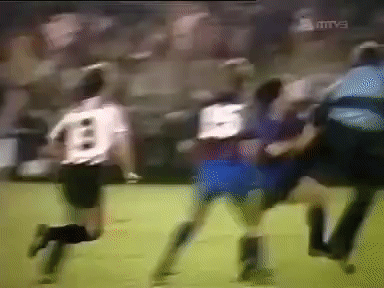
The board had seen enough, Maradona’s time with Barcelona was up. He scored 38 goals in 58 games for the club. There had been some highs, beating Real Madrid in the Kings Cup and the short lived Spanish League Cup final, where after scoring one of the all-time great El Clasico goals in the 1st leg at the Bernabeu he was given a standing ovation by the Real supporters. But there had also been just as many lows, and overall Maradona had failed to do what he was signed to do, establish Barcelona as Spain’s number 1 team again. A move was required for all parties, as Maradona’s spending and bad business moves made on his behalf had left him with so much debt only a huge signing-on fee would take care of it. This came in the shape of another world record fee, £6.9M to Italian Club Napoli. Both Maradona and Barcelona would benefit from the move, as under Terry Venables Barcelona won their first league title for 11 years by 10 points (in the days of 2 points for a win) and reached their first European Cup final the following year, losing on penalties to Steaua Bucharest. Ironically it took the departure of Maradona to get Barcelona to do what his arrival was supposed to do for them.
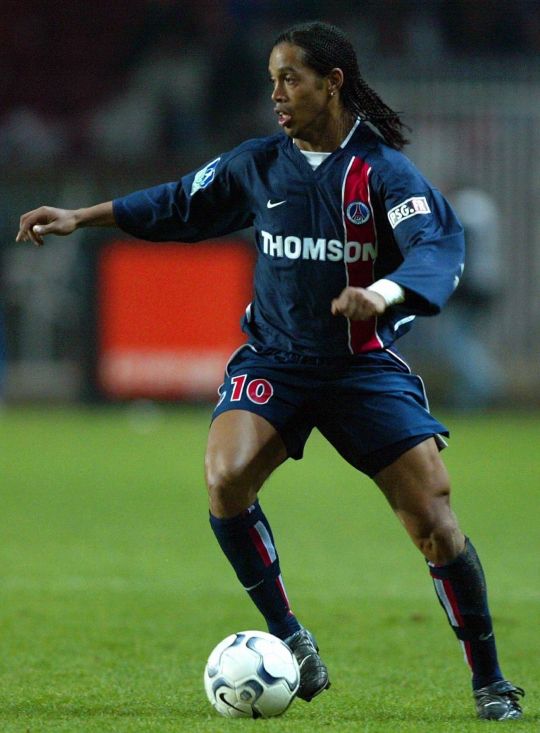
Ronaldinho chose long-time sleeping giants Paris Saint Germain when better teams were perhaps interested in signing him for one reason only, to ensure he would be a regular starter in order to convince Brazil manager Scolari that he should be the 3rd name in the attack alongside Ronaldo and Rivaldo. For the first few months, his plan seemed to have backfired spectacularly. After getting the all clear to play from Fifa, after a messy legal procedure between PSG and Gremio, he still struggled to get the all clear to start from manager Luis Fernandez, so was forced to watch players such as Gabriel Heinze, Mauricio Pochettino, Jay Jay Okocha and Nicolas Anelka from the bench for much of the time before being introduced into games in the second half more often than not.
This slow start was doubly concerning due to the form back home of Ricardo Kaka who was banging them in for Sao Paulo. At the half way stage, it looked likely it would be Kaka starting for Brazil and if Ronaldinho didn’t find some form, he would be a doubt to even make the plane.
Ronaldinho began to make an impact before the winter break, and after it his fortunes had an even greater upturn. Okocha went to the African Cup of Nations and Anelka was loaned to Liverpool. Ronaldinho was going to become the main man in the PSG attack, if he could seize his chance. He scored in the first 4 games back, including a brace against Guingamp.
By mid-march he was making it look easy, looking as though nothing was more simple to him than dribbling through a defence and beating the onrushing goalkeeper as he did not once but twice against Troyes.
Despite only starting half the league games, Ronaldinho finished the season confirming himself as PSG’s best and most important player, aswell as their top scorer with 13 goals and earning a place in the Ligue 1 team of the season.
Ronaldinho returned for his second season at PSG as a World Cup winner, however his upward trajectory at Paris which had begun in the second half of his first season would not continue without dips. Manager Luis Fernandez criticised Ronaldinho’s enthusiasm for Parisian nightlife, claiming he focused on it more than Football. Another source of frustration for him was a typical one for managers dealing with Brazilian players, the long trips back home Ronaldinho took during the season, which Fernandez bemoaned never ended when scheduled. Ronaldinho fired back at his manager’s criticism that “it seems to bother him that I am happy.”
The league campaign was a very disappointing one to say the least for PSG, finishing 7 places lower than in Ronaldinho’s first season, coming in 11th place. On a personal level, there was some satisfaction for Ronaldinho in winning the award for Ligue 1 goal of the season, with a brilliant solo goal against Guingamp. Accelerating suddenly before the first man has even had a chance to get close to him, he plays a one-two around another, then dinks the ball over a slide tackling defender, waits for the ball to drop then dribbles into the box, throws a stepover to make space for the shot then lifts the ball quite wonderfully over a helpless goalkeeper. Pure Ronaldinho magic.
Paris also reached the Coupe de France final after 2 goals from Ronaldinho in the semi-final got them there, however they were beaten by Auxerre in the final with a last minute winner. With a season outside of Europe on the horizon, it was time for Ronaldinho to move on to the next phase in his career. He scored 25 goals in 77 games for the Parisians.
Maradona & Ronaldinho moved to Europe aged 22 and 21 respectively, and both spent 2 seasons with their first European club. Both displayed the talent that made them at times unstoppable, but the flashes of genius were accompanied with a lack of consistency needed to go beyond the promise and potential they were showing to become as great as they undoubtedly could be. In this time, both players also discovered a love of a certain party lifestyle which would remain throughout their respective careers.
Peak
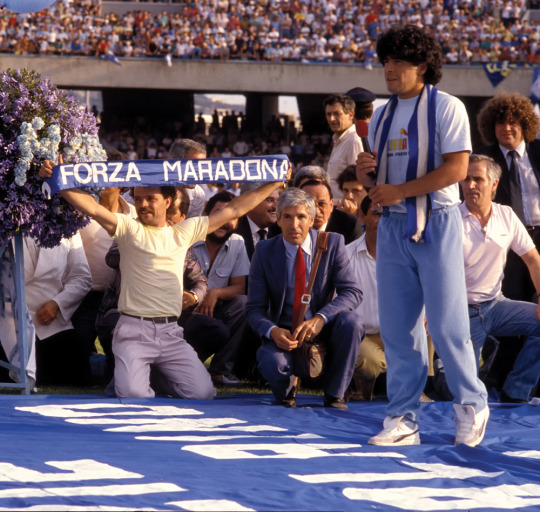
75,000 Napoli supporters packed into the Stadio San Paulo to see the official presentation of Diego Armando Maradona as a Napoli player. For all present that day, the Saviour had arrived. As one local newspaper put it “despite the lack of a mayor, houses, schools, buses, employment and sanitation, none of this matters because we have Maradona."
Maradona found himself feeling instantly more at home than he had ever felt at Barcelona. The poor background he came from aswell as having a Mother of Italian descent gave Maradona an immediate affinity with the city of Naples, in the poorer, economically disadvantaged South of Italy. He could also relate to the feeling of being looked down upon that Neapolitans felt from those in the more affluent and politically prioritised North.
During Maradona’s time in Italy, the North v South hatred was at its peak. The Maradona signing itself had political motivations. Upon hearing of Juventus’ interest in signing the Argentine, Napoli were determined to get one over on the more illustrious then-champions, who already boasted that summer’s standout player at Euro 84, Michel Platini. After his experience with Schuster, Maradona was reluctant to again share the limelight so was instead happy to join the side in the Southern region, a region that had never produced a Serie A winner. Napoli, a club formed in 1926 had to that point won just 2 major honours, both Coppa Italia’s.
Though the team he was joining had a modest history to date, the league he would playing in was by far the best and most competitive in the world. Though a defensive league with emphasis put on the ‘Cattenacio’ style of play, featuring tight man-to-man marking and a sweeper, Maradona could atleast rely on better protection from referees than he’d received in Spain.
Unlike in Barcelona, where the snobbery in high society left Maradona on the outside, Maradona found in Naples he was embraced wherever he found himself in Italy’s most densely populated metropolis, including alongside the Camorra, the Neapolitan Mafia, who had extraordinary influence in all matters in the city at this time. Carmine Guiliano, of the powerful Guiliano clan was only too eager to place himself alongside Naples’ new messiah. And Maradona for his part seemed to find himself more comfortable in this company, than he’d ever felt with the distant and alien Barcelona hierarchy.
Hellas Verona were champions for the only time in their history in Maradona’s debut season, with Napoli having to settle for 8th place. This improved to 3rd in the following year, though off the pitch Maradona had his first serious problems with long-time girlfriend Claudia.
Maradona’s 3rd season saw him hit the peak of his considerable powers. Fresh off the back of inspiring Argentina to the 1986 World Cup trophy, his encore was delivering Napoli to the promised land as they took their first ever Scudetto, with a league double over Juventus proving decisive. Winning Serie A sparked a week-long party in Naples, so often the butt of the North’s jokes, it was they who were laughing now. Maradona had put Napoli and the entire city of Naples on top of Italy, and in doing so his standing amongst the people could not have been any higher. In the eyes of the adoring Neapolitans he was more than a footballer, more than a man even.
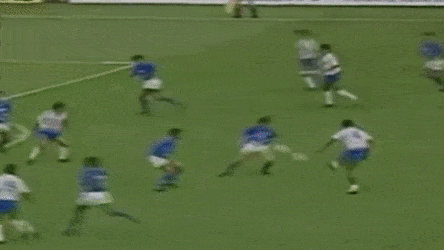
Maradona and Napoli were unable to retain their crown, ending the season with 4 losses and 1 draw as they lost out to Milan by 3 points. This was the season problems between Maradona and Napoli president Corrado Ferlaino began to materialise. Napoli who had so far accepted his unwillingness to be controlled had grown frustrated at his missing of training sessions and the following season with Maradona injured or missing from training all the more regularly, Napoli ended further away from the Scudetto. Though still 2nd they finished 11 points behind Internazionale and were beaten in the Coppa Italia final. Things reached their lowest moment to date that season when Maradona took himself off just 17 minutes into a game due to injury, this was greeted with jeers and whistles from the supporters who had once revered him as their King. This infuriated Maradona, but there was redemption in the Uefa Cup which Napoli won beating Stuggart in the two-legged final, after dispatching Juventus and Bayern Munich to reach it.

But Maradona was beginning to feel trapped again. This feeling was exacerbated by him finding out about Olympique Marseille’s interest in signing him only after Ferlaino had rejected the offer. An increasingly frustrated Maradona began lashing out and making enemies in the media, who did not accept his outspoken complaints without backlash.
After a slow start to the 89-90 season, with the World Cup that summer looming ever closer, Maradona’s motivation soared again and he had his most prolific season for Napoli, scoring 16 in 28 league games as they finished 2 points above Milan to take the Scudetto for the 2nd time in 4 years. Maradona had responded to the adversity by climbing back to the top, it was the final time in his career he would sit there.
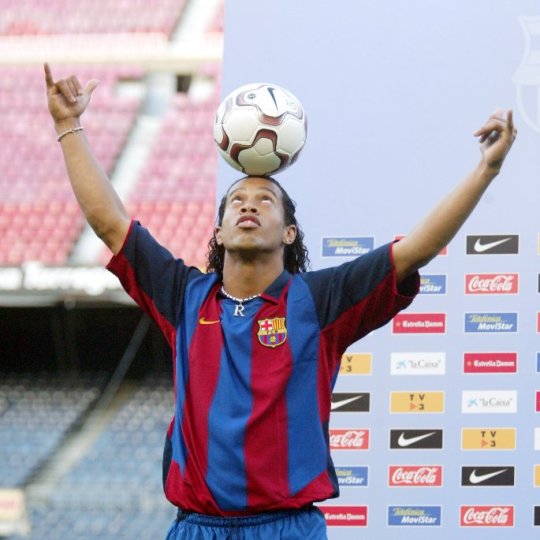
“Ronaldinho was responsible for the change in Barca. It was a bad time and the change that came about with his arrival was amazing. In the first year, he didn’t win anything but people fell in love with him. Then the trophies started coming and he made all those people happy. Barca should always be grateful for everything he did.” - Lionel Messi.
Though it would maybe be a stretch to compare the FC Barcelona that Ronaldinho joined in 2003 to Napoli, the fact is the club was not in a good place. Trophyless for 4 seasons, having gone through 6 different managerial reigns in that time, the club hadn’t finished above 4th for 3 years and the season prior to the Brazilian's arrival, Barca had their worst league position for 15 years, coming in 6th, as 3 different managers tried and failed to turn their fortunes around. Making matters even worse during this trophy drought, their bitter rivals Real Madrid had taken their star captain Luis Figo and just to rub it in had won 5 major honours including 2 Champions League titles. It was them enjoying the stability of one coach, with all this silverware coming under Vincente Del Bosque.
2003-04 brought Barcelona a new President Juan Laporta, a new manager in Frank Rijkaard and now it needed a new star player. Laporta earmarked 3 players of which he felt 1 was needed to bring Barcelona back to the top: Thierry Henry of Arsenal, David Beckham of Manchester United or Ronaldinho of PSG. Henry had unfinished business left at Arsenal, Florentino Perez made Beckham his latest and most glamorous Galactico to date, leaving Ronaldinho. And though Real Madrid passed up on him, with the words of a Real Madrid executive “He is so ugly that he’d sink you as a brand” reflecting Real Madrid’s new Business first, Football second approach which had led to the bizarre sacking of Vicente Del Bosque, the path to Ronaldinho was not completely clear for Barcelona. Premier League Champions Manchester United were very close to securing the 23-year old but in the end they couldn’t get it over the line and instead had to settle for a skinny 18-year old winger from Sporting Lisbon.
Ronaldinho started as he meant to go on in his very 1st league match at the Camp Nou. With Barca trailing to Sevilla, he received the ball on the left inside his own half and 8 seconds later he had the ball in the net. Arriving into the Sevilla half he cut inside past one then another and let fly from 30 yards, it was in as soon as it left his foot, cannoning in off the crossbar with the keeper beaten by unbelievable power and precision.
The Brazilian was unable to prevent the Catalans 5th season without silverware, but 03/04 was a big improvement on the previous year. After a bad start saw Barca in 12th place after 18 matches, the team put together a run of 17 league games without defeat featuring 14 wins, including away at the Bernabeu for the first time since 1997. Ronaldinho provided the game-winning assist in the 86th minute with an immaculate chip to Xavi who scored with a finish equal to the pass. In the end the team finished in 2nd place, behind Champions Valencia but above Real Madrid who had gone backwards under Carlos Quieroz, opening an opportunity for a new force in Spain.
04/05 saw the arrival of Samuel Eto’o from Real Mallorca who proved the ideal partner for Ronaldinho in attack. Barca became the Champions of Spain for the first time since 1999 but were stopped in the Champions League by Chelsea, who beat them 4-2 at Stamford Bridge despite a very memorable Ronaldinho goal.
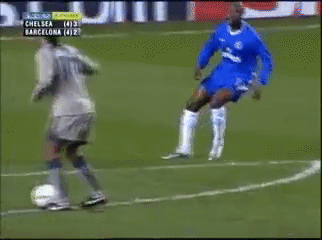
"It's like someone pressed pause and for three seconds all the players stopped and I'm the only one that moves." — Ronaldinho
Ronaldinho scored 13 goals in his 2nd season, the same as Maradona managed in his 2nd season for Napoli, but 05/06 would see Barcelona’s star man go up another level and take the club with him. In 29 league games Ronaldinho scored 17 and assisted another 18, but to focus on numbers would be to downplay what the Brazilian was doing on a weekly basis at the time. He was making La Liga defenders look as out of their depth as amateurs would against him. How could they hope to stop him when he was using skills they had never even seen let alone come up against before? At this time Ronaldinho alone was worth the entrance fee, you knew he’d do something to bring a smile to the face of every single spectator, and maybe a shake of the head due to sheer disbelief at the audacity of the tricks Ronaldinho would not only attempt but pull off.
And this was not just reserved for the defenders of Espanyol or Real Zaragoza, Ronaldinho treated every match, every opponent the same, no matter the importance of the game, he was going to play it his way.
Never was this more apparent than when Barcelona travelled to the Bernabeu in November of 2005. It was in this month that Ronaldinho won the Balon D’or for the one and only time, winning above English midfielders Frank Lampard and Steven Gerrard to add it to his FIFA World Player of the Year awards for 2004 and 2005. He shown why he was the number 1 player in the world in what was the first El Clasico for the future world’s best player, a young long-haired Argentine. But on this occasion it was the senior players, and one in particular who stole the show. With Eto’o giving the visitors an early lead, Ronaldinho doubled it just before the hour mark first skinning Sergio Ramos, before leaving Ivan Helguera and Iker Casillas flat footed and helpless to stop the genius in full flow.

However he wasn’t done yet. 20 minutes later, running past Sergio Ramos with an ease which was only matched in the finish, which left Iker Casillas shaking his head and shrugging his shoulders, perplexed and powerless. At this point, certain sections of the Madrid fanbase felt obliged to applaud Ronaldinho. And not just 1 or 2 either. As the Barcelona players celebrated with their maestro, many Madrid fans can be seen on their feet giving a standing ovation to the man who had single handedly demolished their team. They knew their Galacticos of Beckham, Raul, Zidane, Robinho and Ronaldo had been thoroughly outclassed by the player deemed too ugly to sign. There was nothing ugly about his performance that night, as he took Real apart with a beautiful simplicity, becoming the first Barcelona player to win applause from the Bernabeu since Diego Maradona.
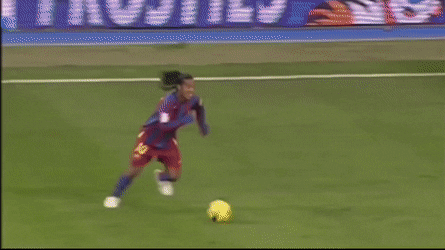
The result was indicative of the gulf that had developed between Barca and Real, as Barca retained their title finishing 12 points clear of their rivals. And in the Champions League Barca were also able to enact revenge on Chelsea before meeting AC Milan in the semi-finals. Just a single goal was scored in 180 minutes, coming from a sumptuous Ronaldinho through ball and finished expertly by Ludovic Guily. The final saw FC Barcelona meet Arsenal, and despite an early red card for the Arsenal keeper, Barca trailed with 15 minutes to go but were able to turn the game around to win just their 2nd European Cup ever and first since 1992. In 45 games Ronaldinho scored 26 and assisted 24, he was the top provider in both La Liga and the Champions League.

After a hugely underwhelming World Cup, Ronaldinho was able to pick up right where he left off at Barcelona atleast, scoring 21 La Liga goals in 32 matches, the highlight being a special overhead kick against Villarreal. However Barca missed out on the title, due to their head to head record with Real Madrid. With both clubs finishing on 76 points, a 2-0 Real Madrid win in November decided the destination of the title and Barcelona’s far superior goal difference, with more scored and fewer conceded counted for nothing. This was tough to take, but Ronaldinho had racked up 50 goals and 38 assists in 2 seasons. And at 27, Barcelona’s number 10 appeared for all the world to have many years left at the top..

Coming Down
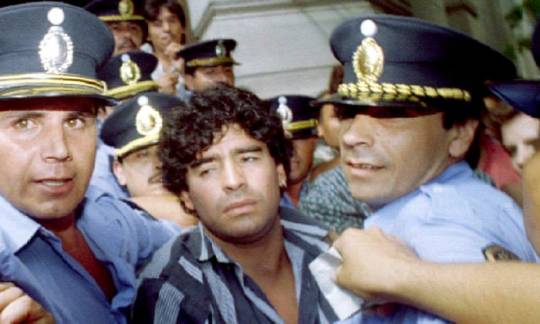
Following the 1990 World Cup which saw Maradona lose the final, the game after declaring Italian fans “hijo de putas” as the cameras panned on him for whistling out the Argentine national anthem in the Stadio San Paulo, supposedly his Kingdom, things would go from bad to worse on his return to the stadium for Napoli.
For now there was a drive in the police’s scrutiny into organised crime in Naples, and noone with connections to the Camorra was guaranteed immunity, including Diego Maradona. His time of everyone turning a blind eye to his off-field activities was up. It was the worst kept secret around that drug problems were beginning to affect his football, and media hints about the dark hole Maradona was falling down with the grip drugs had over him were appearing more and more frequently.
As police investigated the Camorra, listening into conversations, Maradona found himself being taped by police, requesting cocaine and prostitutes. This led to a police investigation into Maradona, meanwhile Napoli chose this time to abandon their lax random drug testing regime, and Maradona was randomly tested twice, both by Napoli doctors and outside doctors brought in by the club. Both tests returned positive. Diego returned to Argentina, but there was no escape to his problems. A police raid at a house he was staying at found him asleep next to grams of cocaine, he was arrested.
Maradona received a 15-month ban from football, having his final season with Napoli cut short after scoring just 6 goals in 18 league games and 10 in 26 in all competitions. His final goal for the club felt like a fitting one at the time, a consolation penalty in a 4-1 defeat away to Sampdoria. Napoli finished the season in 8th, where they finished in Diego’s 1st season with the club. The cycle had been completed and Maradona’s Neapolitan dream had turned into a nightmare.
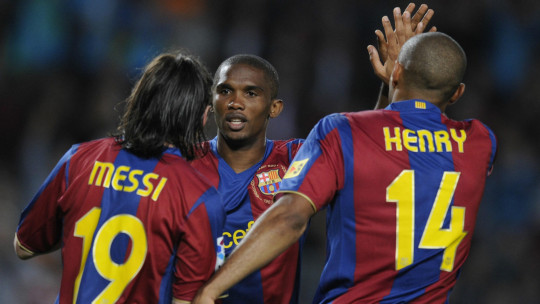
In 07/08 Ronaldinho found himself afflicted with regular injuries for the first time in his career. It couldn’t be put down to bad luck. He had lost his motivation and had stopped looking after his body. His partying and lack of dedication to training saw him lose his peak physical condition. Barcelona’s best and most important player just the season prior, Ronaldinho found that even when he was fit a place in the starting 11 was now hard to secure with the continuing emergence of Lionel Messi and the signing of Thierry Henry.
Barcelona had a poor season, finishing 18 points behind Champions Real Madrid and 10 points behind 2nd placed Villarreal. It signalled the need for a change. Rijkaard was to be replaced in the summer by former Barca midfielder Pep Guardiola, and Juan Laporta declared Ronaldinho needed a new challenge to revive his career. Ronaldinho’s season ended prematurely with an injury, after 9 goals in 26 games, numbers almost identical to Maradona’s last season in Naples. Ronaldinho’s final goal also came in a away defeat where his side shipped 4, as they went down 4-2 to Atletico Madrid. Though the Brazilian’s goal was a touch more special, coming with a spectacular overhead kick.
Just a year on from seeming irreplaceable for Barcelona, Ronaldinho was now surplus to requirements. He joined AC Milan, after rejecting Manchester City who under their new Abu Dhabi owners had placed a bid of £25.5 million.
Maradona and Ronaldinho played by far the best and most consistent football of their career for their 2nd European club. Maradona scored 115 goals in 259 Napoli games, Ronaldinho 94 in 207 for Barcelona. Not including penalties Maradona scored 73 and Ronaldinho 75.
Country

Maradona made his Argentina debut in 1977 aged 16 though missed out on making the World Cup squad the following year which Argentina hosted and won. Diego had to make do with the 1979 World Youth Championships instead, where he netted 6 in 6 including 1 in the final in a 3-1 win over the Soviet Union.
Maradona’s first World Cup came in 1982, in the country he was then plying his trade. Expectations on Barcelona’s new signing were huge, but it didn’t go to plan. He scored in just 1 of the 5 matches he played, a brace against Hungary and was sent off against Brazil, as his frustrations at his repeatedly rough but unpunished treatment at the finals reached boiling point.
Maradona entered the 1986 World Cup with his head in a bad place. With an illegitimate child on the way, conceived from an affair, Maradona was grateful for something to occupy his focus and he played the tournament like a man with nothing on his mind other than to lead his team to glory. In the Quarter-Finals Argentina met England in the first match between the sides since the Falklands War.
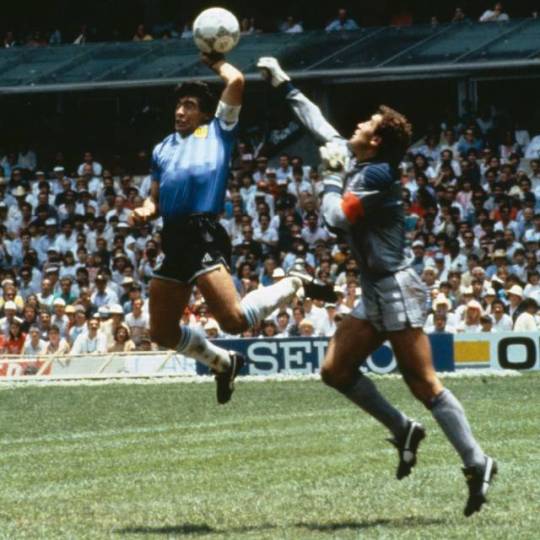
The match came to epitomise Maradona’s legacy as he scored the 2 most famous goals ever within 4 minutes of each other. After England defender Steve Hodge could only lift the ball back in the direction of his own goal, the 5 foot 5 Maradona rose in the air to direct the ball over the outstretched fist of the 6 foot Peter Shilton. Just like the England keeper, Maradona went at the ball with his hand but in such a way both the referee and the linesman missed it. Diego later described the goal as being a “little with the head of Maradona and a little with the hand of God”. The goal subsequently became known as ‘the Hand of God’. If Maradona’s first goal demonstrated his win or die mentality, the second showed the pure artistry of the game’s most gifted genuis. Receiving the ball in his own half, Maradona dribbled past anyone in a white shirt before rounding Shilton and slotting home ‘the goal of the Century’. Maradona had secured his place as Argentina’s favourite son, restoring much needed national pride after the humiliation of the Falklands defeat.
3 days later Maradona single-handedly took Belgium apart, again scoring a brace including another spectacular solo goal. A world cup winning assist in the final against West Germany gave Maradona 5 goals and 5 assists in 7 matches, he played every minute for his side. In the best individual performances ever produced at the FIFA World Cup, Maradona scored or assisted 10 of Argentina’s 14 goals.
The 1990 tournament was the second time Diego played a World Cup in the country where he was playing his club football and he was counting on the support of the Naples people to help him and his team retain the trophy. All seemed to be well after Argentina bounced back from a shock 1-0 defeat to Cameroon by beating the Soviet Union in Naples infront of a supportive crowd, Maradona’s hand again playing a part as he handled on the line to prevent a certain Soviet goal and again got away with it. A 1-1 draw with Romania meant Argentina scraped through in 3rd place and met Group C winners Brazil in the round of 16. Maradona got revenge for 1982 as he produced his best moment of the tournament to brilliantly set up the only goal of the game for Cannigia.
After beating Yugoslavia in a shootout despite a miss from Maradona, Argentina met Italy in Naples. Maradona aimed to stoke tensions between the North and the South, encouraging Neapolitan’s to support the man who had brought their football club so much success and joy, instead of their National side with him saying “The Italians are asking Neapolitan’s to be Italian for a day, yet for the other 364 days in the year they forget all about Naples.” His attempt ultimately proved unsuccessful evidenced by the whistling out of the Argentina national anthem, but Maradona scored the decisive kick in the shootout to put his side into their second successive World Cup final. They would meet Germany again, but that’s where the similarities would end, as the 3-2 final of 4 years ago was replaced with a dour, bad tempered game which Germany won 1-0.
After returning from a 15-month suspension for drug use, Maradona was left out of the Argentina squad which won the 1993 Copa America, but during a humiliating 5-0 home defeat to Colombia in a World Cup Qualifier, the fans began to chant for Maradona, their cries getting louder as one goal after another hit the back of their net. The saviour answered their calls, captaining the side as they narrowly squeezed past Australia in the qualification play-off.
In the months approaching the World Cup, Maradona was more motivated than he’d been for years. Training harder than ever at a remote farm free of all distractions, he had a dramatic weight loss, transformed from the bloated out of shape Diego the world had become familiar with. Intense training, a drastic diet, vitamins, minerals, weight reduction drugs and short-term energy providing drugs were responsible for Maradona dropping almost 3 and 1/2 stone.
Diego’s lack of confidence in conventional medicine meant he relied on his own personal doctors to get him in the best condition possible for USA 94, these being Fernando Signorini and bodybuilder Daniel Cerini. Signorini had serious concerns about Cerini due to the use of anabolic steroids by his girlfriend in a bodybuilding contest which led to a positive drugs test in 1989, but nobody in Team Maradona ever dared speak out against another member of the team, if that person had Maradona’s trust.
And just like Maradona had complete faith in his team, the Nation of Argentina aswell as his own teammates had complete faith in him to power them to a successful World Cup. And their faith seemed well placed after the opening game which saw Argentina take Greece apart 4-0 with a Batistuta hattrick. Maradona made it 3-0 on the hour mark, after a passage of teamplay which highlighted the extent to which the team was playing on the same wavelength. Maradona’s celebration was his most famous ever, as he ran straight at the camera, wide eyed with passion running through him.
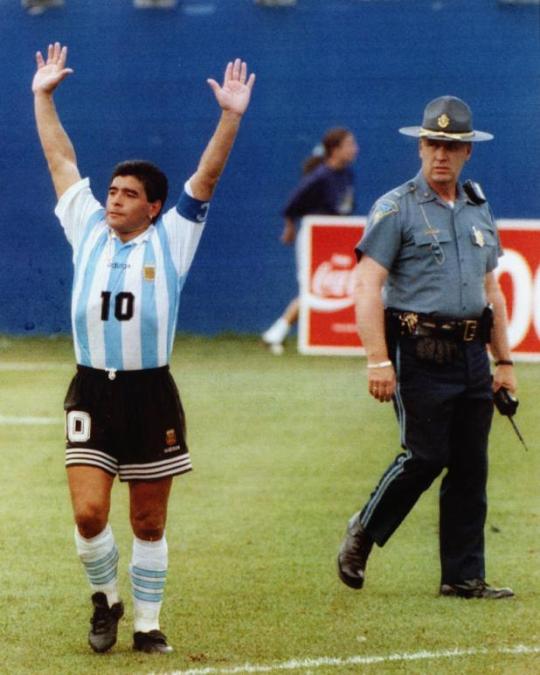
At half-time during Argentina’s 2nd match, a 2-1 win over Nigeria, Maradona was one of two players on each side drawn for a random drugs test. At full time Maradona left the field hand in hand with a nurse, riding a wave of positive emotion after back to back World Cup wins. He was about to come crashing down.
Maradona tested positive. An over the counter, weight reducing drug containing a FIFA banned performance enhancing supplement provided to him by Daniel Cerini was responsible. The relationship and lack of trust between Cerini and Argentina team doctors was so bad that neither was kept up to date with what the other was giving to him, so Argentina were left unaware of the drugs Maradona was taking. Though given the controversy surrounding Cerini they could’ve taken a guess, but noone would dare challenge a Maradona man, all that mattered to anyone was that he was on the pitch. Well after this he wouldn’t be as he received his 2nd 15-month ban in 4 years.
FIFA found Diego not guilty of consciously taking performance enhancing drugs, and believed he was unaware of its components. But regardless he was hit with a ban for breaching Fifa doping regulations. Here Maradona’s history as a drug user went against him. At the Mexico 86 World Cup a Spain player was found to have PED’s in their system, but he escaped punishment with only his doctor being banned. There was no such luck for Maradona who never wore the shirt of his beloved Argentina again. Argentina’s World Cup too effectively ended there as without their talisman they lost to Bulgaria and Romania who knocked them out.

Like Maradona, Ronaldinho also garnered some attention for his performances in a FIFA World Youth Championships, the U’17s version which took place in Egypt in 1997 with Brazil romping to the title scoring 21 goals for the loss of just 2.
1999 was a very busy year for Ronaldinho on the international scene, first he appeared in the U’20 World Championships, before receiving his first cap for the senior team in a 3-0 win against Latvia. Ronaldinho was 19 at the time and in just his 2nd season as a pro, this became even more impressive when he was selected for the 1999 Copa America and scored his first goal for the Selecao at the tournament. It was the other 2 R’s: Ronaldo and Rivaldo who were the stars of the show though, as they helped themselves to 5 goals apiece, as Brazil won the trophy. It was the following week at the Confederations Cup where the teenager truly broke out on the International scene, as he scored in every game bar the final, winning the award for best player and top scorer with 6, including a semi-final hattrick against Saudi Arabia. Brazil went down 4-3 in the final though to hosts Mexico.
The following year Ronaldinho was part of the U’23 squad that competed at the Summer Olympics in Sydney. He was in fine form heading into the tournament, scoring 9 goals in 7 pre-tournament games but the Olympics itself was a disappointment with Brazil exiting at the Quarter-Final stage.
At the 2002 Japan/Korea World Cup Ronaldinho scored 2 and assisted 3 as his country won their 5th title. The victory held many parallels with Maradona’s triumph with Argentina in 1986. Like then, Brazil became champions 8 years after their previous win. And like Maradona, Ronaldinho met and beat England 2-1 in the Quarter-Finals. With England leading 1-0 and the first half drawing to a close Ronaldinho received the ball just inside his own half and took off dribbling, running straight at the heart of the English defence. After beating Ashley Cole with a stepover and a turn of acceleration he kept his cool to slip a perfectly weighted pass to Rivaldo who didn’t disappoint.
Just as Maradona did in the ‘Hand of God’ game, Ronaldinho made his 2nd key contribution to the final outcome just a few game minutes after his 1st. 5 minutes into the second half, Ronaldinho stood over a free kick 40 yards out. With keeper David Seaman off his line anticipating a ball into the box, the ball instead flew over his head and landed just under the crossbar and inside the post. The goal was considered a freak, a stroke of good luck for Ronaldinho with him mishitting an attempted cross. And many people still hold that opinion to do this day, but I do not. The ball is so far away from any Brazilian player, I can’t see how a player as talented as Ronaldinho could misdirect a ball so bad as to completely miss out everyone on his team. Seaman was stood in a bad position, too far off his line for a keeper of short stature and Ronaldinho saw an opportunity to go for goal and executed it perfectly. This goal being dismissed as an accident I think is of great disservice to the Brazilian. But regardless just like the Hand of God goal Maradona scored, Ronaldinho also caused an England keeper to feel great embarrassment.
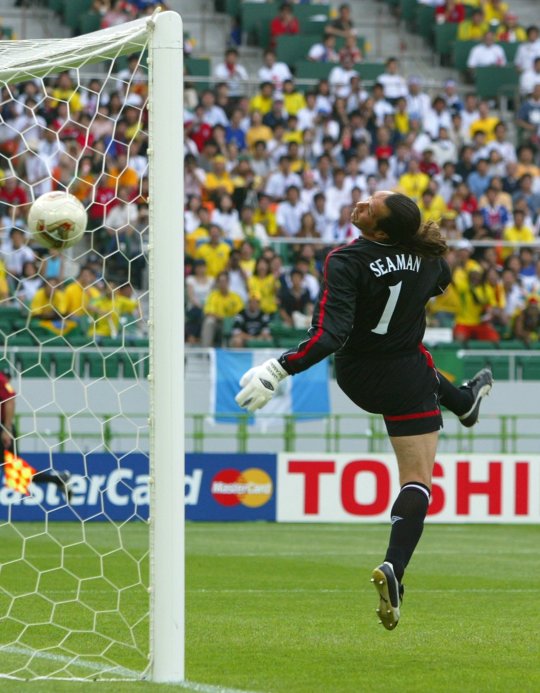
A red card shown to Ronaldinho prevented it from being a perfect afternoon for him as it forced him to miss the Semi-Final. Both Maradona and Ronaldinho’s sole World Cup victories also featured a 2-0 win over Belgium and victory in the final against Germany.
Ronaldinho’s next tournament was the 2005 Confederations Cup which he also won, receiving man of the match for his performance in a 4-1 final win against Argentina in which he also scored. Hopes were high heading into the 2006 World Cup that Brazil could retain the trophy. But the 3 R’s of Rivaldo, Ronaldinho and Ronaldo which worked to devastating effect in Japan and Korea, was replaced by a top heavy attack of Kaka, Ronaldinho, Adriano and Ronaldo. All these stars together didn’t gel as Ronaldinho turned out the worst performances of his stellar international career and Brazil were eliminated in the Quarter-Finals.
Two years later at the Beijing Olympics Ronaldinho was selected as one of Brazil’s overage players as they took the Bronze medal, but he was cut from a Dunga’s initial 30-man squad for the 2010 World Cup, where Brazil were unable to improve upon a Quarter-Final exit. Ronaldinho was captain for a 2013 friendly against Chile, but was not called up for the Confederations Cup that year that Brazil won or the 2014 World Cup they hosted.
Maradona won 91 caps for his national side scoring 34 goals and Ronaldinho won 97 caps, including atleast one a year for 14 years and scored 33 goals. Both men scored 7 in their most prolific years for their country.
Reaching the End
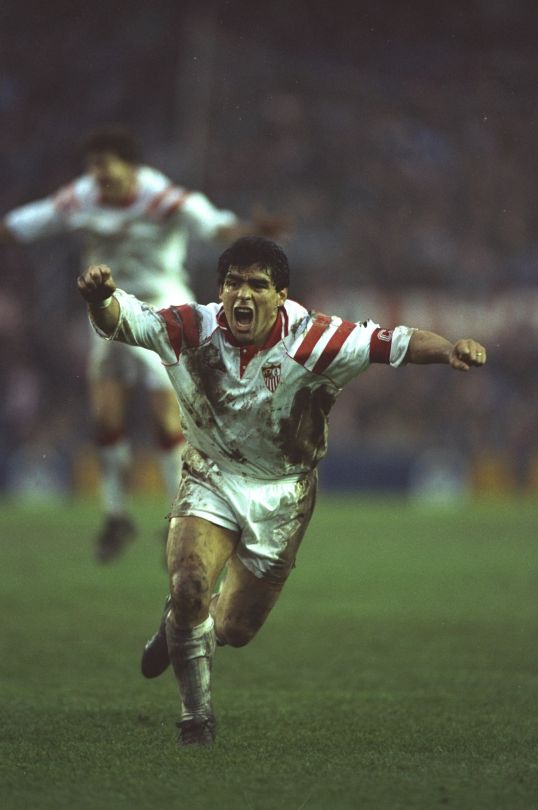
After serving his first 15-month ban Maradona joined his former Argentina manager Carlos Bilardo at Sevilla. Overweight and undisciplined Maradona rarely performs and doesn’t endear himself any further to his employers by spending many nights in a local brothel with his teammates. His lack of fitness and absence from training leads Bilardo to feel unable to trust him to finish a game and he substitutes him. Maradona calls him a “son of a bitch” as he leaves the field. In the dressing room, the two come to blows with Diego later saying “we punched the shit out of each other.” The game would be his last in a Sevilla shirt.
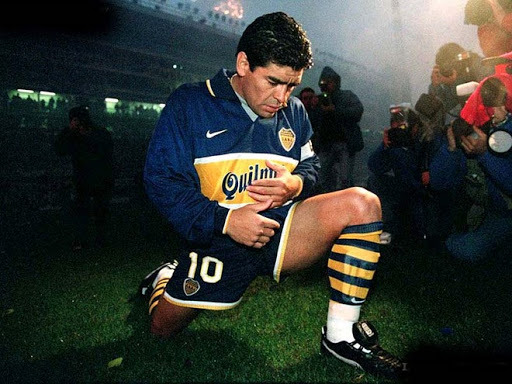
Maradona is then offered a reprieve at Newell’s Old Boys but seems unable to motivate himself. The energy boosting drugs he’s taking at the time mean that after an initial burst of energy he fades badly in games. His stay is shortlived.
Whilst serving a second drugs ban, Maradona tries his hand at management with Deportivo Mandiyu, but they are relegated in a match where Diego is seen on camera calling the referee “a thief, a liar and a gutless coward without balls.” When the ban is over Maradona returns for a second spell with his beloved Boca Juniors where the curtain comes down on his career on his 37th birthday after 31 games spread across 3 seasons.
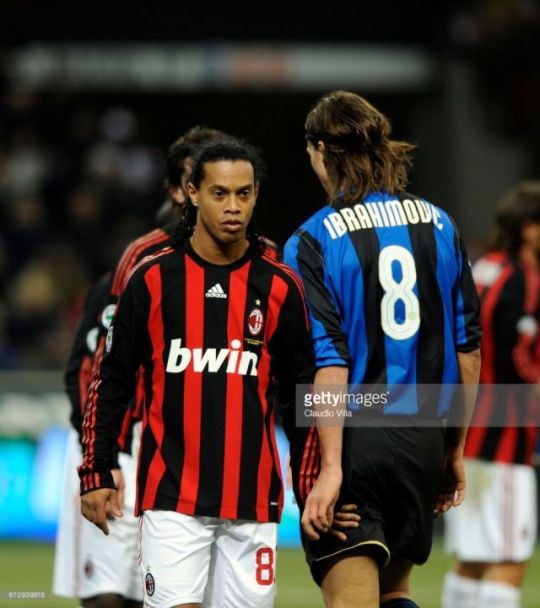
Ronaldinho scored his 1st goal for Milan in a 1-0 derby win over Internazionale. However after a good start, he struggled with fitness and often started games from the bench. A lack of dedication in training and late night partying led departing manager Carlo Ancelotti to declare “The decline of Ronaldinho hasn't surprised me. His physical condition has always been very precarious. His talent though has never been in question."
Ronaldinho did much better in his 2nd season under Leonardo, a fellow Brazilian who was more lenient towards his nighttime activities. Ronaldinho scored 12 and assisted 14, more than anyone else in that season’s Serie A. Likely Milan’s best player that season, he scored 2 braces against Juventus, home and away, and a hattrick against Sienna. However the following season, the arrivals of Robinho and Zlatan Ibrahimovic, plus the stricter coach Massimiliano Allegri saw Ronaldinho’s time in Milan come to an end. Referring to a night Ronaldinho was spotted out in the early hours a couple of days before a Milan Derby, Allegri said in a press conference that “it was not an hour for an athlete to be awake.” That quote applied to many nights during Ronaldinho’s stay in Italy, one night at a Music festival he was implored by Milan fans to go home in order to be ready for training tomorrow, the Brazilian just laughed and told them not to worry. He was determined to enjoy himself and didn’t care who saw him.
This would change when he returned home to Brazil and joined Flamengo, with the club setting up a telephone hotline if they spotted the new club captain enjoying a night out, such were there frequency. 20,000 Flamengo supporters were present for Ronaldinho’s unveiling and although there was some good moments such as when he hit a hattrick during a 5-4 win against Santos in a game they’d trailed 3-0 in, he in the end cancelled his contract and sued Flamengo over lack of payment.
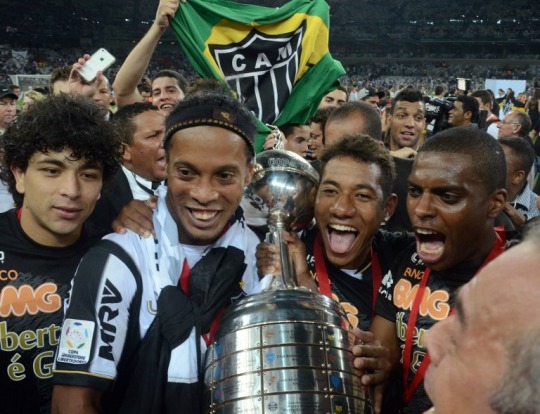
Ronaldinho then joined Atletico Mineiro and won the Bola de Ouro (league’s best player) award in his 1st season. In his 2nd season he won the Copa Libertadores, the first in Mineiro’s history, with Ronaldinho contributing 4 goals and 7 assists to the success. Mineiro lost the first leg of both the semi and the final 2-0 but won both ties on penalties. Ronaldinho was awarded the 2013 South American Footballer of the Year. At the FIFA World Club Cup, following a semi-final match Ronaldinho was mobbed by the players of Raja Casablanca, as they stripped him for souvenirs as a memento from sharing a pitch with their idol.

Ronaldinho then moved to Mexico side Queretaro where the highlight came in an away fixture to Club America where he scored twice in a 4-0 win and received a standing ovation from the home fans. Things were not as positive at his next and final club Fluimenese, where he appeared just 9 times before deciding to quit the club, no longer happy with his level. Maradona scored 311 goals in 589 games in club football and Ronaldinho 266 in 699. Both players will be fondly remembered by everyone who saw them on a football pitch, for their contribution to the beautiful game.
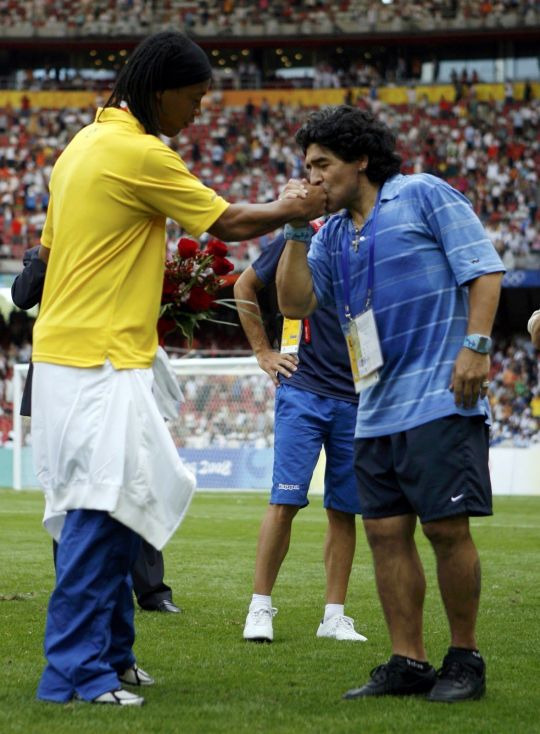
Sources: Hand of God The Life of Diego Maradona by Jimmy Burns, The making of Ronaldinho- how the Brazilian superstar broke through at PSG (FourFourTwo Magazine), Remembering Ronaldinho’s excessive Milan Nights (Bleacher Report)
0 notes
Text
How Danielle Bunten Berry Helped Inspire Multiplayer Gaming
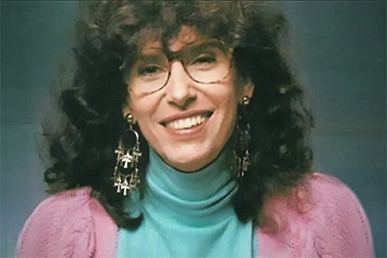
Though not many people today may be aware, Danielle Bunten Berry was one of the key minds that helped to kickstart the video game industry. Bunten, who was born in St. Louise, MO, spent much of her time as a child playing games with her family. Some of her fondest childhood memories involved her and her family playing games together and found that games were a wonderful way for people to socialize with one another.
Early Career
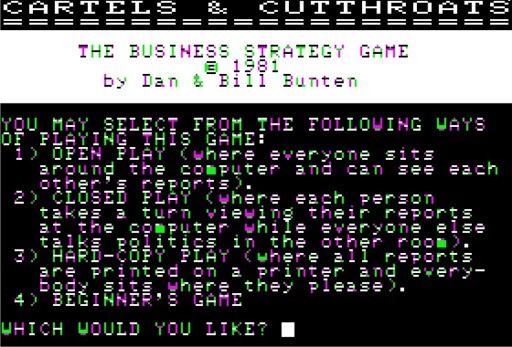
Game Designers Remembered
She eventually went to college at the University of Arkansas, where she acquired a degree in industrial engineering in 1974. From there, Bunten began programming text-based video games as a side hobby. After graduation, Bunten got a job working for the National Science Foundation, where she created urban models before starting a job at a video game company.
Working for video game company Speakeasy Software, Bunten developed her very first video game titled Wheeler Dealers for the Apple II. It was one of the very first multiplayer video games and was even sold with a custom controller that allowed for multiple players. Unfortunately, the custom controller raised the game’s price to $35, in an era where the standard computer game sold for only $15. As a result, Wheeler Dealer only managed to sell 50 copies. However, Wheeler Dealer was followed up by three more titles for SSI, an early game publisher: Computer Quarterback (1978), Cartels & Cutthroats (1979), and Cytron Masters (1982).
Partnership with EA and M.U.L.E.
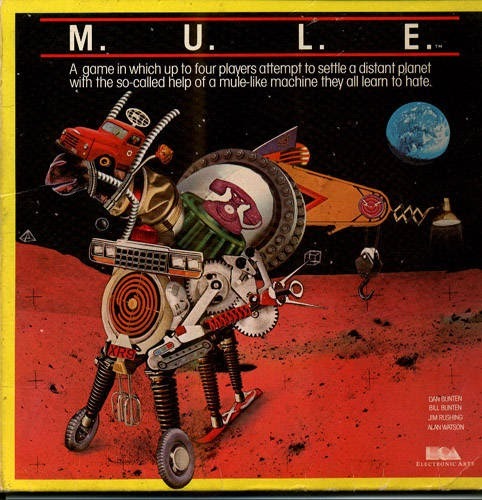
The Games DB
Bunten later founded the software company Ozark Softscape, which caught the attention of Electronic Arts founder Trip Hawkins; Bunten partnered with EA and developed the title M.U.L.E. for the Atari 8-bit family of consoles. The game benefitted from Atari’s four controller ports and was one of the first multiplayer games for the system. M.U.L.E. was later ported over to the Commodore 64 and developed a wide cult following. It only sold around 30,000 units, however, its popularity grew over time and became a widely pirated game.
Success after M.U.L.E.
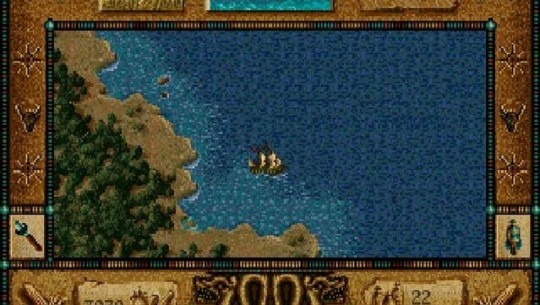
GOG
After M.U.L.E.’s success, Bunten went on to assist in the development of 12 games in total, ten of which had multiplayer support, including games such as Robot Rascals, Heart of Africa, and Modern Wars. Many of these games were revolutionary and arguably ahead of their time, with Modern Wars being one of the first games to support two players playing online via a dial-up modem. Modern Wars sold poorly, as it was released in an era where very few people possessed modems.
Bunten intended on creating an online game that would have been similar to the later game Civilization, however Ozark Softscape didn’t wind up going with the idea, and the title became The Seven Cities of Gold, an offline strategy title that focused on resource management. The game wound up becoming incredibly popular, selling more than 150,000 copies.
Bunten eventually left EA to work for MicroProse, allegedly because EA’s CEO Trip Hawkins didn’t believe in pushing production of games onto cartridges was a good idea, whilst Bunten felt otherwise. From there, Bunten developed a computer version of the board game Axis and Allies, which became the 1990 game Command HQ, a modem-based online grand strategy wargame. In 1992, Bunten developed her second (and final) game for MicroProse, a 4-player network/modem war game entitled Global Conquest. The title was revolutionary, as it was the first video game by a major publisher that featured 4-player online gameplay.
Later Years

Reddit
In 1997, Bunten shifted her focus to online multiplayer games with the creation of Warsport, a remake of Modem Wars that made its debut on the MPlayer.com gaming network. Less than a year later after Warsport’s release, Bunten was diagnosed with lung cancer and tragically passed away on July 3, 1998. Two months before her death, however, Bunten was awarded the Lifetime Achievement Award by the Computer Game Developers Association. At the time of her death, Bunten had been working on the design for an online version of M.U.L.E.
Bunten was a true pioneer for the video gaming industry and is still regarded today as one of the greatest game designers of all time. She was also the first notable trans woman in the video game industry. Bunten was especially influential to the realm of online gaming, and her success with games like M.U.L.E. and Seven Cities of Gold has even led people to believe she was the inspiration behind incredibly successful MMO titles like World of Warcraft. Bunten was one of the most influential game designers of all time, and the gaming industry would likely not be what it is today if it was not for Danielle Bunten Berry.
--
At Epoch Xperience, we specialize in creating compelling narratives and provide research to give your game the kind of details that engage your players and create a resonant world they want to spend time in. If you are interested in learning more about our gaming research services, you can browse Epoch Xperience’s service on our parent site, SJR Research.
--
(This article is credited to Ben Price. For as long as he can remember, Ben has always loved playing, discussing, and writing about video games. Since receiving his B.A. in English, he now writes about them for a living.)
1 note
·
View note
Text
Grateful Dead Monthly: World Music Theater – Tinley Park, IL 7/23/90
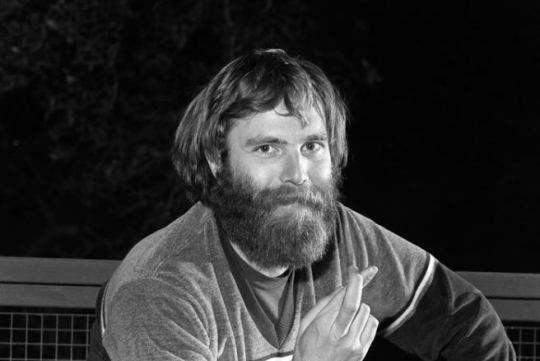
On Monday, July 23, 1990, the Grateful Dead played a concert at the World Music Theater in Tinley Park, Illinois. It was keyboardist Brent Myland’s final show before he died at his California home three days later from a speedball overdose.

The World Music Theater was/is an outdoor venue in Chicago’s near southwest suburbs. It was later renamed the New World Music Theater, the Tweeter Center, and the First Midwest Bank Ampitheater; it’s currently named the Hollywood Casino Ampitheater and owned by Live Nation. I’ve been there several times, and don’t have anything complementary to say about it. It’s corporate and characterless. The pavilion is ok, but strictly policed, and the lawn is massive, but view-obstructed by skyboxes built down from the roof, which also muffle the sound. Lot scenes outside are strictly prohibited, and concessions inside are nightmarish (as in, you could miss an entire set waiting for an overpriced beverage).

The World opened on June 2, 1990 with a Cher concert and soon hosted Kiss (Hot in the Shade tour), David Bowie (Sound + Vision greatest hits tour), and Depeche Mode (World Violation tour) before the Dead and hordes of ‘heads descended in late July for a three-night run. I attended the second night, 7/22/90. Before gametime, ticketless fans charged up the hill (check out the photo above) from the parking lot and vaulted the chain-link fence, only to be quickly and heavily tackled by security. Torrential rain then turned the new-ish sod into a literal mudslide – a buddy and I, both huddled under garbage bags, spent the entire night dodging folks running from behind and sliding by on their bellies. There was a bad vibe to that place (still is), and the band didn’t help with a dull playlist and uninspired playing. Easily, the worst GD show that I ever saw. I was glad when it was over, and afterwards stopped paying attention to them for nearly fifteen years.

born_crosseyed echoed some of those sentiments in his Live Music Archive review of 7/23, saying “Tinley Park sucked. There was a balcony built into the ampitheater building which acted like a sound baffle, causing the sound inside the building to bounce around all over the place. It sounded awful. The lawn sounded much better but was SO overcrowded that I could barely breathe, let alone move around.”
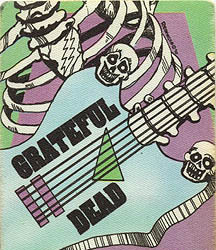
ECM suggested that we feature 7/23 as a tribute to Brent. I asked him for some comments about the show, and about keyboardist’s tenure with the band. Here’s his typically well-considered insight:
Last show of summer tour. Started in Bonner Springs, Kansas and ended in Chicago, IL. Some sheds (Bonner Springs, Deer Creek, Tinley Park), some small stadiums (Cardinal and Carter-Finley), and some big stadiums (Three Rivers, RFK, Foxboro, and Rich). Mostly a pretty solid tour, even if it didn’t reach the heights of the Spring East Coast tour. The band was still playing at a pretty high level. But the song selection was lacking. The band played 4 out of 9 songs from their “newish” album Built To Last.
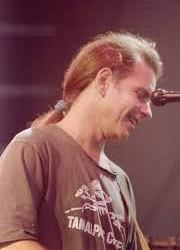
The first set starts with solid but nothing to write home about performances of Cold Rain and Snow, Picasso Moon, Never Trust a Woman (the final version), and Stagger Lee. There is an unusual and promising Bob Weir Trifecta to close the first set – Cassidy, Truckin’ > Smokestack Lightnin’. The latter two songs were very rare in the first set, and Smokestack was pretty rare itself – it was only played about three times a year since 1985, and this was the first of only two performances in 1990. The jam between Truckin’ and Smokestack has a very distinct Nobody’s Fault But Mine quote – another rarity (last time played was in 1985). Smokestack is quite strong actually. However, only two Jerry songs in the first set (Cold Rain and Stagger Lee). Was Jerry losing his voice? It was the last show of the summer tour. Maybe the acoustics were bad and Jerry couldn’t hear himself? Was he tour weary and ready to go home? East Coast summer tours were notoriously hot and humid.
Opening the second set with Victim or the Crime > Foolish Heart after doing the exact same thing at Bonner Springs (7/4), RFK (7/12), and Deer Creek (7/19) was probably not what the die-hards who came out on a Monday night for the tour closer had hoped for. Again, the performance is solid, but standard. Women Are Smarter follows, and Brent certainly shines, but this is not the kind of song with mind-bending jams that most fans are seeking. The crashing chords of Terrapin are majestic but there is no big jam as there was at Landover (3/15), Albany (3/24), and Shoreline (6/16) – or even Pittsburgh (7/8) and Deer Creek (7/18). This almost felt like a “we’re outta here” Terrapin, as did the final post-Space songs. Breaking tradition, the band ditches the usual tour closing encore Brokedown Palace in favor of The Weight, a new cover that the band debuted at Nassau on March 28th. This is only the seventh performance. Each band member takes a verse which makes it a bit more special. Almost prophetically, Brent takes the verse “I gotta go but my friends can stick around.” It’s the last lyric he will sing with the Grateful Dead as he died three days later on July 26, 1990 at the young age of 38.
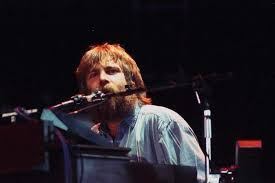
Ed sent some pics of this show’s entry in the Taper’s Compendium.
And he also sent this personal reflection on Brent’s tenure with the band:
I see a lot of love for Brent on my 31daysofdead Instagram account these days, and it warms my heart – not only because it is well deserved, but because it was not always that way, unfortunately. It may come as a surprise to many that there was a lot of hate for Brent during the 1980s. I think much of it had to do with the band’s sound and jam style in the 70s vs. the 80s. It was all too easy to point to the change in keyboard players to account for these differences. This turned into the inevitable and unfair comparison of Keith vs. Brent.
Brent could not shake the stigma of being the “new” guy, which is quite ironic because he held the keyboard seat longer than any member of the Grateful Dead. Moreover, many fans hated the sounds Brent chose for his electric piano and the songs he composed, complaining that they were “too cheesy.” Brent was quiet and sensitive and didn’t handle this well. He felt compelled to prove himself. In addition, he had problems at home in his personal life. He wore his heart on his sleeve. Sometimes he revealed just how tortured he was in his performances, as he famously did at the Berkeley Community Theatre on April 21, 1986.
I had heard of Brent’s substance abuse issues through tour gossip but had dismissed it as “just alcohol.” A specific rumor I heard was that he was going into rehab after the New Year’s run in 1989. However, that never happened and Brent’s playing during that run and the subsequent Spring tour was nothing less than stellar. As a result, I tended not to believe the rumors. That’s why Brent’s sudden death at the young age of 37 came as such a surprise to me. It was even more stunning that his death was due to a drug overdose from a speedball. It didn’t seem real to me. I had just seen three shows on the Summer 1990 tour – Bonner Springs, Louisville and Foxboro. All of them were strong shows and at no point did I have any reason to feel concerned about Brent’s health as I did about Jerry’s health during the Summer of ’86. Hell, we were always worried about Jerry. Nobody had their eye on Brent, the quiet one. I was shocked and devastated when I learned of Brent’s death. I never saw it coming. It was so tragic and so sad for him, his family, the band and all of the fans.
To me, the Brent haters had him all wrong. I am a piano player and I am here to say that the man had amazing keyboard chops. If you can’t get past his “cheesy” keyboard sounds, then you only need to listen to his beautiful work on the grand piano during the acoustic sets at the Warfield and Radio City Music Hall in the fall of 1980 to appreciate just how skilled he was. In addition, he had total command over a B-3 organ and played monster solos that blew the roof off of most venues. If you listen to the way the Dead played blues songs in the 70s vs. the 80s, there is no comparison whatsoever. Also, Brent’s soulful voice made him sound like Greg Allman sometimes. And, his high harmonies made the band sound like a choir of angels on things like the bridge section in Wharf Rat – particularly during the 1979-80 era.
Probably best of all is the musical connection that Jerry had with Brent. If you watch videos from the late 1980’s you will see a wide grin on Jerry’s face whenever he and Brent connected – and it happened quite often. Many believe that Jerry, who looked quite healthy after recovering from a diabetic coma in1986, relapsed into drug addiction shortly after Brent’s death, which resulted in his own death only five years later. It is certainly quite plausible, making Brent’s death all the more tragic. I have a great fondness for the Brent years and feel so fortunate that I was able to see him perform many times. Thank you, Brent.
And thank you, Ed.
You can transport to the Charlie Miller remaster of the soundboard recording of 7/23/90 on the LMA HERE.

Rest in peace.

More soon.
JF
from WordPress https://ift.tt/2P24p5H
via IFTTT
0 notes
Text
The Real Commander-in-Chief’s Trophy

Hey everybody, I’m continuing on with this series taking a look at three-way rivalry games and how things would have gone if they’d had been played from the beginning.
If you want to check out my post on the Florida Cup, click this link.
The Commander-in-Chief’s Trophy is perhaps the best known of the FBS trophies that are fought over by more than one team. Unlike the Florida Cup, it’s actually played for every season and many fans follow the Service Academies either as a curiosity or because they served. It helps that the final game of the regular season is always Army-Navy, which sometimes decides the trophy itself.
This will be a much easier prospect than reconstituting the Florida Cup out of whole cloth. The Commander-in-Chief’s Trophy was first presented in 1972 in an effort to get Army and Navy to play Air Force every season, so there isn’t too much prehistory other than the preceding decade or so. For the most part I won’t be tinkering with the standings too much, which wasn’t the case with my essay on the Florida Cup, where I had to use their parameters to synthesize the results of several decades of football.
Instead we’ll be celebrating the Trophy and the rivalries that have built up between the Service Academies, which are by far the most unique college football programs at the D-I level.
The Commander-in-Chief’s Trophy doesn’t follow the same rules as the Florida Cup, and makes an allowance for three-way ties, which is to give the trophy to the defending champions.
Just to make things a bit more interesting than reading the scores, which you can do on Wikipedia, I’ll be starting count from the first time Air Force played either of the Service Academies.
-
A bit of backstory
The football history between the Service Academies dates back to the deep and misty past, when the game was more or less a regional sport practiced by prestigious Northeastern universities. The United States Military Academy and the United States Naval Academy had played football going back to 1890, and by the turn of the century it was a big deal.
Army-Navy was up there with Harvard-Yale as one of the most important college football games of the era. The Army-Navy Game was regularly played at storied venues such as New York’s Polo Grounds to wild crowds, though it’s most often played in Philadelphia, the biggest major city roughly equidistant to West Point and Annapolis.
Army and Navy both claimed national championships in the first half of the 1900′s, and both schools would get huge boosts in talent during the World Wars. Army’s WWII squads were cited as one of the best in football history because they had a virtual monopoly on the best players of the era.
Just as these football programs were falling off from national relevance in the decade after WWII, the United State Air Force Academy opened its doors in 1954. The Air Force had previously operated under the jurisdiction of the Army, but were finally spun off into their own branch of the Armed Services at this time. And they would play football.
Air Force fielded a team in their second year in existence, playing the freshman squads of nearby universities. Just a few seasons later they were playing major University Division opponents, and winning. In 1958, the Air Force Falcons went 9-0-2, finishing the year with a #6 ranking in the AP Poll, a tie with #2 Iowa in the regular season, and a tie with #10 TCU in the Cotton Bowl. The next year, they finally played their first game against another Service Academy.
-
Air Force Joins the Fight: 1959-1971
In 1959, Air Force met Army at Yankee Stadium and played the Cadets to a 13-13 tie. Perhaps fittingly, the Army-Navy Game would then decide the (still hypothetical) Commander-in-Chief’s Trophy. The Midshipmen ended up pounding Army 43-12 in head coach Wayne Hardin’s first season.
Hardin would be the coach during Navy’s last real peak as a major player in college football thanks to players like Heisman winners Roger Staubach and Joe Bellino. The Midshipmen made the Orange Bowl following the 1960 season, and the Cotton in ‘63. They’d have won the national championship had they beaten Texas.
For the next several seasons, the Middies would dominate Army as well as Air Force in the few years they’d bother to play the Falcons. Navy’s first game against AFA was a 35-3 victory in 1960, they wouldn’t play again until 1966 and Air Force wouldn’t beat the Midshipmen until 1968.
Air Force and Army didn’t quite have the same success as Navy in the early to mid-60′s. After the Falcons’ breakout season in 1958, the first year under head coach Ben Martin, they spent the rest of the decade treading water, mostly aiming for a .500 record.
The Cadets weren’t all that bad in the 1960′s, usually doing better than .500, but their time as a truly nationally relevant program was already behind them. They experienced winning seasons under head coaches Dale Hall, Paul Dietzel, and Tom Cahill in that decade, but never did any better than 8-2 with no Top 25 finishes.
Wayne Hardin left Navy after the 1964 season, his first losing record with the Midshipmen. He was replaced by less capable men and Navy spent the rest of the decade with Army and Air Force, towards the middle of the pack among the football independents rarely impacting the national scene.

Commander-in-Chief Record
Navy: 7
Air Force: 5
Army: 1
Navy christens our new Commander-in-Chief era with five straight wins, which mostly come by virtue of beating Army. They’d likely have smoked Air Force had they played, but for the most part the Midshipmen ignored the Falcons. Army wrested control of the Trophy in 1964 by finally beating their archrivals.
From 1965 to 1971, Air Force would rotate playing Army and Navy. The Falcons would play the Cadets in odd years and Middies in even. During this period, they managed to get the better of their peers more often than not. They won their first Trophy in 1965 and would end up defending it four of the next six years.
The first two ties in the standings came in 1966 and 1968. By rule, the Trophy remains with the defending champion, so Air Force and Navy respectively get one trophy defense.
The *real* Commander-in-Chief’s Trophy was created for the 1972 season, which was to help ensure that Army and Navy would play the Falcons every year, which has been the case ever since.
-
Thalassocracy: 1972-1981
The first decade of the real Commander-in-Chief’s Trophy ended up being dominated by Navy. George Welsh took over the program in 1973 and turned the Midshipmen into the strongest of the three D-I Service Academies. The mid-70′s weren’t exactly strong, but by the late 70′s Navy was again occasionally in the Top 25. The Middies made and won the Holiday Bowl against BYU in 1978 on the back of a 9-3 record. From 1978 to 1981, Navy went 31-15-1 with three bowl appearances.
Air Force actually started the decade strong, making the 1971 Sugar Bowl and a Final #16 ranking in the AP. But the Falcons would begin to struggle by the mid-70′s. Longtime head coach Ben Martin retired following the 1977 season after four consecutive losing campaigns. Martin had coached Air Force through 20 of their 23 seasons.
Martin was replaced by Bill Parcells, who bolted for the NFL after one (bad) season. Ken Hatfield took over the Falcons in 1979, and began to rebuild what had by now become the weakest of the three Service Academies. Air Force also joined the Western Athletic Conference in 1980. It was harder being a football independent in far flung Colorado Springs, as most of their peers were scattered along the Eastern Seaboard. Being in a conference simply made more sense. The Falcons were the first of the Service Academies to give up their prized independence.
Army didn’t do a whole lot in the 1970′s. Under Homer Jones, Lou Saban for a year (right after he left Miami), and Ed Cavanaugh, they spent most of the decade fighting for a .500 record and didn’t reach it for the most part. The Cadets still managed to beat Air Force more often than not. As a result, in the two years that Army did managed to beat Navy during this span, they ended up winning the Trophy.
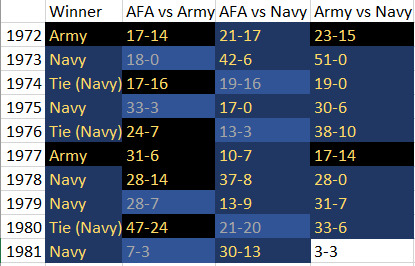
Commander-in-Chief Record
Navy: 15
Air Force: 5
Army: 3
Sometimes it doesn’t take being great, you just have to be better than the rest. That’s more or less how Navy ends up with a decade of controlling the Commander-in-Chief’s Trophy. The Midshipmen had a couple of good seasons that got them even in the rankings and a few bowls, but for the most part they dominated the series because Army and Air Force were no good.
It also has to be said that Navy got pretty lucky. There were three ties in the decade between ‘72 and ‘81, and the Midshipmen happened to be the previous holders each year, so they were able to retain possession. Up to this point, Navy has retained possession 4 out of 5 times when there was a tie in the standings.
-
Air Superiority: 1982-2002
Ken Hatfield proved to be a very capable coach. It took him three years to get all of his pieces in order, but by 1982 the Falcons were ready to sway the balance of power among the Academies. Air Force went 7-5, and then beat Vanderbilt in the Hall of Fame Classic to ensure their first 8 win season since 1970. It was also their first time beating Army and Navy in the same year since 1971, snapping their long losing streak for the three-way Trophy.
Hatfield’s Falcons outdid themselves the next year, going 10-2 with a win over Ole Miss in the Independence Bowl and a #13 ranking in the AP Poll, their highest since Ben Martin’s first season in 1958. It was good enough for Hatfield to snag the Arkansas job.
Hatfield was replaced by former-OC Fisher DeBerry, who had clearly been taking notes on how to win in Colorado Springs. Air Force continued to rise, going 8-4 with another Independence Bowl win in DeBerry’s first season at the helm. 1985 was the apex. The Falcons raced out to a 10-0 start, which included a solid win over #15 Notre Dame. Air Force climbed up to #4 in the polls before a heartbreaking loss to #16 BYU in Provo ended their national championship aspirations. The Falcons ended the year 5th in the Coaches Poll and 8th in the AP. It was the last time that a Service Academy had any real shot of claiming a national championship. It was a new high water mark for Air Force, who also added their first ever conference championship to their trophy case.
Air Force would continue to be a force in the WAC for the rest of DeBerry’s long tenure. The Falcons made bowls in 5 of 6 seasons from 1987 to 1992, including four straight appearances in the Liberty Bowl. The Falcons claimed their second ever WAC title in 1995, and made an appearance in the Copper Bowl. In 1997, Air Force managed a 10-3 record, but in a diluted WAC they didn’t move the needle nationally. The next season, the Falcons went 12-1 again. With a win over BYU in the short-lived WAC Championship Game, they earned their first ever outright conference title, and beat Washington in the Oahu Bowl to finish 13th and 10th in the AP and Coaches Polls respectively.
Air Force’s WAC title in 1998 would end up being their last season in that storied league. The Falcons became a founding member of the Mountain West Conference the next year, and have remained members ever since.
Like ships passing in the night, just when Air Force began to play well, Navy began to lose steam. George Welsh left for Virginia after the 1981 season and became the most successful coach in UVA history after a 20 year career. The Midshipmen were rather mediocre during Gary Tranquill’s four years in Annapolis, but they really began to fall off after that.
Navy spent a decade in the wilderness from the mid-80′s to the mid-90′s. They lost 11 straight to Air Force and mostly ceded the end of season rivalry back to Army. Charlie Weatherbie was hired in 1995, and temporarily turned around the Middies’ fortunes. Navy went 9-3 in 1996, it was their first winning record in 14 years and their best record since 1978.
Weatherbie’s success didn’t last, after a 7-4 campaign the next year, the Midshipmen slid back into irrelevance. Weatherbie was relieved of duty midway through 2001 after going 9-32 in his last three and a half seasons.
Under head coach Jim Young, Army cruised through most of the 1980′s. The Cadets had winning records in six of seven years from 1984 to 1990. They went 8-3-1 in ‘84 with a win in the Cherry Bowl over Michigan State. The following season, Army went 9-3 with a Peach Bowl victory against Illinois. In 1988, the Cadets managed another 9-3 record, this time losing by one point to Alabama in the Sun Bowl. When Young retired after the 1990 season, he was the final coach at West Point to leave the job with a winning record.
Bob Sutton somewhat successfully guided the Cadets through the 90′s. Army was usually around a .500 record with the exception of 1996, when they stormed to a 10-1 regular season before losing to Auburn by a field goal in the Independence Bowl. The Cadets joined Conference-USA in 1998, becoming the second Service Academy to give up football independence. They immediately began to play worse, earning consecutive 3-8 records before Sutton left.
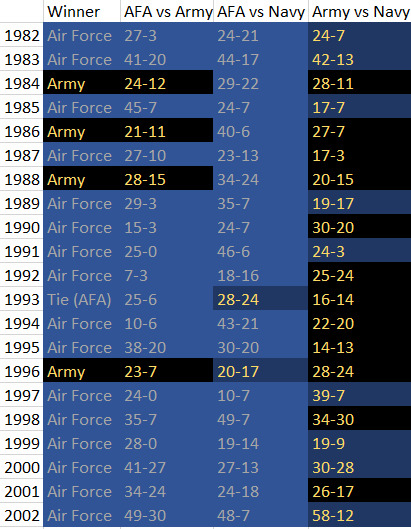
Commander-in-Chief Record
Air Force: 22
Navy: 15
Army: 7
It should go without saying that Air Force absolutely dominated the Commander-in-Chief’s Trophy during this time.
Army managed to match the Falcons in the 80′s for the most part, but after Jim Young’s retirement, Air Force really began to pull ahead of its brother Academies. In 1995, the Falcons passed Navy for the most Trophy wins. Army got the better of the Midshipmen in this era, but Air Force really dominated the Midshipmen, winning all but two games in the 21 year span.
The Falcons did most of their winning without any aid. There was only one three-way tie among the Academies in this era, which naturally went to the Falcons because they held the Trophy almost the entire time. From 1989 to 2002, the Commander-in-Chief’s Trophy only left Colorado Springs for one year, following Army’s breakout 1996 campaign.
-
Naval Supremacy: 2003-2009
Paul Johnson was hired by Navy in 2002 to replace the ousted Charlie Weatherbie. Johnson was the best coach in Division I-AA, having led Georgia Southern for the previous five seasons. He guided the Eagles to a 62-10 record in that span and two national championships. It only took him a year to get his flexbone offense running in Annapolis.
From 2003 to 2007, the Midshipmen went 8-4 or better every season and went undefeated against Air Force and Army, completely reversing the trend of the last two decades. Navy’s 10-2 record in 2004 earned them the #24 spot in the final rankings, their first end of season ranking in the Coaches Poll since 1978, and first in the AP since 1963.
In 2007, the Middies beat Notre Dame for the first time in 43 years, a painful streak that predated the advent of the real life Commander-in-Chief’s Trophy. Paul Johnson had beaten all 3 of Navy’s main rivals for the first time since 1960. Johnson accepted the Georgia Tech job following another 8-4 finish, and was replaced by disciple Ken Niumatalolo.
Under Niumatalolo, the Midshipmen picked up right where they left off with Johnson. They’ve easily been the most consistent of the Service Academies in the new millennium.
Air Force continued to roll through the early 2000′s, but once again, when Navy began rising the Falcons began to drop out of the sky. From 2004 to 2006, Air Force suffered three consecutive losing seasons, one more than they’d suffered under DeBerry’s entire tenure up to that point. DeBerry retired after the ‘06 season and was replaced by Troy Calhoun.
Calhoun was immediately successful in Colorado Springs, and Air Force won 8 or more games in his first four seasons. The Falcons didn’t immediately start beating Navy, but that would come soon enough.
Meanwhile, Army hit rock bottom. The newly renamed Black Knights hired Todd Berry away from Illinois State in 2000 but just never got any kind of momentum going. Berry’s disappointing tenure lasted three and a half seasons and ended with a mid-season sacking after accruing a horrific 5-35 record.
Bobby Ross was brought in for the 2004 season, but even the veteran coach who’d won a national championship at Georgia Tech wasn’t able to turn things around. Army left Conference-USA after the ‘04 season but it didn’t change the quality of the team. Ross retired after 2006, managing only 9 wins in 3 seasons. Stan Brock’s two seasons with consecutive 3-9 records are best forgotten.

Commander-in-Chief Record
Air Force: 22
Navy: 22
Army: 7
Navy’s 7 consecutive wins over both Army and Air Force between 2003 and 2009 pulled them back even with Air Force in our tally. Army managed only one win against either team in this span over an equally hapless Falcons team in 2004.
The Black Knights are more or less out of the running to really ever take control of the all-time series for the Trophy unless a momentous shift in the Service Academy universe happens.
Funny little side note: all three schools got new head coaches in 2007. Two of them worked out, one very much didn’t.
-
(Relative) Parity: 2010-2019
Troy Calhoun and Ken Niumatalolo have done amazing jobs keeping the programs they inherited strong, and Air Force and Navy began trading off wins for most of the 2010′s. The Falcons took advantage of a slight dip by the Midshipmen in 2011, and then Navy returned the favor when Air Force suffered a few mediocre seasons in 2012 and 2013.
For the first time since the mid-80′s, two of the Service Academies were playing good football, the odd one out being Army. The Black Knights spent most of the decade wandering through the desert, and have been complete non-factor in the three way rivalry other than an upset over Air Force in 2012.
Rich Ellerson was hired in 2009 after guiding Cal Poly to two FCS Playoff berths. Ellerson managed to briefly turn things around in 2010, leading Army to their first bowl since 1996, though they didn’t beat either Air Force or Navy. The Black Knights couldn’t build on their first winning season in nearly 20 years, and Ellerson was fired in 2013 after going 8-28 in his final three seasons.
Army took a page from their rivals and hired another Georgia Southern head coach when they drew Jeff Monken away from the FCS. Monken took two seasons to get his ducks in a row before taking the Black Knights to the postseason once again. Army finished 8-5 in 2016, which included a momentous 21-17 win over Navy, snapping a 14 game losing streak, easily the longest in their historic rivalry. Air Force had already won the Commander-in-Chief’s Trophy, but that would change the following year.
In 2017, the Black Knights reclaimed the Trophy and finished the year 10-3. In 2018, they went 11-2, and finished with an 11-2 record and an incredible 70-14 crushing of Houston in the Armed Forces Bowl. Their final #19 ranking in the AP Poll was their highest since 1958, the illustrious Earl Blaik’s last season at West Point. Army was able to defend the Commander-in-Chief’s Trophy for the first time ever. The Black Knights weren’t able to make it a three-peat, but hey, baby steps.
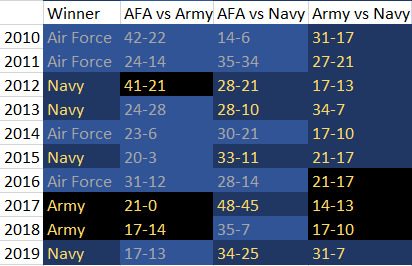
Commander-in-Chief Record
Air Force: 26
Navy: 26
Army: 9
With Navy’s victory in 2019, the Midshipmen again pull even with Air Force atop the all-time standings. Army still isn’t out of the single digits, but they’re close. Air Force and Navy obviously still did most of the heavy lifting in this past decade, but the Black Knights are at least making things interesting.
-
For the first time since at least the mid-1970′s, there is relative parity between the Service Academies. It’s hard to imagine that all three can maintain success in the long run. Winning at a Service Academy is like walking a tightrope. It has such unique recruiting challenges and quirks, it’s a miracle that Air Force and Navy have been as good as they have for this long. With Army joining the mix there’s likely to be a drop off by another, since all of these programs recruit from the same small pool of talent.
No matter what it’s always fun to watch their offbeat, old-school brand of football and occasionally see them knock off a big boy team. I wish them all the best moving forward.
-
Postscript: 1890-1959 and extras
I feel compelled to mention the real all-time standings for the Commander-in-Chief’s Trophy before I do anything else. Unlike the Florida Cup, it was begun at the most logical point in the three-way series and has been consistently given out each year.
“Real” Commander-in-Chief Record (Since 1972)
Air Force: 20
Navy: 16
Army: 8
Air Force leads the series since 1972 because Navy’s relatively successful years in the 1960′s aren’t counted.
1959-2019 No Ties
Air Force: 24
Navy: 22
Army: 9
Navy was the greatest beneficiary of ties in the series, retaining the Trophy 4 out of the 6 times it happened. Without the ties going to the Midshipmen, Air Force has a slight lead in the all-time series.



Everything (1890-2019)
Navy: 50
Army: 44
Air Force: 26
Army outplayed Navy on the field during the early days of the rivalry before Air Force came onto the scene. It goes a long way to rectify the great disparity between the Black Knights and their other two rivals. Navy holds the edge in the all-time series, but Army is only 6 wins behind. Air Force, naturally, is far behind seeing as how the Falcons didn’t wouldn’t even found their school for 65 years after Army and Navy began playing football.
1890-2019 no ties
Navy: 46
Army: 39
Air Force: 24
Army was the major beneficiary of the no-ties rule if you count back before 1958. The Black Knights (the Cadets at the time) managed to secure the trophy in all five of the times that Army and Navy tied, having won the previous year in every instance.
Without ties, Navy still leads, but the gap has grown by one game between the Midshipmen and the Black Knights.
-
Thanks for reading. I have a few more of these to explore. They take a while to make so thanks for being patient.
-thecfbguy
0 notes
Text
Eli Manning is the best Super Bowl QB who was mediocre otherwise

Photo by Rob Tringali/SportsChrome/Getty Images
Few quarterbacks have ever been better in Super Bowls. Those guys were all great in the regular season too, though.
It’s not hard to make Eli Manning’s case for the Pro Football Hall of Fame.
Manning ranks seventh all-time in both passing touchdowns and passing yards. He won two Super Bowls during a 16-season career with the New York Giants and was MVP of both games. The other four winners of multiple Super Bowl MVPs — Tom Brady, Joe Montana, Bart Starr, and Terry Bradshaw — received, or will receive, a bust in Canton without controversy.
And yet, it’s not difficult to make the case that he wasn’t very good, either. He made the Pro Bowl just four times and was never once a first-team All-Pro.
There are a handful of other mostly mediocre quarterbacks who saved their best football for the Super Bowl. But Manning stands above the rest.
For 16 years, Manning was ... fine
Manning finished top 10 in the NFL in passing yards in seven of his 14 seasons as the Giants’ starter (Kurt Warner started the majority of 2004 and Daniel Jones the majority of 2019). He was outside the top 10 in the other seven. He never once ranked in the top three.
The only major passing statistic Manning ever led the NFL in was interceptions, something he did three times. He’s one of 11 quarterbacks to start at least 160 games in the last 16 seasons, and he’s dead last out of those 11 players in passer rating — behind Carson Palmer, Alex Smith, and Joe Flacco.
Manning’s career ended with 366 touchdowns, 244 interceptions, and an 84.1 passer rating in 236 games. For context, his brother Peyton Manning finished with 539 touchdowns, 251 interceptions, and a 96.5 passer rating in 266 games.
Peyton also won more than 70 percent of the games he started. Meanwhile, Eli’s starting record was as mediocre as it gets:
Eli Manning's career record is back at .500 (117-117)
the universe is at a balance once again pic.twitter.com/CqQourlHTg
— SB Nation (@SBNation) December 15, 2019
Eli’s play — helped by his Super Bowl credentials — was good enough to keep him in the Giants’ starting lineup for a decade and a half. It didn’t earn him many accolades and never a spot among the NFL’s elite, however.
Eli still got a sendoff reserved for only the most esteemed players. Even the NFL commissioner released a statement about Manning’s retirement:
Congratulations, Eli. pic.twitter.com/KjjYyWbRo5
— Roger Goodell (@nflcommish) January 23, 2020
Manning was as respected as any player in the league, despite his career being a perfect blend of averageness and greatness. It’s that contrast that means in five years, and likely several years beyond that, there will be debates about whether his Super Bowl performances warrant a spot in the Hall of Fame.
Manning was a different player in the biggest moments
In Manning’s two Super Bowl appearances, he beat the Patriots twice. That’s two of only three February losses for New England in the Bill Belichick-Tom Brady era.
Manning completed 66.2 percent of his passes in those two wins with 551 yards, three touchdowns, one interception, and a 96.2 passer rating. Few quarterbacks have ever performed better with the Lombardi Trophy on the line.
His most memorable moment was connecting with David Tyree on a play that resulted in the demise of the undefeated Patriots:
Because it's Eli Manning & David Tyree's birthday... (Feb. 3, 2008)@Giants | #GiantsPride |#SBXLII pic.twitter.com/35VSo6dBkE
— NFL Throwback (@nflthrowback) January 3, 2020
It’s the kind of play — along with his ridiculous throw to Mario Manningham four years later — that he only seemed to make at the most clutch time imaginable.
It wasn’t just the Super Bowl either. Manning had a 99.1 passer rating in the three playoff games leading up to Super Bowl 42, and a 103.1 in the three-game run to Super Bowl 46. In the latter, he led the Giants to an overtime victory on the road against the 49ers in the NFC Championship, despite being hit 12 times by a ferocious San Francisco pass rush.
That version of Manning was one of the best to ever play the game. He just didn’t perform like that in the regular season with any consistency. Only a few quarterbacks have ever had that kind of dichotomy between their play during the regular season and in the Super Bowl.
How many other QBs flipped a switch in the Super Bowl?
Manning’s career was defined by big moments on the biggest stage possible. But he’s not the only one who’s built such a reputation in the modern era of the NFL.
Nick Foles
Two years ago, the Philadelphia Eagles won their first ever Super Bowl largely thanks to their backup quarterback, Nick Foles. He was thrust into action late in the year when Carson Wentz suffered a season-ending knee injury.
After leading Philadelphia through its postseason slate, Foles capped his run with 373 yards, three touchdowns, and one interception in Super Bowl 52. He also caught a touchdown in the 41-33 win against the Patriots.
Foles joined Manning as one of only two quarterbacks to beat Brady in a Super Bowl. And like Manning, the superb performance that earned Foles Super Bowl MVP honors was much different than how he played during the regular season. Even with Foles’ Pro Bowl season in 2013 — in which he threw 27 touchdowns and just two interceptions — he has a career passer rating of 88.2. That’s well below his Super Bowl rating of 106.1.
He wasn’t able to recreate his playoff magic in January 2019. Then Foles had a nightmare the next season with the Jaguars. First he went down with a shoulder injury, and later he was benched shortly after returning to the starting lineup. His status as a Super Bowl legend can’t be erased, though.
Joe Flacco
Flacco’s three-touchdown, no-interception performance in Super Bowl 47 sparked “elite” conversations — both serious and farcical — for years.
Flacco in the regular season: 218 TDs, 141 INTs, 84.1 passer rating
Flacco’s 2013 Super Bowl run (4 games): 11 TDs, 0 INTs, 117.2 passer rating
The masterful postseason earned Flacco a then-record $120.6 million contract too. He wasn’t able to lead the Ravens back to the Super Bowl again before he was replaced by Lamar Jackson, though.
Doug Williams
After an unimpressive stint as the Buccaneers starter, Williams spent two years in the USFL. He was signed by Washington to be Jay Schroeder’s backup, but took the reins and led the team to a Lombardi Trophy.
Williams in the regular season: 100 TDs, 93 INTs, 69.4 passer rating
Williams’ 1988 Super Bowl run (3 games): 7 TDs, 2 INTs, 93.7
Williams threw for four touchdowns and 340 yards in Super Bowl XXII, netting him a 127.9 rating that was as high as his best-ever regular season performance.
Jeff Hostetler
Hostetler’s the only one on this list who wasn’t named Super Bowl MVP, but he had an argument for the award in Super Bowl XXV after throwing for 222 yards and a touchdown. The award instead went to running back Ottis Anderson for his 102-yard day.
Hostetler in the regular season: 94 TDs, 71 INTs, 80.5 passer rating
Hostetler’s 1991 Super Bowl run (3 games): 3 TDs, 0 INTs, 92.5 passer rating
Hostetler made it to the playoffs again three years and added another four touchdowns with no interceptions. That upped his career passer rating in postseason play to 112.0.
None of those players pulled off Super Bowl magic twice, though. That’s where Manning stands alone, and why his legend as a Super Bowl hero will be hard for any other mediocre quarterback to top.
0 notes
Text
Live Ledge #406: Best Albums of 2019
This was another great year in music. So great, in fact, that many hours were spent narrowing down the year's release into the standard Ledge format of the 40 best albums of the year. In particular, it was a year that really saw a resurgence in anthemic power pop. It was also a year that saw a number of psych-rock bands so widely expand their sound and songwriting that a two-record set was necessary. Here's my list, and look for another similar post featuring the great reissue and box sets of the year.
1. Mikal Cronin, Seeker. Every year there is a record or two that deserves to find an audience outside of its typical subgenre. This year it’s the latest by Mikal Cronin, a stunning record that retains the psych-rock template of his past yet showcases a giant leap in songwriting. This record should be all over mainstream rock radio.
2. Bob Mould, Sunshine Rock. After a handful of records featuring dark, ferocious rock closer to his Husker Du days than his more poppy records with Sugar, Mould’s latest finds him possibly as close to happy as we’ve ever seen him. Ok, maybe happy is too strong of a word. Whatever it is the attitude is different, although still accompanied by his trademark buzzsaw guitars.
3. Pernice Brothers, Spread the Feeling. The most welcome comeback of the year. Every band featuring Joe Pernice seemed to acknowledge one major influence missing from most Americana bands and that’s his love of ‘80’s college rock. Just imagine a country-tinged power pop band that clearly loves Echo & The Bunnymen, The Smiths, and Lloyd Cole.
4. The Muffs, No Holiday. Such a tragedy. Two years ago, Muffs leader Kim Shattuck suddenly found herself unable to grip a guitar. It turned out to be ALS. Determined to finish one last album she gave all she could even as she quickly deteriorated from the disease. Eventually she was leading recording sessions while connected to a breathing tube. Sadly, she died less than two weeks before the release of one of the band’s best albums.
5. Purple Mountains, Purple Mountains. Purple Mountains was David Berman’s first project since the demise of Silver Jews in 2019, and it was a stunning display of his quirky songwriting skills. Unfortunately, the personal demons that had always been present in his art turned his big comeback into a tragedy, as he took his life just weeks after the record was released to glowing reviews.
6. The Resonars, No Exit. In a year that saw power pop rediscover its balls, The Resonars proved they always had their share of testicular fortitude. And it’s all the work of one man, Matt Rendon, who has over the last two decades created six albums of this sort of catchy but raucous power pop.
7. Kiwi Jr., Football Money. Power pop’s closest relative just has to be jangle pop, and both genres are at its best when the songwriting is as catchy as a late ‘70’s Nick Lowe single. There’s hooks galore on this Toronto band’s debut release.
8. Wand, Laughing Matter. There’s always been a bit of a fine line between psych and prog, and those lines have definitely narrowed in today’s crop of prog-rockers. One proof is the return of the double album, which every psych band seemed to release in 2019. The strongest record of that sort may have to be Wand’s fifth record, which succeeds by actually stripping back their sound a bit.
9. Wreckless Eric, Transience. It’s been a real treat to see the resurgence of Eric Goulden in the last few years, as album after album have ranked as his best ever. The latest sort of comes closest to his solo performances, as he lays tracks and tracks of both clean and enhanced acoustic and electric guitars over backing tracks laid down by Amy Rigby, Cheap Trick’s Tom Petersson, jazz horn player Artie Barbato, and The Rumour’s Steve Goulding.
10. Tim Presley’s White Fence, I Have To Feed Larry’s Hawk. Presley reportedly spent four years recording what may be the masterpiece of his career. How to describe the finished product is not easy, though, as various influences and sounds flow in and out of each and every track, yet there is an intimacy here that makes it feel like Presley just whipped up this musical cocktail in one long, intense evening.
11. The Cowboys, The Bottom Of A Rotten Flower. Good old punk-influenced straight up rock and roll. Nothing more, nothing less. And when it’s as good and as catchy as this it doesn’t need to be anything else.
12. Twin Peaks, Lookout Low. Five years ago, this Chicago-based band’s fabulous record Wild Onion was described by one of the band members as heavily influenced by Exile On Main Street. This record’s classic rock influence appears to be the first two records by The Band. That’s not to say they sound anything like either the Stones or The Band. No, in this case there is a laid back feel to their guitar-based indie rock that feels as if it’s straight out of a Woodstock basement.
13. The Dates, Ask Again Later. Garrett Goddard has been a member of a number of bands over the years, including King Tuff, Personal and the Pizzas, and The Cuts. His first record heading The Dates may have just topped anything else he’s ever worked on in the past. The melodies and hooks just melt in your ears, and the musical accompaniment throws The Byrds, Big Star, Shoes, Smithereens and seemingly a dozen other bands into the greatest blender ever invented.
14. Wilco, Ode To Joy. After Tweedy’s pair of solo acoustic records, I think I was ready for a full blown rock and roll Wilco album. It has been a while, right? Unfortunately, Ode To Joy comes off as a full band version of those solo records. Don’t get me wrong. It’s good. It’s very good. It just wasn’t what I needed from a 2019 Wilco album.
15. Guided By Voices, Zeppelin Over China. Another year, another trio of Guided By Voices records. Their second wind as a band has been nothing but stunning, as evidenced by this double album of almost nothing but anthems.
16. Tijuana Panthers, Carpet Denim. Every year there seems to be a new band that showcases elements of surf rock in their punk-influenced lo-fi garage sounds. What a shocker to find out that this is their sixth album! What sets them apart from others like them, besides the strength of their songwriting, is the ocassional elements of doo wop harmonies. Who knew that The Buzzcocks and Dion could co-exist in the same song?
17. Peter Perrett, Humanworld. After no new tunes for over 25 years, we now have two records in three years by the former leader of The Only Ones! Like 2017’s How The West Was One this record succeeds simply because Perrett isn’t trying to recreate the glory days, nor is he attempting to jump on current trends. Instead he accomplishes what real artists do, which is to create a sound that fits the song.
18. Frankie and the Witch Fingers, ZAM. Another great psych rock double album that incorporates and combines all sorts of atypical influences, including kraut, prog, and even a little funk.
19. Sweet Things, In Borrowed Shoes, On Borrowed Time. It may be hard to find a more varied rock and roll album than this debut record, as it jumps around from blues to soul to country to glam rock. There’s cameos by Alejandro Escovedo and members of The Uptown Horns. It’s the most ambitious trashy garage rock record I’ve heard in quite some time.
20. Cherry Pickles, Will Harden Your Nipples. As their bandcamp states, “one guitar, two drums, the basement band you always wanted to start”. This trio proudly combines all sorts of “outsider art” into a minimalistic sound that would certainly impress the namesake of the record’s best song “I Still Miss Lux”.
21. Ty Segall, First Taste. The prolific singer/guitarist was a bit quiet this year, actually. Well, for Segall a quiet year is one that only features a studio album, a live album, and a box set of outtakes. What makes his only new record of the year stand out is that there reportedly is not a guitar to be found on it! No, it’s not a synth-pop record. In fact, it ultimately isn’t that much different than what we’re used to hearing.
22. Pale Lips, After Dark. Gotta love snotty, hook-driven garage-punk that’s clearly inspired by major doses of The Muffs and The Ramones mixed with spoonfuls of surf and Spector-era girl groups.
23. The Darts, I Like You But Not Like That. This record was not what I expected. At all. Who would have predicted that Alternative Tentacles would put out such a sexy collection of horror-punk?
24. CTMF, Last Punk Standing. Nobody has so proudly hosted the flag of ‘60’s garage-punk as Wild Billy Childish. Well, “proud” is probably not the correct word to use, as Childish is as cantankerous as The Fall’s Mark E. Smith. Yet he consistently puts out records full of simple yet catchy guitar anthems, and this one is no exception.
25. Jordan Jones, Jordan Jones. What happens when you take the pop/rock highlights of ‘70’s AM radio and ramp it up a bit with power pop energy? You get this wonderful debut record.
26. The Mystery Lights, Too Much Tension! A melting pot of different styles rarely mesh well, but this New York band’s second album somehow manages to roll in and out of genres. A synth track leads into a homage to the Stooges which is then followed by a ‘60’ dance party. How do they get away with it?
27. Juliana Hatfield, Weird. It’s only fitting that an album dominated by a theme of being a lonely introvert would be created by one artist playing almost every instrument. That’s the case of the latest Hatfield collection of originals, and it’s one of the best of her career.
28. Kevin Morby, Oh My God. Rolling Stone recently described the Kansas City native as a “secular guy with a spiritual side”, and that’s never been more evident than on his fifth album. RS goes on to compare this record to Dylan’s gospel years but it’s actually more similar to a record like New Morning, where Biblical imagery is referenced but not necessarily the main topic.
29. Drahla, Useless Coordinates. Post-punk also made a comeback this year, and one of the best purveyors of that sound is this trio of Wire fanatics. And like Wire there’s a bit of a ferocity in this record that’s missing in much of their post-punk cohorts.
30. Gino and the Goons, Do The Get Around. Take Chuck Berry, The Sonics, Motorhead, The Ramones, The Stooges and a few other “rawk’ legends and toss them into a blender and you get the dirty sound that Gino and the Goons have mastered over the course of five records. You know what you’re getting from these guys, but they always deliver.
31. Young Guv, Guv I & II. The side project of Fucked Up guitarist Ben Cook could be described as a lo-fi tribute to bands such as Big Star and Teenage Fanclub. But then out of the blue comes a synth tune that’s almost danceable. It’s just part of the charm of this double record.
32. Ravi Shavi, Blackout Deluxe. Some records are sleepers. They don’t work the first time you hear them. They may not even work on the fourth or fifth airing. Then suddenly you can’t stop listening. That’s the case with this new wave-influenced, Prince-obsessed, garage rock group.
33. ATOM, In Every Dream Home. Just like the previous record, ATOM didn’t work for me at first. Then suddenly I had to race to the stereo to crank up the volume. What changed? Well,it helps when the musicians are Australian indie rock heavy weights led by Crime and the City Solution’s Harry Howard.
34. Geoff Palmer, Pulling Out All The Stops/Brad Marino, Extra Credit. (Tie) I can’t possibly vote for one of these records to be higher than the other. The pair both were members of the The Connection and The New Trocaderos. Both of them are veteran power pop performers who have written more than their share of catchy tunes. And both may have put out the records of their careers.
36. Honey Radar, Ruby Puff Of Dust.. A lot of reviews of this Philly band compare them to Guided By Voices, but I honestly don’t understand why. Yet it’s what made me check them out, and I do appreciate their fuzzy psych-rock sound.
37. Titus Andronicus, An Obelisk. Produced by Bob Mould and recorded at Steve Albini’s Chicago studio, Titus’ sixth album is their most straight ahead to date, although as always leader Patrick Stickles’ lyrics are open to interpretation.
38. The Dream Syndicate, These Times. While most band reunions never result in worthwhile albums (or any new music at all), there are instances where the second run rivals the first. That’s the case with these leaders of the mid-’80’s “Paisley Underground”, and it’s mainly because they refuse to just rest on their laurels.
39. Jesse Malin, Sunset Kids. The teaming of Malin with Lucinda Williams may seem like a head scratcher, but it actually works! Not only does Williams produce the album, she duets with him on a handful of the album’s tracks. The end results may be quieter than a typical Malin album but the tunes are also as strong as a typical Malin album.
40. More Kicks, More Kicks. Haven’t I said that this was a year for great power pop? Here’s another one. This time it’s a UK group, and like the others I’ve highlighted there’s nothing wimpy here. It’s pop music that absolutely rocks.
After listening, please go purchase those tracks you enjoy! You can find this show at almost any podcast site, including iTunes and Stitcher...or
CLICK HERE TO DOWNLOAD THE SHOW!
Note: Tracks from the albums listed above were presented in reverse "Casey Kasem countdown" order. In two instances (Darts/Pale Lips and The Muffs/Purple Mountains), songs were erroneously flipped in error. I apologize for this mistake.
1. More Kicks, I'm on the Brink
2. Jesse Malin, Room 13
3. The Dream Syndicate, Bullet Holes
4. Titus Andronicus, Troubleman Unlimited
5. Honey Radar, Cornflake ESP
6. Brad Marino, Broken Record Baby
7. Geoff Palmer, All The Hits
8. ATOM, No Future
9. Ravi Shavi, Riding High
10. Young Guv, She's A Fantasy
11. Gino And The Goons, Pills In MY Pocket
12. Drahla, Gilded Cloud
13. Kevin Morby, OMG Rock n Roll
14. Juliana Hatfield, Staying In
15. The Mystery Lights, I'm So Tired (of Living In The City)
16. Jordan Jones, Rumors Girls
17. CTMF, You're the One I Idolise
18. Pale Lips, Some Sort Of Rock n' Roll
19. The Darts, Don't Hold My Hand
20. Ty Segall, Taste
21. Cherry Pickles, I Still Miss Lux
22. The Sweet Things, Dead or Worse
23. Frankie and the Witch Fingers, Purple Velvet
24. Peter Perrett, Love Comes On Silent Feet
25. Tijuana Panthers, Path of Totality
26. Guided by Voices, Your Lights Are Out
27. Wilco, Everyone Hides
28. The Dates, pictures with rene
29. Twin Peaks, Laid In Gold
30. The Cowboys, Female Behavior Book
31. White Fence, I Love You
32. Wreckless Eric, Strange Locomotion
33. Wand, Walkie Talkie
34. Kiwi jr., Murder in the Cathedral
35. The Resonars, The Man Who Does Nothing
36. The Muffs, No Holiday
37. Purple Mountains, That's Just the Way That I Feel
38. Pernice Brothers, Mint Condition
39. Bob Mould, Sunshine Rock
40. Mikal Cronin, I've Got Reason
0 notes
Text
HBO Oz 20th Anniversary Oral History

(GIF: HBO)
In today’s Peak TV landscape, television creators have a multitude of content-hungry outlets eager to attract an audience for their wares: Streaming services and premium cable compete alongside basic cable and network television, while viral video-generating Internet hot spots like YouTube and Funny or Die are cranking out original programming as well.
It’s a brave new world, one that began to take shape 20 years ago on July 12, 1997. That’s the date that Tom Fontana’s sprawling prison drama, Oz, premiered on HBO, setting a channel best known for replaying movies and the occasional cult comedy series like The Larry Sanders Show on a course to becoming a dramatic powerhouse that lived up to its famous tagline: “It’s Not TV. It’s HBO.”
And Oz was the kind of bold, provocative experiment that only could have aired on a restrictions-free cable network looking to shake up its image. Set in Emerald City, an experimental incarceration unit inside the fictional Oswald State Correctional Facility, the show offered an addictive fusion of gritty prison drama, dark comedy, graphic violence, and even a touch of soap opera romance. Oz‘s serialized storytelling and ensemble cast — J.K. Simmons, Eamonn Walker and Dean Winters were just some of the future stars who passed through Emerald City’s glass cells — attracted the attention of critics, as well as those within the industry. Two years after Oz premiered, HBO debuted a new show from David Chase called The Sopranos, and the rest is Peak TV history.
To commemorate the prison drama’s milestone anniversary, Yahoo TV talked with 13 key players in Oz‘s groundbreaking premiere and eight-episode first season. (Sorry, Keller and Beecher ‘shippers, that means no Chris Meloni, who joined in Season 2.) Read on to discover which famous hip-hop star played the role of narrator Augustus Hill before Harold Perrineau, how Simon Adebisi acquired his name (and famous hat) and the unsung heroine behind both Oz and the premium cable boom.
The Participants (In Alphabetical Order)
Kirk Acevedo (Miguel Alvarez)
Adewale Akinnuoye-Agbaje (Simon Adebisi)
Chris Albrecht (CEO of Starz; Former CEO of HBO)
Jean de Segonzac (Director of Photography; Director)
Tom Fontana (Creator/Showrunner)
Ernie Hudson (Warden Leo Glynn)
Terry Kinney (Tim McManus)
Darnell Martin (Director)
Tim McAdams (Johnny Post)
Jon Seda (Dino Ortolani)
Lee Tergesen (Tobias Beecher)
Dean Winters (Ryan O’Reily)
Luna Lauren Velez (Gloria Nathan)

‘Oz’ creator Tom Fontana (Photo: Getty Images)
Chapter One: The Wonderful Wizards of Oz
Tom Fontana never set out to be a premium cable pioneer. The Buffalo-born writer was a creature of network television, getting his start as a writer and producer on the beloved NBC medical drama St. Elsewhere, before collaborating with Barry Levinson and Paul Attanasio on NBC’s acclaimed police series Homicide: Life on the Street. It was during the making of Homicide that Fontana found himself contemplating what happens to criminals after they entered the penal system. That germ of an idea eventually grew into Oz, which he developed in collaboration with Levinson. As Fontana quickly discovered, his show never stood a chance at making it onto a broadcast network.
Tom Fontana: I grew up watching cop shows where at end of the episode the bad guy traditionally got arrested and went to prison while the cops sat around in the last scene and did a funny little joke. Then we all went to bed feeling [satisfied]. While I was doing Homicide — where the bad guy didn’t always get arrested — I thought, “Maybe the more interesting story is what happens to these people when they go to prison.” In David Simon’s non-fiction book [that inspired Homicide] there’s a section about a prison riot in Baltimore, and I decided to expand on it for an episode, [Season 5’s “Prison Riot”] and bring back some of the murderers we had seen in previous seasons. That was my first swing at seeing what writing a prison show might be like.
While developing Oz, I spent about two years going to prisons all over the country, and I saw that there were two kinds — these old Gothic horror chambers, and new, experimental prisons. But there was never a place where the two were together, and it was important to me that you had the old and the new butting up against each other. When I talked to prisoners who were in places like Emerald City, they were very clear that it was worse for them because they had no privacy. I found that very moving, and so that’s where Emerald City came from, and the idea of glass so that everybody could see everybody else at any given moment.
youtube
Back then there were only four networks, and none of them were the least bit interested in my version of a prison show. I sort of pathetically adapted it as I got each rejection. I can’t remember which network I pitched which version to, but one of them was set in a juvenile detention center, and another was a Club Fed, where it was rich white collar guys who been sent up the river. Once I really started to examine what I wanted to do, I went back to the idea of that Homicide episode, which was a down-and-dirty prison with all sorts of crazy characters.
I was lucky that Chris Albrecht at HBO was looking to start doing original material. At that time, HBO had a comedy side — they had Dream On and a few other comedy shows — but they hadn’t really had a drama side yet. Chris had the vision to say, “We need to expand the reach of our network.” He told me that the [network] had had success with prison documentaries, so he had an instinct that a prison show might appeal to his subscribers. He said, “I’ll give you a little bit of money to shoot a presentation, about 15 to 20 minutes, and let’s see what it looks like.”
Chris Albrecht: The show had been in development for quite a while before we were really even contemplating doing a lot of original programming. There was a change in management, and we wanted to ramp up our originals. We hadn’t ever done an hour-long drama before. I went to Tom and said, “Look, we’ve put you and Barry [Levinson] through the ringer here. I’m not going to ask you to make any more changes, but we need to shoot something, so, here’s a million dollars. Shoot as much of this as you can.”
Fontana: I probably shouldn’t say this, but I will — it wasn’t enough money! We shot it in Baltimore while we were shooting Homicide, so we would book a location and I would say, “Okay, we’ll shoot the Homicide scene here, and then we’ll shoot the Oz scene.” So, in a way, NBC paid for it a little bit, if you know what I’m saying.
Darnell Martin: I had directed a feature, [1994’s I Like it Like That], but Homicide was my first television experience. They gave me the script for “Sniper: Part 2,” and it was written like a film, with helicopter shots and blockaded streets. I kept trying to figure out how to do that for the budget and time that we had. Maybe that was a seller for Tom. He asked me to direct the Oz presentation.
Fontana: The cast of [the presentation] was different. Jon Seda and Terry Kinney were in it, but the part that Lauren Velez [now Luna Lauren Velez] played, Dr. Gloria Nathan, was played by Jennifer Grey. The reason I later made the change was I really felt like the cast was [too] white, and I also liked the idea of a Latina woman in the midst of all these men. And there was a different guy playing Augustus Hill than Harold Perrineau.
Martin: I cast Mos Def as Augustus. He was amazing. Amazing. He was recast. It was crazy! I begged and I fought — not with Tom. It was above Tom; Tom couldn’t change it. Harold is wonderful, but you know, Mos Def had something really special.

Harold Perrineau as Augustus Hill ‘Oz.’ The role was played by Mos Def in the original presentation (Credit: HBO)
Terry Kinney: Tom had cast me in a Homicide episode, [Season 4’s “Map of the Heart”] and he said that he’d always wanted to make up for that, because it was an indecipherable episode. I played an NSA mapping guy, and to this day don’t know what it was about! I remember meeting Tom and Darnell for the Oz presentation, and they were talking about a character that was a die-hard liberal in a way that seemed extremely naïve. I basically played the warden, whose name was still McManus.
Jon Seda: I worked with Darnell on I Like It Like That, and she raised the bar for me. I told her that anything she ever does, I’m going to say yes to it. Sure enough, they said, “Hey, listen, there’s a script that’s called Oz. It’s a presentation. Darnell Martin’s directing.” I said, “Okay, I’ll do it.” I didn’t even know what the role was. What a lot of people don’t know is that at the same time that I was shooting that, I was also shooting the movie Selena. So when I met with Darnell, I said, “You’re going to have to help me, because I’ve been living as this sweet guy Chris Pérez for a couple months already, and now I have to play this ruthless Dino Ortolani.” I didn’t know how I could do it, but she said, “Just trust me. Put everything in my hands and it’s going to be great.”
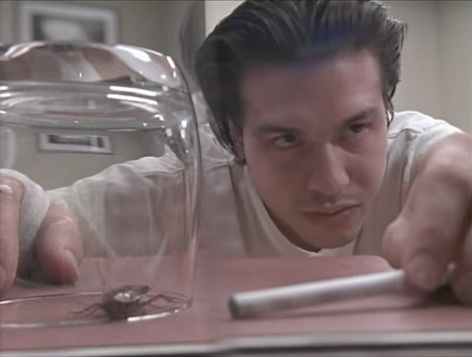
Jon Seda in ‘Oz’ (Credit: HBO)
Tim McAdams: I had built a pretty strong relationship with Pat Moran, who was the local casting agent for Homicide. When they decided to do the presentation for Oz, I auditioned and got cast. Nobody knew what Oz was or really thought anything of it; I just knew it was a show I got hired for and I was a young actor trying to work. We shot this presentation, and Mos Def and Jennifer Grey were in it, so I was like, “Wow! We got some names in this thing, and maybe it’s gonna get some traction!” I was honored to work with Jennifer Grey; I remember how excited I was and how friendly she was. And growing up in that era, having a chance to spend time around Mos Def and watch him transition to becoming an actor was really exciting. Sometime later I got a phone call about the show being picked up by HBO, and they said, “They’re gonna be doing a lot of recasting, but they’re going to allow you to play Johnny Post.”
Fontana: That initial presentation was more tonal; it was a real attempt to say, “This is the kind of subject matter we’re going to cover, and these are the kinds of characters we’re going to see.” You have to remember, this was before we built the Emerald City set, so it was all hallways and rooms, but it wasn’t what the show eventually looked like. Though, if you watch the first episode of Oz, there are a couple scenes that are from the original presentation, like the shower scene where Seda gets the s**t beat out of him by the COs. And I think the hospital scenes are from the original presentation.
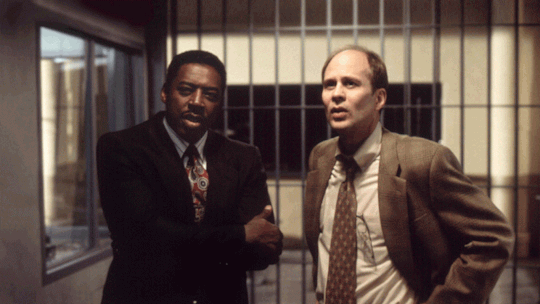
Ernie Hudson as Warden Leo Glynn and Terry Kinney as Tim McManus on ‘Oz.’ In the pilot presentation, Kinney played the warden. (Credit: HBO)
Kinney: Jon Seda and I were two of the survivors of that 15-minute presentation. I didn’t think that I was going to make it to the series. I remember that I was in Los Angeles doing something else, and I called Tom and he said, “You know what, you’re my guy. Let me work this out.” What I think they’d done is they wanted the warden to be African-American. They wanted Ernie [Hudson], and they had a relationship with him. So Tom made me the keeper of the Emerald City section of the prison. I was grateful [for] his loyalty.
Albrecht: At the end of the presentation, the lead guy, Dino, gets killed in his cell. I said to Tom, “He comes back next episode, right?” And they said, “No, he’s dead.” I go, “What do you mean, he’s dead? He’s the lead in the show!” They go, “That’s what’s happening here.” That’s when I realized that they were gonna change the rules.
Seda: What’s funny is that I remember that the death scene wasn’t supposed to carry over [to the pilot]. I was expected to come on and be a regular on the show. I think what happened was that HBO just really loved the idea of the lead guy actually dying. That kind of set off the trend on Oz.
youtube
Fontana: We got an eight-episode order. I was literally yelled at by friends of mine and peers of mine on the drama side of television. They said to me, “Why are you going to work over at HBO? It’s a movie channel. Nobody watches it.” And I said, “Well, who cares if nobody watches it? They’re going to let me make the show I want to make.” Literally people thought it would kill my career, that I made the wrong tactical move and that I should be doing Touched by an Angel! I’d like to tell you that I’m the visionary who had this incredible sense that cable would someday dominate the television world, but it wasn’t that. It was simply that there was an open door and I went through it.
Chapter Two: Populating Emerald City
Having walked through that open door, Fontana’s next task was assembling his prison population. At the time, and still today, Oz stands as a model og diverse casting; it’s large ensemble encompasses a multitude of races, religions and sexual orientations. And shooting in New York, Fontana tapped into a deep reservoir of veteran actors and fresh faces.
Fontana: Our feeling about the penal system in America is very cyclical; you go through periods of “[Prison] should be about redemption” and then “[Prison] should be about retribution.” At that time, it was about retribution and there was this sense that prisoners were bad people, and there were no heroes in those stories. The truth is, I wasn’t interested in writing heroes per se. And that was the great thing about Chris. I’ve often quoted him as saying, “I don’t care if the characters are likable as long as they’re interesting.” That was what I needed to hear because I wasn’t planning to make likable characters — I was planning to make interesting characters.
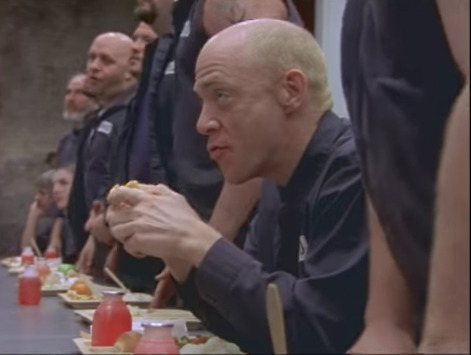
J.K. Simmons in ‘Oz’ (Credit: HBO)
Throughout the life of the series, we were able to get some wonderful, brilliant New York theater actors. We’d used J.K. Simmons in an episode of Homicide, so I gave him the part of Vern Schillinger because I knew he could do it. Dean Winters had done Homicide episodes, and was my favorite bartender before that, so I wrote Ryan O’Reilly specifically for him.
Dean Winters: Tom had come up with the idea of Ryan O’Reily by watching me bartend. When I was a bartender, I was a real hustler. My motto was, “If you leave my bar with cab fare, then I failed.” I would try and drain you of every dollar you had. I quit my bartending job and was in Los Angeles doing my first movie, Conspiracy Theory. It was a real leap of faith. Tom came out to visit, and we had a long talk. I told him, “You know, I really don’t think this acting thing is for me, it doesn’t feel right.” And he goes, “Listen: I was doing a little presentation for HBO about a prison, and I think it might turn out well for all of us.”

Dean Winters as Ryan O’Reily on ‘Oz.’ (Credit: HBO)
Ernie Hudson: The first time I heard of Oz was when I got a call from Tom. I did a six-episode arc on St. Elsewhere [in 1984], where Tom was a writer and producer. I got to know him a little bit on set, and when he called me about Oz he said, “Do you remember we talked about working together on a project?” I didn’t remember that conversation, but I pretended that I did. I based Leo loosely on Robert Matthews, the first black warden of Leavenworth prison in Kansas. I read a book where he talked about how father was a minister, and wanted him to go into the ministry. Later on, he said to his father, “This is my ministry.” I thought of it that way. He was a guy who finished college, but probably started at junior college, and went to night school. He’s worked his way up. He’s the guy who loaned money to the friend and never got paid back.

Luna Lauren Velez as Dr. Gloria Nathan on ‘Oz.’ (Credit: HBO)
Luna Lauren Velez: My first film was I Like It Like That, directed by Darnell Martin. She called me and said, “Do you want to do this show, Oz?” And I said, “Well, I’m doing this other show, [the Fox drama New York Undercover].” She said, “It might be a one off, I’m not even sure what’s going to happen with the character,” and then she said, “Jon Seda is doing it.” Jon and I had done I Like It Like That together, so I came onboard and they just kept asking me to come back. My understanding was that Jennifer Grey played Dr. Nathan in the [presentation]; everyone had glowing things to say about her, but said, “We decided to go a different direction.”
Adewale Akinnuoye-Agbaje: I went in and read for the casting director [Alexa L. Fogel]; there were only two lines and I read them in a British accent, an American accent, an African accent and a Jamaican accent just to show what I could do with it. She told me to wait, auditioned a few other people and then closed up shop and took me over to Tom’s office. He was in the middle of writing, and she told me, “Okay, he’s going to give you two minutes.” He didn’t even look up; I performed the lines in those various accents, and he said, “All right, stop. That’s enough.” That was it! He didn’t say I got the part — he didn’t say anything.

Adewale Akinnuoye-Agbaje in ‘Oz’ (Credit: HBO)
Alexa called me the next day and said, “Tom liked the African character, the Nigerian one. He doesn’t have one of those in the show, and he’d like you to play that.” I was a little bummed, because I wanted to play an American. Then she said, “What he wants to do is he’s going to write it as an American and he wants you to be able to translate it into the African character,” which was freaking great. When I met Tom again, he told me that he had a Nigerian friend he went to college with whose name was Bisi. So he said he would use part of my name and part of his friend’s name: that’s how Adebisi was born.
Fontana: Eamonn Walker was someone I didn’t know until he came into audition, but he was so incredible that it was a foregone conclusion he’d be part of the cast. I was obsessed with getting that character of Kareem Said right. And Eamonn was equally obsessive about getting it right. Some of the extras in his Muslim Brotherhood prisoner group were actual Muslims, so he would go once a week to the mosque, and pray and experience the whole religious side of what it is to be an Imam.

Eamonn Walker as Kareem Said on ‘Oz’ (Credit: HBO)
Kirk Acevedo: Originally Tom wrote Miguel Alvarez for someone else, and then I came in and I got the gig. I remember the exact audition: there were five actors ahead of me, and the scene was an emotional scene where you had to go in and scream and yell about some s**t. Every actor who went in before me screamed and yelled, and I was like, “Well, I can’t scream and yell, because no matter how good I can do it you’re gonna get tired of seeing the same fucking thing.” So I played it just the total opposite, and I stood out and got the gig.
Lee Tergesen: I had been doing a show for USA called Weird Science, which had just finished up, and I was working on Homicide for a couple of episodes. I was down in Baltimore and Tom said, “When you’re done, can you come up to New York? I want to talk to you about something that I have in the works.” So I went up and he and I started talking about something that ended up being Oz. We talked about a couple of different ideas he had for parts, one being a guard and the other one being this guy who ends up being in jail as sort of a fish out of water. I was like, “That sounds more interesting than a guard.”
Fontana: Initially HBO didn’t want me to cast Lee as Beecher. I was like, “Well, what’s wrong with him?” And they go, “Oh no, he’s a brilliant actor. It’s just not who we had in our head.” I said, “Well, he’s who I had in my head, because I wrote the part for him. So you’re stuck with him.” And then, of course, they were [ultimately] thrilled with him. But at first they were a little nervous, because he didn’t look like who they thought Beecher should look like. I never understood what that meant.
Albrecht: I do remember talking about that, because Lee was such a prominent character in the beginning. We were kind of new to it all. I had worked pretty closely with Garry Shandling on The Larry Sanders Show and Marta Kaufman and David Crane on Dream On, but this was really the first time that we had this size of a show, and this kind of serialized drama. So I think we were just babbling at Tom and Barry, who obviously had a lot more television experience than we did.
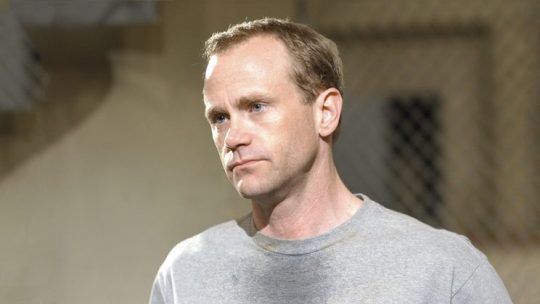
Lee Tergesen as Tobias Beecher on ‘OZ.’ (Credit: HBO)
Tergesen: In retrospect, I know that happened, but Tom didn’t make me aware of it at all in the beginning. But yeah, my understanding now is they [thought]: “This character is so important, and this guy has just being doing Weird Science.” And Tom was like, “Well, don’t worry — you’ll see, you’ll see.” I wonder what they think now!
Fontana: I had met Rita Moreno at a party at Elaine’s that was marking the end of The Cosby Mysteries, which she had been a regular on. I went up to her and said, “It’s such an honor to meet you — I’m such a big fan of your work.” And she went, “Well, if you’re such a big f***ing fan of my work, why didn’t you f***ing write me a part?” I went, “Okay, I will!” So years later, I took her and her husband to dinner and was talking about Oz. She goes, “It all sounds fantastic. What would I play?” And I went: “You would play the nun.” Well, she laughed for about a half hour and then said, “Tom, I’ve played hookers, I’ve played bandits, but no one’s ever had the balls to ask me to be a nun.” I also talked to her about my sister, who is from a very liberal order of nuns. In the summers, she would run the hospitality house at a prison near Buffalo. I always thought it was so incredibly ironic that my sweet sister was scheduling conjugal visits for prisoners. I told Rita all that, and she said, “Okay, just as long as I’m not going to be in one of those habits.”
Martin: Tom was fabulous in the way that I could say, “Tom, check this guy out. Is there a place for him?” And he’d say, “Yes, I’m going to write him into it.” There were some people that were just out there in the world, and not necessarily actors yet. He was really open to bringing people in, looking at them and trying to find the place for people who had this very specific New York vibe. With a network, you try to get someone hired and it takes so long. With HBO, it was fabulous: if Tom and I liked an actor, we would go to the one person over there and it turned around real quick.

Rita Moreno as Sister Peter Marie Reimondo on ‘OZ.’ (Credit: HBO)
Fontana: I was very clear in the auditions, and when people signed the contract that they might be asked to be nude, and that there would be violence. I didn’t want people who were going to be skittish.
Akinnuoye-Agbaje: Tom made it clear that this was going to be groundbreaking, and that he was really targeting authenticity, so that meant that it required certain actors and certain characters to go in places that may be uncomfortable personally. There were rape scenes and all kinds of complications that weren’t going to be comfortable. He made it clear that if you don’t want to do that, then you’re not the actor for the part.
Acevedo: No, he never warned us! I think there was a nudity waiver because there might be nudity. But every week it was like, “Alright, Kirk, today you’re gonna eat s**t out of the toilet.” Every week we were just like, “Dude, as long as I don’t get raped, I’m alright.” It wasn’t a scary thing, it was kind of titillating. It wasn’t like we were all nervous about it, because we would do it. It was more of like, “What’s he gonna have us do?” I don’t ever remember him warning me, but then I’m pretty sure there were people he didn’t have to warn because we were all game to do it.

Kirk Acevedo as Miguel Alvarez on ‘Oz’ (Credit: HBO)
Winters: I was there from the inception of the show, and I told Tom, “Look, I’ll do anything you want.” And I did. The smart actors knew that we were doing a show about a prison, not a show about a prep school, and it’s cable television. If you had half a brain you knew that this was not going to be everyone’s cup of tea, and it was not going to be a walk through the daisies. So that’s the way that I approached it, and obviously there were people who had a hard time with it. Some guys didn’t want to do this, some guys didn’t want to do that, but that’s the nature of the beast, I guess.
Kinney: I remember in the first episode that Edie Falco [who played a correctional officer] and I were supposed to have a love scene during an execution. As someone was being electrocuted, we were supposed to be having sex in a cell. As much as everybody took their clothes off on the show, both Edie and I felt it wasn’t the right choice, and asked if we could do it in a way that was less graphic. From that point on, that’s how my character was treated. I wasn’t one of the people who had to do [anything graphic].

Edie Falco as Officer Diane Wittlesey on ‘Oz.’ She later was cast on ‘The Sopranos’ but made occasional appearances on ‘Oz.’ (Credit: HBO)
Fontana: I have to say, over the course of the series, there was only really one actor who lied to me and said he would do whatever I asked him, and then when it came time he said, “No, I’m not going to do it.” But he wasn’t a regular and I was able to kill him off fairly quick. Let them guess who that was!
Chapter 3: Getting Into ‘The Routine’
Some TV shows take a little while to find themselves, but Oz‘s series premiere lays down the law about what viewers could expect from their time inside Emerald City. Written by Tom Fontana and directed by Darnell Martin, “The Routine,” swiftly establishes all the elements Oz would become infamous for, including densely-intertwined narratives, a parade of compelling characters, shocking acts of violence and a pervasive sense that nobody is safe within Oswald’s walls. Especially not the person you think is the main character…
Fontana: In terms of the writing of the first episode, Augustus was the first voice I heard in my head. In terms of the design of the show, Beecher was the first character that I came up with, and then McManus. One is there as a prisoner, and one is there as a warden. It just seemed like, for the audience, Beecher’s our Dante coming into the Inferno. He’s the one who’s guiding us into this world where we’re going to be exposed to these different cycles of violence.
Jean de Segonzac: The very first scene we did was in McManus’ office where he tries to put the glass on top of the cockroach. That was the very first shot on the very first day.

Kinney: I hated that scene. It was a trained cockroach; there was a cockroach handler, and back-up cockroaches. That’s a delicate area for me, cockroaches. We did endless angles on it, because Darnell did a lot of angles.
Winters: I knew no one on my first day besides Lee Tergesen. So it was like the first day of school at a juvenile delinquent reformatory. Everyone’s kind of looking around going, “Oh yeah, so you’re Alvarez, alright. I got to keep my eye on you.” Or “You’re Adebisi, alright, you’re big and scary, okay.” Or “You’re playing Said; okay, you’re kind of cool, but what’s up with the English accent?” In the first couple of days, it was just like, “What the fuck have I gotten myself in to here?” But in a good way, obviously.
Tergesen: Nobody really talked to me in the beginning. In the first four or five episodes, the extras would not talk to me. But once Beecher went crazy and attacked Schillinger [Episode 7, “Plan B”], all of a sudden everybody was like, “Hey Beecher, Beecher, Beecher, oh hey Beech!” It was so weird. It was like high school.
Fontana: This is a little piece of backstage history: we shot the pilot and the first season in Manhattan at what is now Chelsea Market, and what used to be the old Oreo cookie factory. The cafeteria had really high ceilings because the stoves had to go up to those windows to let out the smoke from baking the Oreos. We always had to cut if somebody left the cafeteria, because there was no way they could walk to the next set. It was all a bunch of different rooms.
McAdams: I’ll never forget the first time I arrived on set. You’d get off the elevator, and it would be like a normal office with people going about their duties. Then you’d turn the corner, walk down a little bit and you’re in prison.
Akinnuoye-Agbaje: We were about five floors up; the first four floors were offices, and then when you got to the fifth floor, it was literally Emerald City. At any given time, there were 300 or 400 extras in there. The cells were real cells, with the right size and proximity. It was hot, sticky and you felt claustrophobic, like you were in prison. In between takes, there were waiting room areas where we could go, but I chose to stay my cell for the whole time.
Seda: It was scary when the reality hit you that this is the life for so many; at least we were actors and able to walk away at the end of the day. All the details were incredible, and it just really added to making it just so authentic. The set itself was probably the biggest character of the show.
Hudson: It was like being transported to another world. I’d walk to work from the Upper West Side down to where we were shooting, and the contrast of being on the streets of New York and then going in and being on the set of Oz was cool.
Winters: People used to ask: “How did you prepare for the role?” It was very easy. You just got off the elevator, and walked down to the set. It was a f***ing prison! With the glass cells, you realized that everyone was being watched all day long. It was very unnerving. I remember Vincent Gallo came by the set one day, and he was looking around and goes, “Man, this set’s the f***ing cream.” Meaning, they really nailed that set. And my brother [Scott William Winters, who joined the cast in Season 2 as O’Reily’s brother, Cyril] actually spent the weekend on the set by himself, just to get that feeling of incarceration.
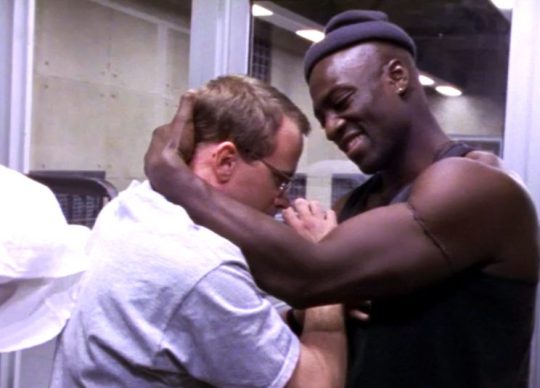
Adebisi and Beecher get to know each other in ‘The Routine’ (Credit: HBO)
Akinnuoye-Agbaje: For my scene with Beecher in the first episode, Lee and I were meeting for the first time as actors. It was kind of organic because his character was entering the prison, and it was a new world for him, whereas I’m a lifer. The thing for me was to establish that I own him. I own his life, I own his physical body; he was going to be my bitch and do exactly what I told him to do. I had the luxury of sleeping in my cell, and I would not wash. I became one with my own odor to stake my territory [despite] the complaints of the DP and the crew. Quite often they said, “Perhaps you should shower.” But I told them I was going to stake my claim. Whatever feeling I would evoke in the crew was exactly the feelings that were intended when the actors would come in my cell: repulsion, fear and disgust. It was lovely!
Tergesen: I don’t remember that! I do remember Adewale being ridiculous. He was so f***ing good in that part. I used to say that being in that cell with Adebisi was like being on a date from hell that lasted a month. I mean, he literally grabbed my penis more than women I had dated for a month.
Akinnuoye-Agbaje: I had two scenes in the first episode, and was meant to die in the second episode. But Tom liked what he saw [in the premiere], and kept liking what he saw. I’ve lived a life that gave me an insight as to what it was like to be in a gang in my teenage years, so I just brought that rawness to it. I wore my hat in the way that I used to wear when I was a teenager on the street myself. I knew that the tilt of the hat represented defiance. The costume and production were very much against me wearing the hat initially, because they wanted everybody in prison to be uniformed. I had to respect that, but I just knew that I needed to put my stamp on the character. That scene with Beecher was the first scene I shot, and when they said “Action,” I pulled the hat out of my pocket and put it on. When we wrapped and moved onto my next scene, the director said, “Wait a minute — he had the hat on. Now we have to keep it.”
Tergesen: I was so happy to get out of [Adebisi’s cell], but then I go to Schillinger’s cell. We didn’t rehearse at all on that show, so J.K. and I just met when we started shooting. The funny thing about him is when we’re playing those initial scenes, it’s like he’s the nicest guy on the planet. You know, he’s always smiling. It’s like, “I can trust this guy!” And then it just devolves. The branding thing ends up looking like I’m getting f***ed in the ass, which I didn’t realize was going to happen. Not that I minded, but when he was burning my ass it was causing me to like buck like I was getting f***ed. That was my ass, bro! No stunt ass.
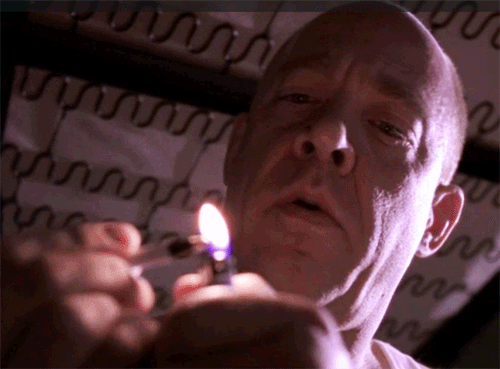
De Segonzac: One image I have, which I can’t get out of my head, is Tergesen’s ass two inches from my face while Simmons is branding him. I’m just going, “This is the weirdest way of making a living that I can ever think of.”
Fontana: When it came to shooting the first episode, moments like the swastika on the ass were defining moments for the show. And the moment when Dino is naked and getting beat up in the shower was, at the time, as brutal, a scene I’d ever seen on television. Those are, to me the moments that said to people this isn’t your father’s [TV show].
Seda: The shower scene was wild. It showed how quick things can happen in prison. Dino wasn’t afraid of anyone, and I was so into being that guy that I carried that with me. I literally walked onto set butt-naked. I walked right up, and stood there talking to Darnell as if I had clothes on. I said, “Okay, let’s go. Let’s shoot this scene. What do you want me to do? You want me to do this? Want me to be here? Want me to do this? Okay. Great, let’s do it.”

Velez: The storyline with Dino and Emilio [a prisoner dying of AIDS] really resonated with me because I have friends and a family member who are HIV positive. I also loved working with Jon. There’s one scene where I could barely keep a straight face because we had done that movie together, so there was something delicious about watching him play this wise-ass character. It’s really one of the few times in the pilot that you see Gloria engaging with one of the inmates in a fun, slightly flirtatious way.
Seda: Jose Soto did such a fabulous job as Emilio. What I love about that scene was how well it was written. It wasn’t that Dino just didn’t like Emilio because he had AIDS; Dino actually found compassion for him. The fact that he honored his request to take him out was done from compassion. That was a way for Dino to be in touch with his heart. It was just brilliant.
Fontana: When I talked with Chris Albrecht, he said, “What’s the one thing you’re absolutely not allowed to do on a broadcast television?” And I said, “Kill the lead in the pilot.” And he said, “Well, then go ahead and do it.” So I hired Jon and told him this is what’s going to happen. He was cool with it, and then I hired him on Homicide, to sort of compensate for the fact that he was killed off.
Seda: For Dino, there’s a point where what was keeping him afloat was the fact that he still has his family out there. There’s a scene where his wife comes to visit him and the kids are there playing and that’s when he makes the decision that it’s never going to happen. The reality of the fact that he’s here for life really hits him. Darnell and I added a moment where Dino taps the glass, kind of like he’s touching her for the last time as a family. I don’t know if a lot of people realize or catch it, but that tap on the glass to her is basically saying that’s the last time she’s ever going to see him. From that point on, it’s just a matter of time for Dino.

Winters: I remember reading the script and going, “Oh, Dino’s a badass!” And by the way, Tom named the character after me, because my nickname is Dino. Then all of a sudden he’s dead, and I’m the one who has him lit on fire. My first thought was, “I feel pretty f***ing good, because I’m not the one dying!” But I was also blown away that this was what Tom was going to do.
McAdams: To say I was excited [to kill Dino] would be an understatement. At that point, I didn’t realize that I would be the first inmate to kill somebody on Oz. That didn’t connect until way later, what I realized the show had a reputation for killing people off. The idea that I was going to be killing someone was just a thrill, and I knew that it was going to be memorable. The fact that they were killing Jon off in the first episode told me how edgy the show was going to be. No one’s safe, and episode to episode, you don’t know what’s going to happen, who’s going to die, and how it’s going to happen. You just don’t know. You have to tune in and watch.
Seda: Talk about going out in a blaze of glory, right? That’s what he did. It was pretty wild how it was shot. I remember seeing the dummy that they had made up in the makeup trailer, and I said, “Oh my gosh, that dummy looks just like me!” When we were shooting it, I remember just looking up and telling Tim, “Hey, hey, hey, don’t actually light it.” A couple times, he kept forgetting and actually lit it. I’m like, “Wait! You’re going to drop this on my face, dummy!”

McAdams: Dropping that match under the camera and watching those flames come up was the most exciting and invigorating feeling. To this day when I see it, I still get excited. Because that wasn’t CGI, it was a glass plate. Also, being given the creative autonomy again to just go in there and have fun with it. Johnny Post wasn’t wired right, so just dropping the match would’ve been one thing. But dropping the match like, “Boom, you’re gone,” was so fun as an actor, because we were so deep in the character at that point.
Fontana: I wanted to do a show in which the audience never relaxed, because I these men who are in prison don’t get a chance to relax. So if I’m really going to try to convey what they’re going through, then the audience should never be able to kick back.
Winters: I’ve never seen this before or since: the scripts would come out, and people would take one and rush to their dressing room, a corner of the set or go in a jail cell, and read the script and see if they’re still alive at the end. It was nerve-wracking.
Seda: I don’t remember any [farewell] party. I think it was just, “All right, you’re dead. Goodbye.” But Fontana came to me and said, “Don’t worry. I’m going to bring you on Homicide.” So that worked out great! [Seda played Detective Paul Falsone on the final two seasons of Homicide.]

‘OZ’ director Darnell Martin (Photo: Getty Images)
Chapter 4: The Future was Female
When the histories of cable’s rise have been written, they tend to dwell on the accomplishments of male showrunners like David Chase, Alan Ball and Shawn Ryan. While Tom Fontana is certainly part of that group, both he and Oz‘s cast are quick to note that one of the show’s key creative architects was a woman. As the director of the original pilot presentation, and then the series premiere, Darnell Martin established the innovative visual language that distinguished OZ from anything else on TV at that point. Having gotten her start as an independent filmmaker before landing television gigs, she sought to infuse the series with some of the same spontaneity and energy that defined that era of indie movies. Martin continues to alternate the occasional feature film, like 2008’s Cadillac Records, with a diverse slate of TV credits that includes such series as Grey’s Anatomy, Grimm and Blindspot. If Tom Fontana is among the founding fathers of the premium cable boom, than Darnell Martin is its founding mother.
Fontana: I’m not a director. I never aspired to be a director, and I have no real interest in it. So I rely very heavily on directors to create a visual style that goes with the storytelling, and I trust directors that I hire to bring their best game to the playing field. Darnell was there from the beginning. She and I had worked on Homicide together, and I thought, “Oh, she’s really got some stuff going on here.” I suppose back then the idea of a woman directing a male prison show didn’t make sense to some people, but it made sense to me because of Darnell.
Martin: The funny thing is, I didn’t want to do it at first! I had brought another project to Tom, and we brought it to ABC and ABC ended up not making it. I really didn’t want to do this show. Not because I didn’t like it, it was just because I had a thing about people in jail. I grew up in a very rough place, and I know a lot of people that really needed to go to prison because the neighborhood was a lot safer with them not there. I had my own very real and personal reasons not to want to glorify that. Then I said, “Let me go visit some [prisoners].” So I visited prisons, and said, “You know what? People in jail are human beings, and there but the grace of God go I.” I didn’t want to do it if they were going to be other than me. [But when I] saw people in prison and how they were living, that helped me emotionally get around dealing with the show and made me want to do it.
Albrecht: Darnell was such a critical part of setting the tone and the style; she worked with Tom on the production design and how to shoot this. I think we all set out to do something different visually. Drama has been a staple of network television obviously, and the fact that we [at HBO] were now entering that arena, the one thing that everybody felt was we really needed to differentiate ourselves. I don’t think if any of us on the HBO side had any idea that Tom and Darnell were gonna take that so literally, and just make something that startlingly different.
Winters: Darnell Martin is no joke. She came in with a vision, and her vision just happened to match Tom’s. I think she’s kind of left out of the conversation a lot of times when it comes to Oz, and she should really be part of the conversation, because she came in there as a woman, in a hyper-male environment and she laid down the law in this jail. She really did; and people took notice.
De Segonzac: She’s someone with a real vision. Tom was always telling me, “Just do your thing.” And I, of course, was trying to do Darnell’s thing. The [visual] theme was us being in these tight quarters, just participating. Basically, we just did whatever we felt like within the moment. As you’ll see, some scenes are all on a dolly and laid out, and others are completely handheld. For one shot, I remember being on a foot dolly, and going around the edge, while Jon Seda is trying to force feed a guy who’s dying of AIDS.

Jose Soto as Emilio and Seda as Dino (Credit: HBO)
Martin: There’s an idea in television that I don’t think makes the best television, and that is you have a plan before you get there. If you’re new at doing this, that’s probably helpful. The bad thing about it is that you can have a plan, and then all of a sudden the light is over here so you have to deal with shadows or maybe an actor has to go to the hospital. There’s always some kind of issue in this business. What you need to do, and what I like to do, is go to a place, sit in that place and come up with all the ways I could shoot it. I think shot lists are so reductive, because you can go through every scene [ahead of time], but in reality, you didn’t even work with the actor. You have an idea of blocking, but it’s only you know that knows exactly how you’re going to block it, and then you’re going to make that actor a puppet. That’s a big problem. These actors were very passionate about their characters, and had very strong ideas about their characters, and they all had their homework done when they came in. They were all willing to rehearse and find it and they were generous to one another.
De Segonzac: We had to go fast, fast, fast because there was so much to do. I remember that the dolly guys would just be sitting on the dolly [between takes], and I was like, “What the f**k are you doing? There’s not sitting around here.” At 7 a.m. all the cameras were built, the sound cart was ready and the actors were on set in costume. There was one time where we were running out of time, and Tom happened to be visiting the set. Normally, he wouldn’t be there, but he showed up and he was angry that we were going to go late. So I’m saying [to Darnell], “We’ve got to go fast, so if I do this and this, will you be happy?” And she was angry at me. Tom pulled me by the arm and said, “Why are you talking to her? Just do your thing. Just do whatever you always do.” 15 minutes later the scene was done.
Kinney: Sometimes somebody would be late, and that was a bad thing, because we had to start at 7am and finish at 7pm. If somebody showed up for the first scene late, then that person had sole responsibility for killing our day. We all understood that. For the most part, there was never a hitch in any of it. Darnell had a very specific shooting style; it was a lot of pushing in. The camera was its own character. It was cool to be a part of, but at the same time, you had to hit marks a lot in terms of your acting with that style. You had to turn at exactly the moment the camera arrived. She did a lot of things as one-offs, and that saves some time, but it also makes for very complicated shots. We used to get into little dust-ups about it, but it wasn’t anything that was bad. I would just say, “I’m trying.”
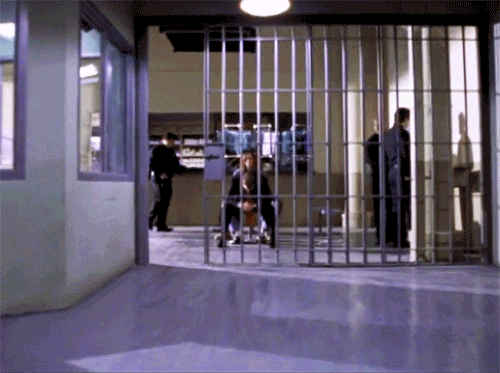
One of Martin’s signature push-ins (GIF: HBO)
Tergesen: She was a very strong personality, but I got along with her pretty well. Every once in awhile there would be something camera-wise [that was tough]. I remember I had a scene with Terry Kinney, and I thought, “Why would I stand right here in a place where he can look at me?” And she’s not letting up or even letting me have an idea about what I wanted to do. She’s rolling the crane across the big main room, and I’m like, “Is this about a crane shot?” She said, “No,” and of course it was about a crane shot. It was a cool shot! Sometimes you have to give up to the people who know what they’re doing.
Hudson: I like Darnell. I did not like the fact that she really liked Eamonn Walker more than me. That really annoyed the hell out of me. She kept praising him, and didn’t have a damn thing to say to me. Since then I’ve gotten to know her. In fact I did a series called APB for Fox, and she directed one of the episodes. I really like her a lot.
Velez: I can put any episode on, and say, “Darnell shot this.” She’s got a great eye; it’s the specific way that she’ll shoot something. Or those unexpected, beautiful tracking shots that Darnell does. It’s almost like a dance with her, and theatrical as well, because it has to be seamless.
Akinnuoye-Agbaje: Darnell would do these sweeping moving shots where she would literally introduce about 10 characters at the same time. There was a lot of movement, and you just had to do all your dialogue on the move, and interacting with other characters. It was very fluid style, which was tricky because as an actor you just have to be very ready, and very much engaged in your character so that you don’t miss a beat. You had to be in rhythm with the flow of the camera, because it moved a lot with Darnell. It was alive, and I think that’s what it was meant to capture.
De Segonzac: We shot everything on 16mm; there was never any question of going 35mm. Back then, the 35mm cameras were immensely huge, and very heavy. For the spaces we were crunching ourselves into, it never would have worked. We were just constantly doing stuff you could never do with a big camera or a huge dolly. At one point, I got enamored with the Dutch tilt [a canted camera angle], so I’d start my shot at a Dutch and then move back and straighten it out, or maybe even Dutch it the other way. I wanted to have fun. After a week of doing that, somebody tapped me on the shoulder and gave me a phone message from Tom, and it said, “Enough of the f***ing Dutch tilt.”

An ‘Oz’ Dutch tilt (Credit: HBO)
Fontana: The cube that Augusts is in was her idea. I kept saying to her, “We’ve got to find some place where he’s isolated, but I don’t want him to be in front of black curtains or something.” She was at some museum, and there was some kind of cube there. She told me, “You’ve got to see it, because that’s what I think we should use for Augustus.” Every director after her hated that cube! But I insisted that they had to use it in some way, shape or form because it was so expensive to build that I wanted to amortize it over the course of the series.
Martin: I was at the Whitney Biennial, and I saw this box in a room that was tilted on its side. I wanted to utilize something like that, and I brought that to the production designer [Gary Weist] who was phenomenal. From there, we started to riff; we riffed about 2001: A Space Odyssey, the way they’re kind of under this glass. We started talking the tricks we could do with the box and really show this idea of isolation, and no longer having any privacy. You can’t even go to the bathroom without the world videotaping you and watching you.
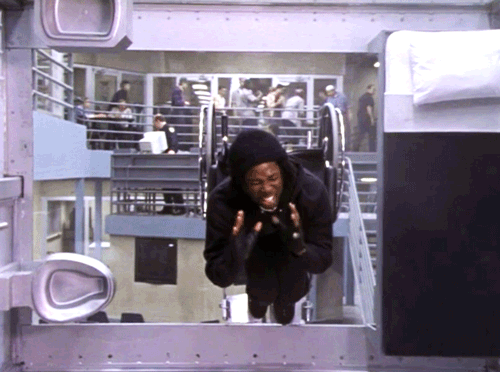
De Segonzac: I saw the same show at the Biennial. The box just looked like a silver box with windows; some kind of construction art. I was not impressed by this thing at all, and it didn’t occur to me to think twice about it. But she came while we were building the set, and she was talking all about this box that she saw. Perrineau’s character was supposed to be in a wheelchair, so he had to be able to get into so that his wheelchair would be latched down and the whole box would turn and move. We built a box that had a crank and a motor on it, and we could put Harold in there, strap him down, and send him upside down.
Seda: I got a chance to be in the box in one of the episodes where Dino comes back as a ghost. [Season 6, “A Day in the Death”] It was pretty wild. Harold had so much dialogue, and [I loved] the way he made it flow in that setting. I’m sure Harold would say he loved it because it made him become one with the character. That cube just became his M.O.
Tergesen: The crank made so much noise that you couldn’t shoot sound with it. So Harold had a lot of looping to do. I did a few things in the box, and, of course, J.K. and I did that Barry Manilow song, “The Last Duet.” [Season 5, “Variety.”] That was a song I was gonna do in the 10th grade with my girlfriend, but we never did it. As soon as I thought of it [for the episode], I knew Tom was going to love it. And then two years ago, I was sitting next to one of the guys who wrote the lyrics for that song. He said, “You used one of my songs in your show.” And I was like, “No s**t. I picked it!”

Kinney: I really liked the cube. In the two episodes I directed, [Season 3, “Cruel and Unusual Punishments” and Season 4, “Wheel of Fortune”], I did some very fun stuff with it. In my first episode, I remember making Harold be in smaller and smaller boxes, until he was inside a little dark thing. I didn’t find it an entirely successful exercise; I would have needed production values that we just didn’t have at the time. For the second one, I made the cube a big lottery thing. We spun it around with all the balls inside. I strapped myself in and tested it out before I put Harold in there to see if he was going to be able to talk and hang upside down a lot. He was amazing, that guy. He’s an acting machine. Every time he gets to the cube, he’s not only super-prepared with those monologues, but ready to take on any challenge to get it done.
Fontana: Where I get nervous is when a director creates a visual style that isn’t telling the story, because then I think they’re just showing off. But if you have a director who stages a shot like that great shot that Darnell does in the first episode where we see Emerald City for the first time, and the camera moves wide? That to me is excellent visual storytelling.
Martin: What’s great about Tom is that he understands filmmakers; he’s not trying to prove anything, and he’s really open to being collaborative. The problem now is that that we’ve dumbed down the idea of directing episodic TV. On a lot of these shows, anybody can walk in and do it. Directors like working for Tom, because Tom doesn’t consider them idiots. He created these wonderful stories, he had a great vision, and then he put it in the hands of other artists who gently put it through themselves and added new colors to it. I think he set a tone because he was not a dictator or micromanager. No one knows I directed the premiere. It started with a female director, and that was only possible because it was a forward-thinking man who thought that was important.
Chapter 5: Life in the Big House
As Oz’s first season unfolded, the cast and crew became comfortable inside this prison of their own making. Largely left to their own devices by HBO, a familial atmosphere flourished on set that was nourished and encouraged by Warden Fontana. As with all families, tensions occasionally arose, but nothing like the prison riot that closes out the first season.
Fontana: What was important for me, and what I always worked very hard to do, was take a character who was despicable and turn him into a sympathetic person. And then, just when the audience was rooting for that person, have them do something despicable again. So if you watch the series over all the seasons, you’ll see character like O’Reily who do the worst possible thing and then have this incredible moment of vulnerability. And then as a reaction to that, he does something worse! The other thing I promised to myself was that every character in Emerald City belonged there. I didn’t want to do the wrongfully convicted story. Not that that isn’t valuable; it’s just that I met so many men in prison who told me they were innocent that it felt like almost like a joke. It would also feel more mainstream to suddenly have a character in there that was innocent.
Kinney: In the first episode, Darnell saw McManus as one of those misguided, but well-intentioned educated white guys. He thinks everybody can be rehabilitated, and put back out onto the streets. But the prison system itself teaches you otherwise. Given that conundrum, this character was an anomaly in the prison. In the first episode, I was campaigning with Tom to change that. I said, “We’ve seen that guy, and he’s going to wear out. You’re going to lose interest. Let me change. Let the prison system seep into me. Let me become more and more one with it.” Slowly but surely, Tom agreed to start shaving my head a little more, to grow the beard, and to start to look a little more like a prisoner.
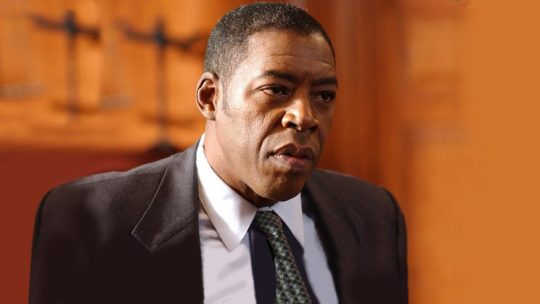
Hudson as Leo Glynn in ‘Oz’ (Credit: HBO)
Hudson: I thought Leo was as balanced a guy as you can get under those circumstances, but I’ve heard people say, “He was the worst. He was an awful guy.” I’m like “Really?” There was a website in the late ’90s where fans could give their comments, and I remember going online and some guy had said, “Leo seems to have a stick up his ass. That actually broke me of the habit. Even now, 20 years later, I don’t go online to find out what people think. The thing I take away from my character is — and I’m sure Tom would hate me saying it — but he was the dumbest warden! He was a well-intentioned warden, and he could be stern, but he never got to the bottom of anything. He had a murder a week and he never figured anything out. I’m like, “Can I just solve one of these frigging cases?”
De Segonzac: During the first season, there was only one accident, which I was the fault of. We were doing the riot scene in the Season 1 finale [which De Segonzac directed], and with 150 guys running around, you had to find someone each of them could do. Tergesen had the fire extinguisher and was spraying it all over the place. He was like, “Really?” and I said, “Yeah, it’ll be great, you’ll see.” There was this one young guy — who I think in real life was a violinist and he somehow got a part on the show — the guards beat him up, and they put the cuffs on him behind his back. The scene felt like it was about to lose energy, so he screams at the guards, “Get them off!” They grab him by the arms, but he’s handcuffed and that’s exactly the wrong thing to do. Now the guy is squealing, and I thought, “Wow, that’s pretty f***ing good.” But it turned out that the cuffs had cut him to the bone! I was very embarrassed.
Velez: I wasn’t in the riot episode at the end of Season 1, and that’s because Tom said, “I don’t want you to be in that episode.” Because the prisoners talked about Dr. Nathan a lot, and would be like, “Oh, Nathan’s hot.” He said, “I’m afraid it would have to get graphic. They’d wind up raping Gloria, and I don’t want that.” Which I thought was very interesting. In some ways, it would have been predictable; you would expect that to happen to the character. But then she could never go back there and I think there were all those considerations as well. We’d have to lose her, because there’s no way she would come back to work in this prison. No way at all. Tom had the wherewithal to think about the totality of the show, and being able to see it going beyond what we saw.

Velez in ‘The Routine’ (Credit: HBO)
Acevedo: At the end of every season, what Tom would do is sit down with you and say, “How’d you feel about your arc? Where do you feel that you could’ve gone or that you maybe want to go next season?” I’ve worked with everybody, and no showrunner has ever done what Tom Fontana has done. The whole storyline in the third season about Miguel being too white, and not Latino enough was something I brought up with Tom, because it was a big issue for me growing up in the South Bronx. He put all of that into the show.
McAdams: I just remember not wanting Johnny Post to go out like a punk. So I loved reading my death scene, and realizing they set him to go out in all his glory, cussing and fussing and telling people to kiss his ass. The fact that they decided they were going to chop his penis off and deliver it back as their message meant that I knew I’d spend the rest of my life being laughed at. My only request was that it was delivered in a big box, not a small box.
Velez: Tom was always really great about discussing where he thought something was going to go, and it was always in a very off-handed manner. At one point, we hung out and had steak and whiskey, and he said, “I’ve got something I’m thinking about, and tell me if it’s crazy. Would this woman ever fall in love with a prisoner?” And I said, “Absolutely.” He said, “I’ve spoken to other women and they said no.” I replied, “When you fall in love with somebody, sometimes you can’t help who that is. The more complicated the better. Please make that happen!” So she fell in love with Ryan O’Reily. I’ve never had a woman tell me that they didn’t buy it or that they thought it was inappropriate.
Fontana: Initially, we had a consultant who had been in prison, but he wanted to be a writer and he just would have preferred if I had just handed him the pen and said, “You can write everything.” So that was very short lived. All I can say is I that did two years of research, and I continued to read and talk to COs and ex-cons, so I kept having conversations about what was going on in prisons. The thing about prison is that no two prisons are the same, so I had a lot of room to make up s**t. But I also took my responsibility very seriously; I didn’t want anything to be salacious or sensationalistic just purely for that. Anything that happened had to come out of character. On the other hand, you also find out stuff that really happened, like a guy who worked in the prison cafeteria hated this other guy so he fed him broken glass. My attitude was if something was real, then it was fair game. Oddly enough, as the series went, I would get yelled at for something I didn’t make up, but people assumed that I had made it up.
Albrecht: We were certainly put back on our heels a few times [by the content], and I don’t remember if we ever actually asked Tom to change something or just voiced our concerns about things. We really were charting new territory here. We had no idea what was possible to do, and the content of Oz was certainly beyond any of the content of the movies that were on HBO.

Winters as O’Reily in ‘The Routine’ (Credit: HBO)
Winters: I’ll tell you one thing: I had two friends in prison during Oz, and they were like, “You motherf***ers got that s**t right.” Prison is a microcosm of our society, and a lot of bad s**t happens in our society every day. I’ve been on panels where I’ve heard this question from some white guy whose face is melting into his khaki pants, blue blazer and red tie: “Oh, is this really [accurate]?” It’s like, go f**k yourself. Have you ever been in prison? Have you ever even visited a prison? Because I’ve visited prison, and it is not a cute place. There is some horrific s**t that happens there. I don’t think Tom went deep enough. He could have gone so much darker, because the stories that we heard while we were making this show, would never even pass the HBO censors. So, you know, suck on that.
Akinnuoye-Agbaje: In terms of the sexuality and sensationalism, there were occasions where I felt it was not always necessary. But then there are occasions where it would go there because it was written from an authentic place. I think there’s a wonderful balance, and Tom was always open to that collaborative dance. We all trusted Tom. We didn’t necessarily like him, and I mean that in the best possible way. He’d done meticulous research so you knew it was not just some flippant, sensational kind of thing.
Martin: There’s a scene with Schillinger after he’s branded Beecher where he’s just talking to him. I said, “You know what I want you to do? I would like you to have your shoes off and your foot in his lap, and you’re making him give you a foot rub.” For some reason, that just seemed right. The branding had nothing to do with sex; it was about power. There’s such an intimacy to the foot rub, and J.K. just ate it up; he was tickling Lee with his toe. That scene explains to me, in a weird way, how I handled [the sexuality]. Sex, in general, is not an empty thing to me, and sex scenes are not about, “Lay on top of this person and bounce harder, and then it’s over.” It has to be about something. Beecher probably massaged his wife’s feet, you know what I mean? So that scene is about something other than power, because we just played that beat with Schillinger tattooing the swastika on his ass.
Kinney: When the romance between Beecher and Keller started [in Season 2], here were two straight guys that were being asked to engage in a graphic depiction of a gay prison couple. They were a little bit shy going into it; one of the things that happened was that everything was out in the open. Everything was shot in a wide open space, so there was no sense of, “Hey, this is a private set.” We would all stand at the monitors and watch this stuff. And they went for it. The whole dynamic in that building was “Go for it,” and that’s what those guys did. What was surprising was how it caught fire. That was one of the first things that became a really popular element of the show. There were a lot of viewing parties for those two.

Chris Meloni joined ‘Oz’ as Chris Keller in Season 2 (Credit: HBO)
Tergesen: I loved the part of the show. In my opinion, it was never about them being gay, it was just about them being in love. If you can find love in a place like that, you’re lucky. My first memory of Chris is that he came to set for a costume fitting, and he was wearing a Tool shirt. And I was like, “This guy seems like a tool.” I told him, “Listen man, let’s go have dinner.” So we went out to dinner, and I said, “You’ve seen the first season, so you know we’re trying to push the envelope. I know the tendency is for two guys who are not gay to try and skirt around it, but I have a feeling we’re going to be doing a lot of this and I think we should try and make it sexy.” Chris looked at me for 10 seconds and then said, “Wow.” But I feel like we did that; there were some amazing moments of tenderness [between them], and I love that it was just about the love. The funny thing is, just as an aside, he and I went to a Tool concert the other night!
Acevedo: We worked together twelve hours a day, and then we would go out four to five nights a week with each other. We were all in our twenties, and we saw each other at work and after work. We all hung out with each other in general, but there was a devious mentality with the inmates. Adewale would get these scenes where it would be like “Adebisi rapes this guy,” and we would be like, “What you going to do?” He would say, “I don’t know,” so we would give him [advice]. Like, “I think you should grab him by the hair or rip his pants.” That was the best part, because the material was so heavy and emotional. You can’t walk on set and be like that the whole day; you’d be so burnt out. It was easier to joke around during those moments.
Akinnuoye-Agbaje: There were several times when we had extras on the set where altercations would break out. They would! They were quickly broken up, but it was just the nature of the beast. When you’re being pushed to be as defensive as you can without actually being the actual prisoner, there were times when it would spill over. I know for myself, certainly with the guards or the warden, I wouldn’t mix with them. Because they were guards, you know what I mean? Many times there were blurred lines, and in the heated scenes you’d go overboard sometimes. That’s why you got such great chemistry and great work coming out of it.
Hudson: I knew Adewale [before Oz]. We shot the movie Congo in Costa Rica together and we became, I thought, really good friends. When I first got the show and found out he was going to be on it, I was like, “Great!” Then he became Adebisi and suddenly I go, “Who the hell is this guy?” He maintained that character for years. Towards the end, in the last couple of seasons, we went, “Okay, we can let our characters go. We do know each other.” There was about four years there where I don’t think I could even speak to him.
Velez: I remember the first time I met Adewale on set, he literally almost skipped towards me! He took my hand, and with the most incredible smile said, “I’ve been wanting to meet you.” I was like, “What?” We just walked hand-in-hand across the stage just gushing about each other, and this is this guy who plays Adebisi! Take your pick between him and Schillinger about which is more reprehensible. I had the same experience with J.K. when he was in the infirmary. At one point, he was sitting there and he had the most beautiful, glowing smile. It was interesting. Sometimes in the beginning I couldn’t put two and two together between the actors and the characters.
Kinney: I went out with Adewale all the time. People would recognize him immediately because of that little hat and everything else. He’s a beautiful man. We’d go to bars, and he was quite popular. I hung out with everybody, especially Tom and his posse — Lee and the Winters brothers.

Adebisi abiding in his cell in ‘The Routine’ (Credit: HBO)
Winters: At the end of the day, we were all just a bunch of kids, even the guards. Most of us were new to this. You would want to think that there was animosity on the set between the guards and the prisoners, and there might of been a little tension off set here and there. But the truth of the matter was that we were just a bunch of golden retriever puppies in a storm box going bananas. In between scenes and during down time, there were guys break dancing, having a push-up contests, working on their one-man shows and reading poetry. It was really like the Royal Fontana Company, a kind of theatrical experience during the day. Tom and his crazy roving company of just insane bandits, just going, “What the f**k just happened?”
Chapter 6: What Oz Hath Wrought
By the time Oz ended its six season run in 2003, HBO’s ranks of original programs had swelled to include such era-defining shows as, The Sopranos, The Wire, and Sex and the City. The larger cable landscape had changed as well: Showtime had ramped up its originals slate with Soul Food and Queer as Folk, and in 2002, FX premiered The Shield. In several cases, these descendants overshadowed their ancestor in terms of ratings and awards. Still, 20 years later Oz remains a singular TV series, and a foundational experience for everyone involved in its making.
Fontana: HBO didn’t bother us with ratings. If they did marketing or demographic research, they didn’t share it with me. The thing that Chris said to me was, “I don’t care if this show is talked about in the TV section of the newspaper. I want it on the op-ed page.” So anytime somebody on an op-ed page made a reference to the show, he considered that a 40 share of a Nielsen rating. He wanted HBO and the show in places where people who don’t watch television are looking. I had no idea what the ratings were; all I knew is that he said, “Let’s make more of them,” and I said “Yippee.”
Albrecht: I got a lot of comments [about Oz] from people who were my peers in the entertainment business, so I knew that people were paying attention to it. I think that was the first step towards having it be an impact. I don’t know how many subscribers we had at that time — 15 or 17 million maybe — but the fact that we were getting that kind that kind of attention for something that we had done for our programming strategies [told us] we were in uncharted territory. There was a bridge here we could continue to widen and build as long as we were prepared to make the investment.
Winters: Back in 1997, who had HBO? I didn’t. Did you? And given the content of the show, we were going to work thinking, “Are these people f***ing crazy? No one’s going to watch this.”
Tergesen: Right before it started to air, a bunch of us had this thought, like, “Oh my God, what the f**k are people gonna say when they see this thing?” And there were definitely some people like that. One of my favorite reviews was a review that said, “This show offends God and it offends me.” But then it came on, and it was such a great show. And it was a great show to be in New York doing, because people were so verbal. When the show was on, there was always a bunch of stuff happening with people on the street. People who had been to jail would be like, “Yo man, I love that show you’re doing, but I just gotta tell you — the sex stuff, it’s not like that.” Like really bro? You need to tell me this on the street? I wasn’t thinking about whether or not you had sex in prison until you just brought it up now.
youtube
Hudson: I got a call on to be on some talk show on MSNBC; the Monica Lewinsky thing was going on, and the wanted me to come on a panel to discuss Bill Clinton. I didn’t know why they asked me, but I go on the show and I say, “Well, you know, we all make mistakes.” The commentator said, “That is not what you said on the show.” Then it occurred to me that they actually thought I was a warden! They were dealing with it like I was this authority having worked in prison. I don’t know who did their homework, but I’m like, “I’m an actor. What I say on the show comes from Tom Fontana and the writers. It’s nothing to do with me.”
Velez: There was some strange fan mail about outfits they wanted Gloria to wear. I was like, “Wow, this is just a little bit too much.”
Acevedo: All of us would get mail from prisoners. I would get mail constantly. “You remind me of me. You remind me of my brother.” Or, “Hey, can I get a job? Because I was really in prison and I know what’s up.” Stuff like that. The one complaint that people did say was, “Goddamn, everybody’s so handsome in prison!” All of us were too good-looking to be in prison. We’re actors, though. I think probably none of us would survive in prison.
Fontana: I took the responsibility of doing the first drama series for HBO very seriously. Because when you’re given unlimited freedom in terms of language, sexuality, and visual storytelling, it’s very easy to go, “I’m free at last! I can do anything I want!” It was a real lesson for me to try to truly use the violence and the sex when I felt it was necessary for character stuff, and not just to put it in because I could. Not knowing who the next people at HBO doing drama series would be, I felt a responsibility to them. If I f***ed up, Chris would say to them, “I trusted Fontana and he f***ed it up, so I’m not trusting anyone after that.” Fortunately, I didn’t f**k it up too much, and David Chase was the next guy in the door.
Albrecht: First and foremost, OZ was an “Open for Business” sign for HBO. But it wasn’t like all of a sudden the floodgates opened; it was still a growing process. Even The Sopranos was brought to us through Brillstein-Grey, because Brad Grey had been a dear friend of HBO for a long time. The idea that he was going to pitch a show to us was not unusual, but what was unusual was that it was an hour-long drama instead of Fraggle Rock or a comedy special.
Winters: When HBO got wind that hour-long programming could work, they greenlit The Sopranos and Six Feet Under, and then Oz kind of got lost in the conversation a little bit. I’ve always looked at that as a little unfair to Tom, because Tom really needs to be credited as the guy who literally broke down the walls of late night [original] programming for cable television. It’s not sour grapes at all, because those shows were amazing. All I’m saying is that Oz was the guinea pig, and guinea pigs usually get left out of the equation. But you’d have to be really academically bankrupt or just stupid to watch OZ and not see the bigger picture. In mean, in 1997, one of our lead characters was a Muslim. People are talking about Muslims on TV now, and we did it 20 years ago. Tom was so ahead of the game that it frightened people, and they’re just figuring it out now.

Kareem Said talking to his Muslim brothers. (Credit: HBO)
Kinney: All of us were resentful; that’s just the truth. The Sopranos came on, and we loved that show. I still do, obviously. We just really felt like the bastard cousin. We kept wanting recognition; we kept wanting marketing and publicity to put us out there more. We kept wanting to be put into at least the mainstream of cable, since we were the first cable drama ever. We were all working under the radar, and we were all wanting the radar to find us a little bit.
McAdams: Twenty years is a long time with multiple generation gaps, so there are a lot of people who just don’t really know the value of what this show meant to cable television. They don’t know how it set the foundation for all these other shows that came on HBO that everybody loved. Not just The Sopranos; I’m talking about shows like The Corner and The Wire. I was blessed to work on The Wire for a number of seasons, and people get more excited about me mentioning that then they do when I mention Oz. That’s because they don’t remember Oz
Albrecht: I think maybe from the subject matter point of view, Oz was a tougher show to watch than a lot of the others, even though the others were groundbreaking in their own way. Oz was more violent, and that’s saying a lot compared to The Sopranos. Even in The Sopranos, you didn’t see people get killed a lot; they god killed off-camera. In OZ, the violence and stuff like that happened right in front of your face. The other shows were maybe easier on the stomach for people.
Tergesen: You now, whether Oz gets included in a list [of influential shows] or not, it doesn’t matter. I know what it was, and to this day, I find people are always stopping me and talking about it. So was The Sopranos a major hit? Yes. But it was part of a process. There wouldn’t have been a Sopranos if there wasn’t an Oz.
Akinnuoye-Agbaje: I think the very reason that we’re talking about it today shows that it’s not overshadowed. We were first, and Oz was probably an uncompromising show that was always going to be a hard pill to swallow. But what it has become as a result is a cult phenomenon. The Sopranos was slightly more commercial, and a little bit more palatable but Oz was uncompromising.
Martin: I think Oz was so far ahead its time, because it didn’t have a Tony Soprano. That was deliberate on Tom’s part, because he really wanted an ensemble piece and he loved this idea of the guy you love might die. In a weird way, Oz shot itself in the foot, because there’s nobody for you to hold onto. Tom would kill them off so quickly. You watch for the performances, but not for any one performance. That couldn’t work for a very long time, and now where do we see it working? Game of Thrones also has no Tony Soprano. Oz is the one that started that. It’s a very forward way of thinking, and now everyone’s thinking that way.
Fontana: Even though they were both about criminals, The Sopranos was so different from Oz that it wasn’t like it a copy of something we did. It existed in its own universe. I’m glad Oz worked for HBO, and gave them the courage to keep pushing the boundaries that it did with The Sopranos and Six Feet Under and all the shows that have come since.
Albrecht: I learned a tremendous amount by doing Oz Tom was a consummate showrunner and supportive friend. There’s a real bond that’s made when you go through something like that. I’m incredibly proud of the show, and I always talk about it like Tom and Barry were a little like Lewis and Clark, looking down at the Pacific going “Holy crap, we made it.”
De Segonzac: What I like about the show is that it’s completely timeless. Re-watching the first episode, it could be happening today. It’s also just a great memory of what filmmaking can be about, and the kind of feeling that happens if the people involved are given free rein.
Tergesen: Oz changed me in a lot of ways, and most of the time work doesn’t, you know? I learned a lot about myself as an actor, and I have a career that’s largely based on the fact that I did this show 20 years ago. I’m so happy that I got that chance, and the relationships that I still have to this day. When J.K. won the Oscar for Whiplash, I texted him, “Wow, I just realized I licked the boots of an Oscar winner.” And his return text was, “If memory serves you also shit in the face of an Oscar winner.”

Future Oscar winner J.K Simmons as Vern Schillinger on ‘Oz.’ (Credit: HBO)
Akinnuoye-Agbaje: No matter where I go in the world, people will always call me Adebisi, and that’s cool with me because it’s been the foundation of my success. Whatever role I play is a result of writers, directors and producers watching Oz. And I think it made people aware of what goes on behind those bars. I was invited to Rikers to speak to some of the younger offenders in there, because the prisoners were some of the most popular viewers of the show, and felt that it was an authentic voice as far as it could be.
Seda: Every now and then, someone will be like, “Hey! I love Dino, man. It was the best character. Why’d they kill you?” I’m like, “Aw, thanks.” It’s great to be a part of something that when you pour so much into and you get so much passion in your heart. It was just a great project to be a part of.
Acevedo: This is gonna sound so mushy, but Oz was the truest sense of an artistic family that I could ever, ever have. I was in New York two months ago, and I had drinks at Tom’s house. I still talk to most of the guys. So there’s that sense of family, and other actors looking out for you. This whole business is really not forgiving, so for that to be one of my first jobs spoiled me. When I go on any other show, and I see a guest star come on the set, I think about how nervous I was [on Oz]. So I try to be as welcoming as possible. I go, “If you want to ad lib, throw it at me.” I make them feel that it’s okay to f**k up.
Velez: This truly was a family. You hear people say that, but I just remember hanging out watching people’s scenes, and I remember the level of commitment to the work and to the collaborative spirit. You don’t get that often in your career. It made me a better actor and gave me something that I’m proud of to be a part of. And I met some great people that I love.
McAdams: Oz set the foundation for what my career is today, working as a professional stuntman. That only happened because of the exposure I had to the stuntpeople that I met on Oz. It changed my family’s life, too, because when I left New York and went back to Maryland, the dream was real at that point. Oz showed me what was possible in life, and the belief system and faith that I gathered built my confidence for everything else I’ve been able to accomplish.
Hudson: For me, Oz brought a certain integrity and honesty that touches you on a deeper level. It was the most amazing cast I think I’ve ever worked with.
Winters: I’ve been on a lot of great shows, but Oz is the biggest, baddest motherf***er I could ever have been a part of. That was a period of time that will never be repeated, and for that I’m eternally grateful. Plus it was where I got my chops: I learned how to fail, and I learned how to succeed. Nothing will ever come close to it, ever.
Kinney: I have two personal legacies that really shaped my entire being as an artist. One is my theater company, Steppenwolf, which shaped the way I see the world through art. The second thing is Oz. Tom gave me the language for filmmaking and that side of things, and the idea of having one person be the captain of the shop. Tom was the great decider for all of us, and that really shaped so much of how I treated everything after that as an artist. I don’t do anything unless I think it has that kind of vision now. Because of Tom, my standards were raised, and I think all of ours were.
Fontana: As a writer, Oz liberated me in a way that I didn’t know that I needed to be liberated, in terms of how to tell stories and how to develop characters. On a personal level, being friends with the cast has enhanced my life. I get asked every couple of weeks when I’m bringing the show back. But the sets are gone and the actors are all too expensive, so there’s no chance of it. I couldn’t afford Dean Winters or J.K. Simmons anymore! So I can’t say that I sat up night cursing the darkness that we didn’t get the recognition [at the time]. What’s funny is that it’s taken 20 years, but now everybody’s saying that. You know what I mean? I lived long enough to hear it.
Oz can be streamed on Amazon Prime and HBO Go.
Read More From Yahoo TV:
‘Twin Peaks’ First Look: Bring Home the Log Lady From Comic-Con
‘Game of Thrones’: Ranking the Couples From Ewwww to #Goals
Review: Joe and Mika’s Smug Appearance on ‘Colbert’
#_revsp:wp.yahoo.tv.us#hbo#_author:Ethan Alter#peak tv#oz#_uuid:4cfd0e6f-728f-3b93-aeb8-b9063963e54a#_lmsid:a0Vd000000AE7lXEAT
3 notes
·
View notes
Text
Soccer players facing coronavirus | C …
María Rosa Insaurralde delicately opens the door that anyone would fear opening these days, because, on the other side, there is the Coronavirus. The dangerous “invisible enemy” of the world, the ghost behind the fears of millions, the biological form capable of putting in check the main economies of the world appears to him to her In its crudest expression: threatening a life, that with sacrificed effort smiles at him, speaks to him, breathes by his side, in one of the intensive care beds of the Cemic de Recoleta, where María has worked as a cleaning maid for five years. years. Her senses become hypersensitive, to feel even behind the camisole, the special 3M chinstrap, the other that covers it over, the goggles and the two pairs of gloves that protect her day by day, to return safely to her home, to meet again with her husband and daughter.
“Maria, was anyone cured of this disease?”, is heard slowly from the bed, under a chinstrap, while she purposefully cleans the door handle. “I say yes, that everything in due time, that you have to be patient Maria says. I think God put me here because I have enough stamina, but the truth is that what is lived in my work impacts a lot. It's so ugly What is seen and what is coming, even if I did not work in health, perhaps I would not believe that it is so serious. The first days I was scared, but I carried it and I knew how to face it. We are very supportive here: doctors, nurses, all of us who are part of this team. ”
And if someone within that health collective knows how to work as a teamThat is María, who has in her hands an invaluable experience: She spent 21 of her 34 years as an AFA soccer player and today is the right back for El Porvenir. With the ball suspended for almost a month, he experiences the force of the pandemic from the inside, leaving his home every day to help fight it. But she is not alone: in the context of a football that is just beginning a semi-professional era, the vast majority of its protagonists combine sport with other work and, Among the almost 500 who play this contest, there are three other soccer players who also work to take care of the health of millions of Argentines.
“Think of the best hospital in Buenos Aires, the one you can think of, and imagine that 100 emergency cases and 50 mild cases of anything come in, not just coronavirus. It will collapse because it does not have the capacity or the professionals to take care of everyone at the same time. Even with the best health system, you don't get to cut everything, “he says. Nelly Silvana Quirico, and the metaphor he uses defines it completely. In addition to anesthetistSilvana -as she prefers to be called- has two decades of soccer experience and was about to sign as one of the additions to the El Porvenir goal when the coronavirus stopped the AFA transfers.
Bettiana Sonetti, Silvana Quirico and Carla Singano
Gerli's club, that when football resumes will fight the permanence because it is second to last (with five points), it brings a curiosity: of the four footballers of the Argentine First tournament that these days continue working in health, two wear his shirt. Insaurralde and QuiricoThey also met 20 years ago, when they shared a team in San Lorenzo. “We did not appear so much with Tota (Insaurralde) in the WhatsApp group that the club players have, because immediately they all put on the little hands and applause emoticons,” Quirico blushes, somewhat shyly. Suddenly they see you in superhero mode, but I'm the same as before. I'm a little embarrassed. It is good to feel that they recognize you, the effort above all, but thanks no, it is my job. “
The future goalkeeper of the black and white team is the only First player to, for being an anesthetist, knows how to intubate a patient, the maneuver that allows mechanical assistance with oxygen and which is one of the procedures with the highest risk of contagion for health personnel. Although at the Spanish Hospital, where she works under contract, they have not yet received patients from Covid-19, the player is not afraid of that scene. In an outburst of love at dawn, Quirico also signed up to collaborate when he is not working, if necessary: ”I signed up on the page of the City Government ad honorem, because I already have my job. Today they need us to we and I do not have any pathology, so I can help. It is important for everyone: if it is worthwhile for me to risk my family so that you are healthy, accompany me, also staying home if you can “.
Health is also lived as a passion identical to soccer in Silver, although it could well have been in Spain. If the 2009 crisis had not exploded so strongly in Europe and he had not canceled his move to Levante, perhaps today Carla Singano would be Estefanía Banini's partner in the Valencia club and it would be starring in the very tough health emergency in the Iberian country.
Reality, however, finds this Licensed in surgical instrumentation and talented left-handed coordinating a hemodynamic service Although he does not directly attend to Covid-19 cases, he must collaborate where necessary if the situation is pressing. “One chooses medicine by vocation: I love what I do and I don't mind taking risks to do what I like,” says the player who will return to Estudiantes, where she debuted and played for 13 years.. The implausible – for her and for everyone – are certain discriminatory expressions that do not avoid her or her mother Mercedes, a 60-year-old nurse with whom she shares the work in the same clinic in La Plata: when she goes out to throw the garbage, several neighbors go to inside as soon as she opens the door.
Soccer, for them three and Bettiana Sonetti (see aside), is one of those passions to hold on to recharge your energy these days. Insaurralde was the figure of the most important match of El Porvenir in this tournament: the ante-last game before football stopped, Gerli's team got their first victory in the semi-professional era and the defender was key in the victory, by 2- 1 against Lanús, with an assist and a free kick goal. “We have an incredible hunger to play again. We train every day, I run from the kitchen to the patio, I go up and under stairs,” says the owner of shirt number 20 about the routine she performs with her 10-year-old daughter, Mia. years old, a fan of soccer like her mother.
Revisiting the origin of the vocation is an exercise that soccer players also practice these days. “When I was eight years old, my grandmother Martina had dysipela and she got ulcers on her legs,” Quirico remembers. “They all seemed to heal her. At home, my old woman and my sisters had low blood pressure. And I loved it: I waited every day for the time to do it. I still remember even the proportions: it was three tablespoons of coarse salt and two of vinegar. SIf I had to be born again, I would ask to be born in the same house and have the same life: even today, I would not want to do anything else ”.
From the team of those who take care of others, the players are excited with which the appreciation on the balconies is the beginning for a necessary improvement of the health system. “The applause is very good, it is nice that they recognize us in that way, but it would be good if they recognized us not only with palms, they opened their eyes Insaurralde reflects. I charge 27 thousand pesos and there is a lot of risk that we run in health. My husband helps lung in a neighborhood club, here in Avellaneda, and, a few days ago, they organized a popular pot for 150 people. Those who have more want to give less, and those who do not have more give. It would be good that we all think of the other, because if you die, what you had to help the other, you don't take it anywhere. “
Another essential player
Bettiana Sonetti She is very shy and speaks slowly, but the passion wins over shyness when she talks about soccer, and then she lets go and happily tells about what makes her happy. Although she longs to return perhaps more than the rest – an injury took her away from the fields a month before the soccer stoppage – The left side of River plays an essential role linked to health these days that makes her an essential player in the fight against the Coronavirus: she works in a laboratory in Villa Crespo that produces dental products but, since the pandemic began, she focused on gel alcohol production, one of the most precious assets of these times.
“I try to be calm. I often use alcohol gel, I wear a chinstrap, I take care of myself, but I don't want to go crazy either. I have a slightly paranoid companion who reminds us all the time of what we are experiencing: she sends us to wash our hands and he almost throws alcohol at us as soon as he sees us, “says the soccer player, who laughs He works in the packaging sector of the production chain. By granting licenses to those who are vulnerable, in the laboratory they went from being 10 workers to six, who produce around 1,200 half-liter bottles of gel alcohol per day.
The riverplatense defender, who He played his last game on March 1 when the millionaires beat Gymnastics 4-0can't wait for this to end for to meet again the other love of his life: Olga, his mother. “He lived with me, but the lady he cares for offered him to stay this time at his house and it seemed to me the best for me and my brothers because he is in poor health and they take care that he never leaves,” he explains. Not long ago, I brought him some medicine and he couldn't bear to hug me. It was a second. We miss each other. And we are both re fagots: a tear escaped us and everything “.
The post Soccer players facing coronavirus | C … appeared first on Cryptodictation.
from WordPress https://cryptodictation.com/2020/04/12/soccer-players-facing-coronavirus-c/
0 notes
Text
Mauricio Pochettino’s pain: Tottenham manager opens up about Champions League final pain
With his Spanish team against relegation and apparent bad luck, Mauricio Pochettino stuck in a backpack and walked 12 km to Santa Maria de Montserrat, into the monastery the hills above Barcelona and home of the black Madonna statue.
Back in the Catalan capital this summer after Tottenham heartbreaking Champions League Final defeat against Liverpool in May, he turned to Jesus instead. Jesus Perez, his assistant manager.
& # 39; We talked every day to find out the reason, & # 39; says the Argentinian in his first full interview since that miserable loss with 2-0.
Mauricio Pochettino opened about how he struggled after the Champions League defeat
Harry Kane and Co fell short and the management team analyzed the game dead
& # 39; You always try to analyze, but ultimately k the analysis is different. It is the small details that make the difference. & # 39;
Perez helped heal the wounds, Liverpool supporters and the arrival of a new training package on Hotspur Way. Damaging a few golf balls didn't hurt either.
Almost two months have passed since the bubble burst. It still hurts. "Yes, it was difficult," says Pochettino, before he added he did not see the defeat coming after the miracles in Manchester and Amsterdam that Spurs had seen the great reach.
"The three weeks to prepare were incredible and then you are greatly disappointed in the way you lose, & # 39; Pochettino results. & # 39; Then you have to go home – I have the day then took a train from Madrid to Barcelona. & # 39;
He can now smile at the memory.
& # 39; I spent 10 days in my house and did not want to go out & # 39 ;, he explains. "It was so hard because we almost hit glory."
On the driving range, where you could imagine the balls taking quite a blow, the road to recovery was kickstarted.
& # 39; I tried to play golf after a few days – not to play, to swing & # 39 ;, Pochettino says. & # 39; I focused on my son to try the ball perfect to hit, but it was impossible. My family tried to lift me, but they were in the same situation as me, then I started to move on.
& # 39; The people who appreciated our work also helped. In Spain, English fans in restaurants in Madrid, including Ibiza, people from Liverpool, people from Tottenham, various football people said: & # 39; Fantastic Tottenham & # 39 ;. That started to build up happiness again because people recognized that our work was fantastic. & # 39;
Back in London, packages with new things from the kitroom completed the work. & # 39; When you start a season, new kit, new everything, & # 39; Pochettino adds. It's good because it's changing. Now everything is new; new colors and, of course, new motivation. & # 39;
Pochettino moped around the house for more than a week and the final defeat still rangles
However, the wounds remain raw. Pochettino, speaking on Spurs & # 39; tour through Asia, considers Liverpool's defeat to be the most painful moment of his managerial life, a couple with his worst as a player, when he stumbled Michael Owen into the penalty area in Sapporo 17 years ago .
& # 39; Very bad! & # 39; he says. & # 39; I compare it with the summer of 2002 when we were defeated by England and went out with Sweden in the World Cup group stage and went out. These are the worst moments in my career. & # 39;
You get the impression of how Liverpool wins, aided by a controversial early penalty, still rankings. & # 39; I thought we were better than Liverpool, & # 39; reflects Pochettino. "It wasn't a great end, but small details made the difference."
There is little time to reflect on that with a new season – Tottenham & # 39; s first full in their beautiful new home – around the corner after this week trip to Munich for the Audi Cup.
& # 39; Winners move on quickly & # 39 ;, Pochettino says. & # 39; Maybe 10 days like me, or 15. If it's vacation, it's worse because you think the same every day, but when you start training, you put the bad things in the past. The moment you continue, the fire starts to appear again from the inside. & # 39;
De Spurs- boss, pictured with Son Heung-min, is now again motivated and full of optimism
At some point of the tour Tottenham saw Juventus beat before he lost 2-1 against Manchester United, Pochettino was asked to to ask if his party could use Liverpool – which ended 26 points for Spurs after two behind them in 2017-18 – as motivation.
Did he find that disrespectful, given the inequality in spending? & # 39; I don't know who's interested in including Tottenham in this group, & he says.
& # 39; Compare our net investment with (City, Liverpool, Chelsea and United). It has been in history, in the last 10 years, all the money that they have spent to get to where they are today. We are far from that. & # 39;
The 47-year-old thinks Spurs is not financially in that bracket. That could very well change. At the luxurious Waldorf Astoria Hotel in Shanghai, chairman Daniel Levy caused an off-field high when he signed a new eight-year shirt sponsor agreement with AIA worth around £ 360 million, bringing Spurs to third place behind those Manchester clubs.
Levy suggested that now that the stadium and training field have been built, the focus can be shifted to football and the commercial side. It felt like an important moment, perhaps the start of a new era.
Tottenham planned a bold £ 80 million for Juventus forwarding Paulo Dybala [194590012]
On the day Levy spoke, Sportsmail reported Spurs, who had already spent a record £ 65 million on Tanguy Ndombele this summer, was talking to Juventus about a bold £ 80 million bid to bring striker Paulo Dybala to North London
Before the transfer window closes a week on Thursday, there may be a different perception of Tottenham, but for now the manager thinks their frugal ways must be celebrated.
& # 39; It is not fair to compare and say that Liverpool is going to b and an inspiration for us & # 39 ;, he says. No, it's the opposite. Tottenham is an inspiration for the rest of the Premier League teams because you can fight with less in everything.
& # 39; That is my idea. Maybe I'm wrong. Perhaps the people who say us are right compared to Liverpool or City. Of course we are not the best in the world, but in our circumstances we try to work and never be a big team. Always be brave and play with many young players. & # 39;
He pauses and then emphasizes the point. & # 39; Maybe we can end up with a trophy or not, but we are very close & # 39 ;, he adds. "We do much more with less."
He may not have to endure much longer.
Daniel Levy thinks it is now time for Spurs to continue and reinvest in their team
Source link
0 notes
Text
The 2017 Baseball Memorabilia Haul
I’ve delayed this long enough. 2016 was a big year for me in terms of no longer just buying cards of guys from the 1980′s and 1990′s. I ventured out and started spending money on stars playing today, and prospects for the future! I continued that this year, but also filled out a lot more players on that 1980/1990 list that I’ve been working on!
2017 was by far my biggest year ever in terms of collecting cards. The most I’ve ever gotten in a single year. I hope you enjoy checkin’ em out!!!
FIRST THINGS FIRST. THE ALBERT PUJOLS FROM LAST YEAR.
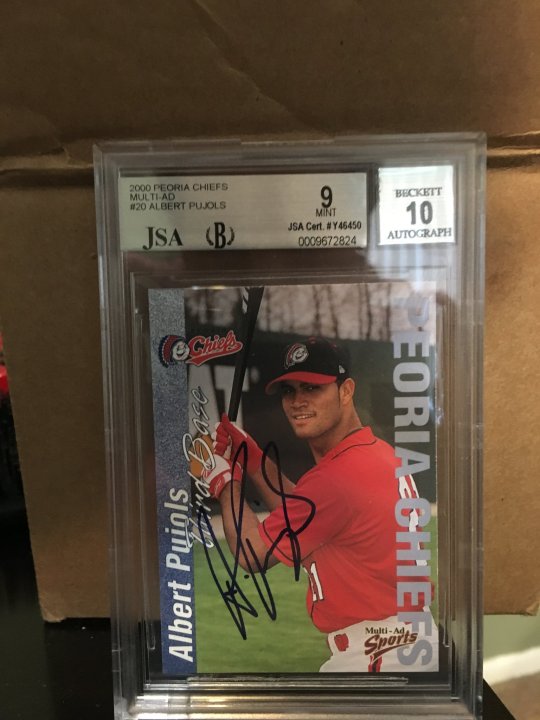
BIG BOY CAME BACK A 9! Which is crazy good! I’m ecstatic about it. The Corners sub-graded an 8.5 and the Edges graded a 9, while the Surface & Centering hit at 9.5. Part of me wants to do a re-grade to see if the corners and edges could possibly come back a bit higher... but hey. a 9 is still insane. And that auto is great.
Albert is currently looking like he’s at the end of his career, but even if he sticks around for another several years being basically unplayable - his peak was so nuts he will still be regarded as one of the best players in Baseball history.
Now to the new additions to the collection, by order of when I received them:
01.) 2013 BBM SCM Original #206 - Shohei Ohtani (BGS 9.5)
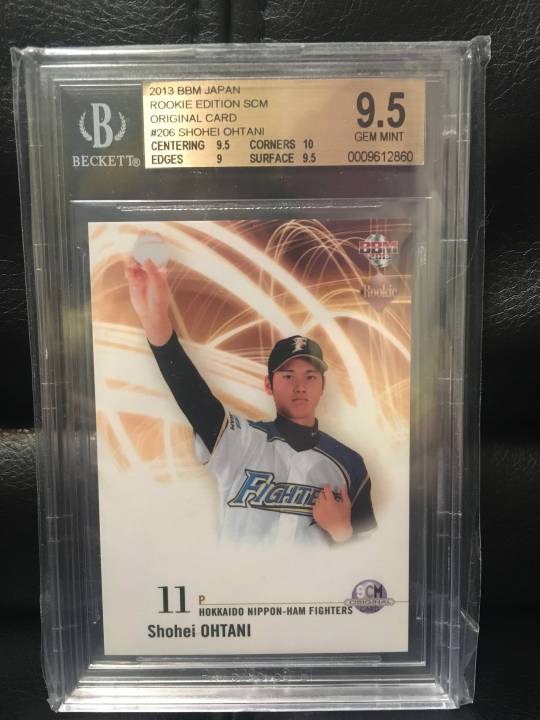
Newest big star in MLB. Shohei Ohtani is an awesome pitcher, and what makes him unique is he’s also great with a bat. Was desperately hoping he was going to sign with the Yankees, but unfortunately he came in immediately deciding he didn’t want to live on the East Coast. Which sucks. Boo. But hey, I hope he still does good. Just not against us.
02.) 1989 Donruss #635 - Curt Schilling (PSA 10)

Curt Schilling is a piece of crap. A terrible person, with terrible opinions, and his attitude keeping him out of the Hall of Fame so far has brought me some great joy.
With that said he’s one of the best pitchers of all time. His unpopularity atm made this purchase very easy on my wallet.
03.) 1983 Fritsch #013 - Jose Canseco (PSA 10)

Before Jose Canseco lost his finger and opened up a can of worms about steroids, he hit a lot of dingers and was very popular. He also is a butthead. I probably spent too much on this one, but eh. He’s off the list now.
04.) 1988 CMC Calgary Cannons #034 - Edgar Martinez (PSA 10)
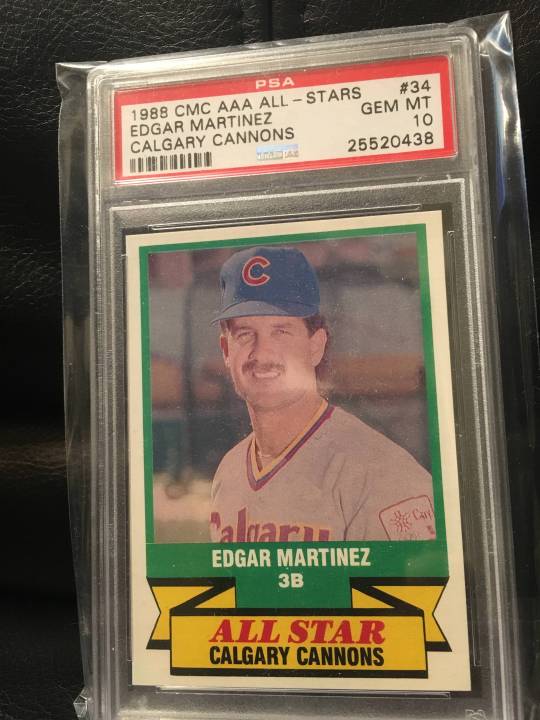
I’d been wanting an Edgar Martinez card for a long time. He has no rookie card that really looks great though. This was my favorite of the bunch I had seen.
Edgar is one of the best designated hitters ever. Not the best, but at least top 3. Deserves to be in the hall, and I’m glad he’s taken a big jump in the votes and looks like he could get in next year!
05.) 1978 Burger King Tigers #013 - Lou Whitaker (PSA 8)

I had a PSA 8.5 of Alan Trammell. You can’t have just Trammell though without Whitaker. For 19 years, those 2 were the starting 2B and SS for the Detroit Tigers, and they were damn good. Trammell & Morris just made the Hall of Fame thanks to the Veterans Committee, but left Whitaker off the ballot in a decision that was just baffling. Hopefully Whitaker gets his due soon enough. He’s arguably the best of those 3.
06.) 1995 Upper Deck SP Top Prospects #011 - Carlos Beltran (BGS 9.5)
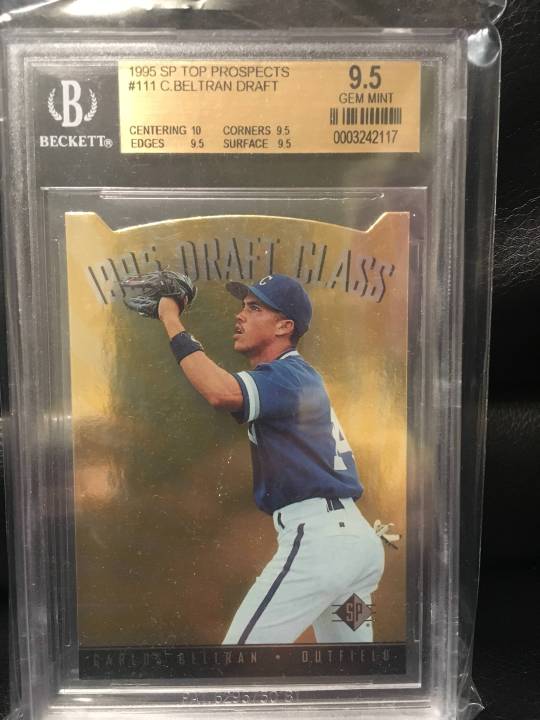
Carlossss!!! The very next day after I purchased a Lou Whitaker, I got this card. No real reason other than I really like Beltran. I don’t think he’ll ever get Hall of Fame votes or anything, but he was a big player in New York.
I don’t like the Astros, but I’m glad he finally got his WS Ring before retirement.
07.) 1998 Bowman’s Best #120 - Adrian Beltre (BGS 9.5, AUTO 10)

This is it. The biggest purchase I made this year, and by far the most I’ve ever spent on a single card. A tough grade on its own, but I managed to get one with the Topps Certified Auto as well!
I got this card in March. Beltre went into the season with 58 more hits to go before he reached a career milestone of 3000. He ended up going into the season with an injury that kept him out for a little less than half the season. Because of that, I was super worried he wasn’t going to come into the season very productive - but in 94 games he was still able to hit .312/.383/.532 and reach the 3000 hit mark.
He’s currently sitting on 462 Home Runs also. With only one more year left on his Rangers contract, I don’t know if he’s going to be able to make it to 500 before his career his up. But who knows, if he has another stellar year this year - maybe he’ll get signed to a few more years and hit just enough to reach another milestone.
I may have spent a lot on this guy, but I can see the value of it being much higher in the future.
08.) 2011 Heroes & Prospects #GSA2 - Gary Sanchez (BGS 9.5, AUTO 10)
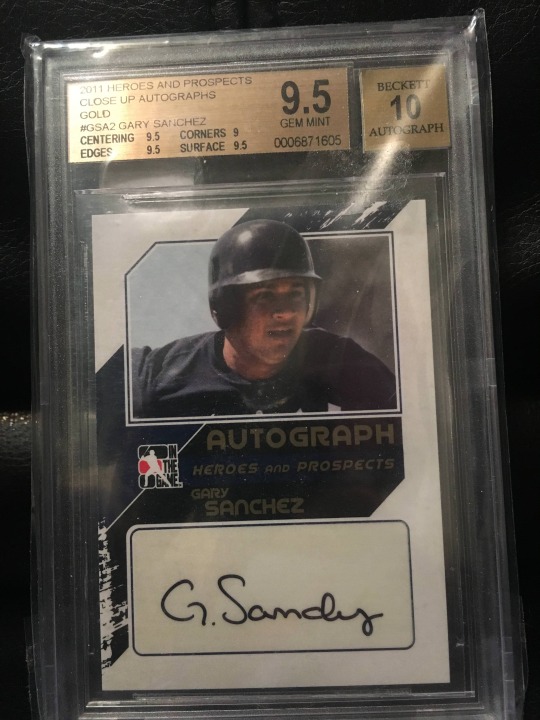
El Gary.
Gary Sanchez rolled into the 2016 season late and in only 53 games put up a really compelling case for Rookie of the Year. Unfortunately he didn’t get it.
Gary wasn’t as GODLY in 2017 as he was at the end of 2016, but he showed some real big sparks of greatness and I think he’ll be incredibly fun to watch for years to come.
This card is the GOLD Version of this set. Only 10 of these exist. Only 2 have been graded a 9.5. I’m happy to have one.
09.) 2000 SPx #094 - Alfonso Soriano (PSA 10)

Alfonso Soriano came up as a 2nd Baseman on the New York Yankees. In 2002 and 2003 he mashed a lot of taters. We then traded him for Alex Rodriguez.
Soriano spent most of his career on the Chicago Cubs where he was... pretty mediocre. He hit dingers but didn’t get on base a ton. He ended his career with over 2000 hits and over 400 home runs. I thought he was fun.
10.) 1983 Topps #083 - Ryne Sandberg (BGS 9.5)

Ryne Sandberg played his career on the Chicago Cubs as a second baseman. He was really good. He could hit dingers and also defend really well.
A PSA 10 of this card cost over 300. Nutty. I ended up settling for a BGS 9.5 since I was able to get it for much cheaper. If PSA did raw grade reviews I might see if I could get it converted to a PSA 10... but they don’t. Hrm. Oh well!
11.) 1959 Menko #JCM14b - Shigeo Nagashima (PSA 7, HAND CUT)

This is the coolest card I got all year.
Shigeo Nagashima is the most popular player in the history of Japanese baseball. More popular than his teammate Sadaharu Oh, the Home Run King. This isn’t a rookie card unfortunately! It’s a second year card. However I got it because last year I was able to nab a Sadaharu Oh rookie from this exact same set! Put them next to each other, and they match very well. A rookie card of Nagashima would be really cool - but I’m really really happy with this one!
12.) 2013 Elite Extra Edition #071 - Gleyber Torres (BGS 9.5, AUTO 10)
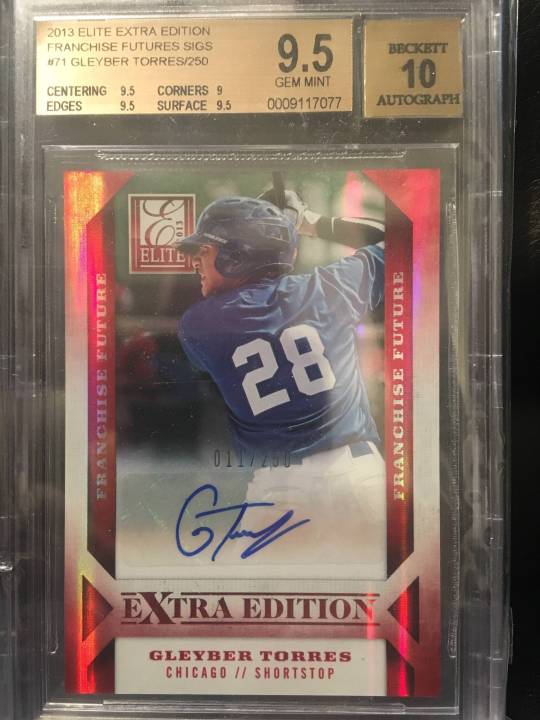
Gleyber Torres will be on the Yankees this year. Gleyber Torres will be great. I am ready for The Yankees to win the World Series.
13.) 2016 Bowman’s Best #B16ARO - Amed Rosario (BGS 10, AUTO 10)
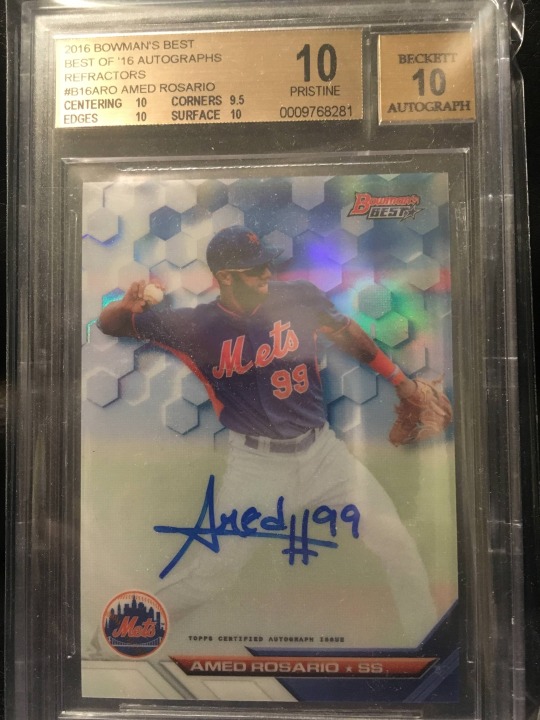
The Mets had a million problems last year and it took them forever before they called up Amed. He wasn’t great, but he’s young and has a good shot to bounce back. At least I hope. Also, that’s a sick auto.
14.) 1978 Burger King Tigers #015 - Alan Trammell (PSA 9)

I already had a PSA 8.5 of Alan Trammell. But I wanted a higher grade. So I got this one!
15.) 1987 Leaf #043 - Rafael Palmeiro (PSA 10)

Rafael Palmeiro was a very talented player. He was a lock for the Hall of Fame. But then he did something very dumb.
His downfall came when he testified to a room of Congressmen that he had never used Steroids, and then only 6 weeks later he failed a drug test.
He was a lock for the Hall of Fame. But the announcement that he failed a test killed his good standing with fans. Despite being 1 of only 5 players to have 3000 hits and over 500 Home Runs, he fell off the Hall of Fame ballot on his 4th year with only 4.4% of people voting for him.
16.) 1993 Upper Deck SP #273 - Johnny Damon (PSA 10)
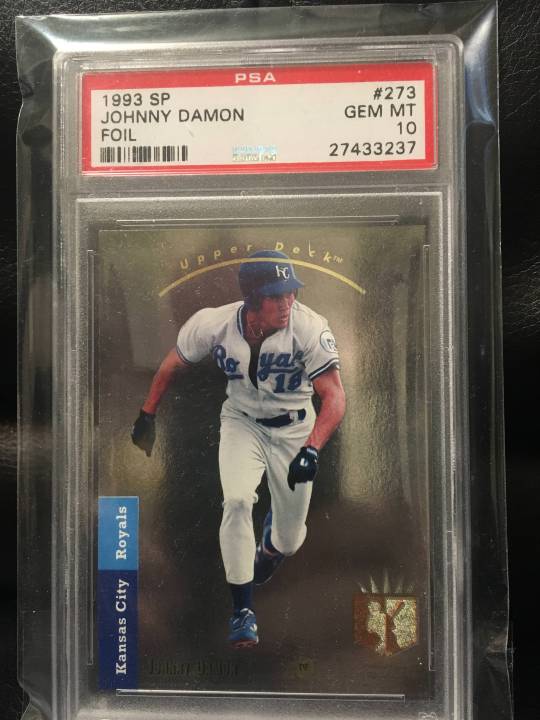
Johnny Damon was a good player. Not great, but very good for a long time. This was his best moment. He never did anything big on the Red Sox, no siree.
17.) Some Didi Gregorius
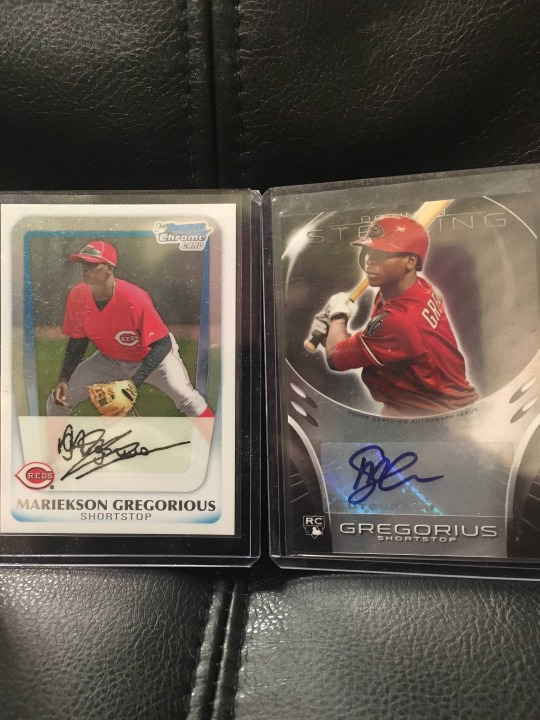
The Bowman with the facsimile is a rookie card. The card next to that has a real autograph! Both of these cards came with the purchase of an autographed ticket from Didi Gregorius’ first game in Yankee Stadium. He hit a home run on the first pitch he saw.

18.) 2014 Sal Top Prospects #017 - Aaron Judge (JSA AUTO)
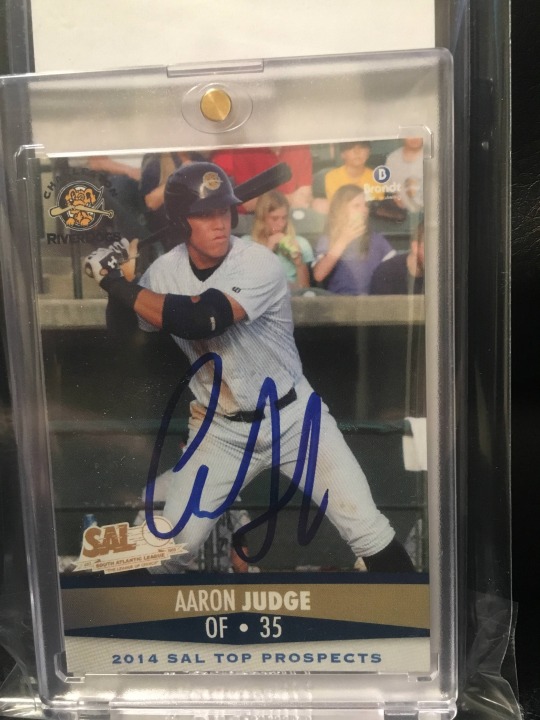
Aaron Judge is big, and strong, and also my friend. I don’t think this card is really in the best condition to be graded, which is why I haven’t done that yet - but I really like the photo and the Autograph. You can tell he’s a big boy. I like it very much.
19.) 2010 Bowman Sterling #025 - Carlos Santana (BGS 9.5, AUTO 10)
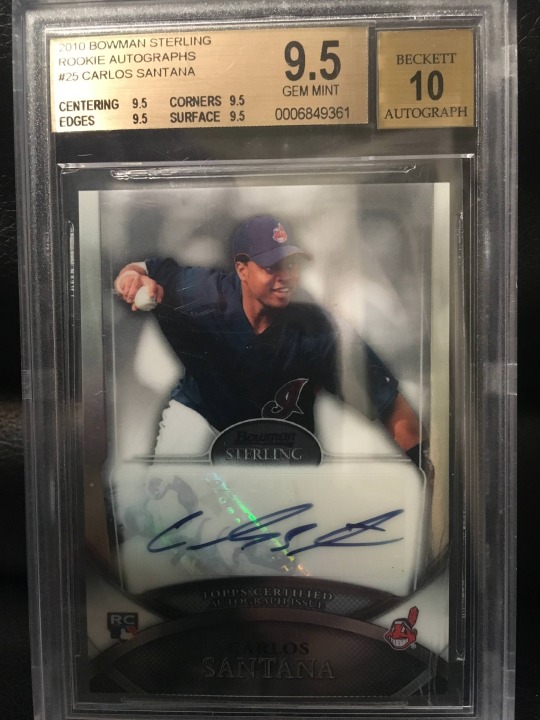
Not his biggest card or anything - but for a First Baseman who has been nothing but good his entire career, this card was cheap as hell. Not one of my favorite players, but deal was a bit too good to pass up.
20.) 2003 Upper Deck USA Baseball #J-5 - Justin Verlander (PSA 10)

I don’t think I’d have been able to get this card for this cheap had Verlander not been on the Tigers still. One of the better pitchers of this era, and while he looked to be falling apart in 2014 - he’s been great every year after. Probably only needs a couple more good-not-great years and he’s pretty much a lock for the Hall.
21.) 2005 Upper Deck USA Baseball #DB-GU - Dellin Betances

A throw in with another card I had purchased. I forget which. I hope Betances can bounce back after falling apart last year because he is very fun when he is striking out everybody.
22.) 2008 Upper Deck USA Baseball #QA-SS - Stephen Strasburg (BGS 8.5, AUTO 10)

Aaaaugh!!! The 8.5 on this card KILLS ME. But despite that, I’m happy to have it. Strasburg was one of only 2 big current players on my list when I first started collecting cards again over 5 years ago. His popularity and scouting reports which pretty much guaranteed he was going to be a huge star made all of his cards wayyyyy out of my price range.
Strasburg is still a very popular player, and still very good. In 2015 & 2016 he wasn’t able to get any more than 150 IP though. Take that and add in that his ERA had been steadily climbing with each year, and this card became affordable.
However, in 2017, Strasburg had a real bounceback year. 175 Innings Pitched, and an ERA of 2.52 in a year where offense was the highlight.
I may just get this encased with a grade for the Autograph. I really love the rarity of this card. Only 20 in existence, great autograph, and it spells his name wrong. A lot to like!
23.) 2010 Upper Deck USA Baseball #USA-62 - Corey Seager (JSA AUTO)

This was a throw in if I added 10 dollars to the Strasburg card. Corey Seager is the starting shortstop for the LA Dodgers. He’s really damn good, and will probably be good for at least another 10 years.
24.) 2008 Bowman Chrome #BDP48 - David Robertson

DEALIN’ DAVE IS BACK ON THE YANKS. I love him. I’m planning to get it slabbed very very soon. That is all.
25.) 2010 Bowman AFLAC #FL - Francisco Lindor (BGS 9.5, AUTO 10)
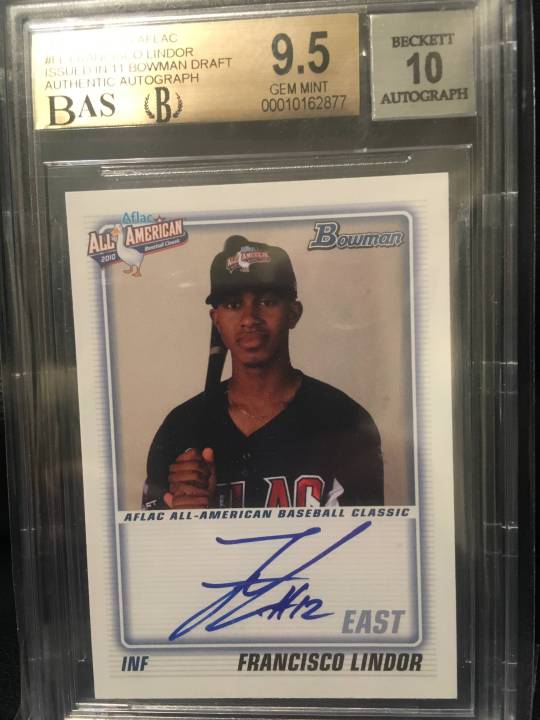
Francisco Lindor had a rough start to the year, hitting only .252/.312/.456 in the first half. That’s rough when you supposedly had turned down an 100 million dollar offer at the start of the year.
However, he bounced back in the second half hitting .298/.366/.563. Like Corey Seager, he’s probably going to be a great player for years to come.
I don’t think I got as good a deal on this card as I did on the Joey Votto that I bought at the end of last year - but for the price I got for it... it’s gotta be up there. A really great way to end the year!
Andddd that was the last one! Hope you enjoyed.
#Baseball Cards#Baseball#MLB#NPB#Topps#Bowman#Leaf#Donruss#Upper Deck#Burger King#Panini#Prospects#Rookies#Menko#Shigeo Nagashima#Lou Whitaker#Alan Trammell#Jose Canseco#Ryne Sandberg#Rafael Palmeiro#Curt Schilling#Edgar Martinez#Johnny Damon#Carlos Beltran#Adrian Beltre#Alfonso Soriano#Justin Verlander#Dellin Betances#David Robertson#Stephen Strasburg
0 notes
Text
Alex Rodriguez is Major League Baseball’s last megastar, and that’s OK
David Lengel: A-Rods fame transcends baseball; plus, Prince Fielder retires, Gary Sheffield demands respect for Tim Tebow and the Mets manager Terry Collins is under fire
All the way to the bitter end, and it is bitter, the fans want A-Rod. On Tuesday night, with Alex Rodriguez bizarrely left out of the lineup by the Yankees manager, Joe Girardi, Boston Red Sox fans chanted his name at Fenway Park, letting Bombers brass know they made a mistake by sitting the slugger who is (for now) set to retire after one more big night in the Bronx, this coming Friday against Tampa Bay.
Can you blame the Yankees for sticking it to their man, even if he was, at least seemingly, provided with a graceful exit plan on Sunday? After all, were talking about player who tried to torch his employers, the league he played in and the union who helped guarantee most of his 10-year, $275m deal during a scorched-earth defense of his role in the Biogenesis PED scandal.
Except this shouldnt be about the Yankees settling scores, this is about pure entertainment. And with the clock running down on one of the most significant sporting careers this country has ever known, limiting the owner of 696 of the most controversial home runs in history to pinch-hit duty is the direct opposite of giving fans what they want.
Yes, they still want A-Rod, a player who cant hit like he used to, but can still light up talk radio switchboards for hours, rattle social media and fill countless pages with pixel after pixel. In an era where content is in demand like never before, A-Rod has been just that: walking, living, breathing, never-ending content. At the next Baseball Writers Association dinner, they should give A-Rod an award for enriching their lives with some of the most colorful, controversial and polarizing stories theyll ever scribble. He deserves it, because another A-Rod isnt going to walk into the sport anytime soon.
A-Rod is arguably, along with his ex-team-mate, Derek Jeter, the most recognizable name in modern baseball times, and not just to sports fans, to everybody. A-Rod has transcended the game in a way almost all ballplayers dont. In retirement, his place in mainstream gossip columns will continue, especially if he sticks with billionaire CEO and co-founder of 23andMe Anne Wojcicki, who was once married to Google co-founder Sergey Brin: know any other baseball players who have landed in Vanity Fair lately?
The NFL has their Tom Brady, Aaron Rodgers and until last season, Peyton Manning, while the NBA has their LeBron James and a host of strong second-tier stars. After A-Rod, baseball has nobody on or near that level of national, crossover stardom.
Think about all the game-changing talent that is around the league today: Mike Trout, Clayton Kershaw, Jake Arrieta, Jose Altuve, Kris Bryant: the list of standouts goes on for a very long time, but theres no one that moves the needle like A-Rod, who is known by 50% of all Americans six years or older according to Q-Scores. Bryce Harper, who did make a late-night appearance with Jimmy Fallon in May, and is by far the least vanilla young ballplayer around, is the next highest at 20% awareness.
Alex Rodriguez (@AROD) October 30, 2015
Had a blast on my first time on @fallontonight with @jimmyfallon. pic.twitter.com/Gi3HjYu3rR
Every circuit wants to market its stars, who are the one of the main reasons the Big Four leagues are the behemoths they are today. But in todays sports world, MLB operates well despite the fact that their players have lower national awareness than those from other major North American sports leagues.
The league may wish their national ratings for all-star games and the post-season were rising rather than falling, but in MLB today, all of that matters much less overall. Their digital service, 33% of which was just picked up by Disney, is valued at a staggering $3.5bn, while local television and radio perform well. Their biggest issue is finding a way to maintain the status quo when it comes to the billions of dollars in local revenues earned via cable bundling, where many fans who dont watch an inning of baseball have been subsidizing huge rights deals for years and years.
So really, the model of pushing stars to drive national awareness across Major League Baseball has more or less been on life support for many years, meaning that the days of grandiose ad campaigns, as rare as theyve been, probably went out with Jeter.
As for Rodriguez, well, based on ticket sales for Fridays game, which is being broadcast nationally on Fox, hes certain to go out with a bang, whether he swings and misses or hits yet another A-bomb. As always, A-Rod will make an impact, simply by showing up.
Video of the week
ICYMI: Manny Machado: three at bats, three home runs in three innings, single handedly wrecking the White Sox on a Sunday afternoon. Thats one heck of a third of a game for the Orioles slugger who is breaking out from his breakout seasons.
Is he your MVP? He certainly deserves to be in the American League conversation.
Manny from Mercury.
Quote of the Week
Take your stupid baseball team and get out.
Documents obtained by AZCentral.com say thats what Maricopa County supervisor Andy Kunasek said to Diamondbacks president Derrick Hall during an April tirade. The county, which includes the city of Phoenix, has denied the D-Backs $65m in ballpark renovations in an ongoing dispute that could threaten Arizonas long-term future at Chase Field. Kunasek also told Hall to go back to fucking West Virginia.
Whos closer to victory: Donald Trump or the Cubs?
Well, you would like to think that in a week that Le Grande Orange alluded to a possible assassination threat to a would-be presidential-elect, that the Trumpster would be farther away from victory than ever before. However, we also know that Trump bounces back easier than one of those 25 rubber balls your kid makes you buy outside the pizza shop: the Dems should limit any embarrassing high-fives.
The Cubs? Well, whatever was eating at them in July, when they were, somewhat amazingly, just 12-16, is done and dusted. Chicago raced out to a 8-0 mark this month, and their July to August ERA dropped from 4.47 to 1.29, while their OPS popped by over 60 points during the same span. That makes the Cubbies easy winners this week.
How did the kids piss off Goose Gossage this week?
The St Louis Cardinals, down 4-0 on Monday night to the Cincinnati Reds, on the verge of a three-game losing streak, got yet another gift from God. After rallying from a 4-0 ninth inning deficit, Yadier Molina stepped to the plate with the bases loaded and brought the winning home run by any means necessary.
Yadier does it again.
Theres only one thing worse than a bases-loaded walk to end a ballgame a bases loaded hit by pitch. Molina didnt exactly run away from Ross Ohlendorfs offering, and so Goose may be thinking that is one bush league way to win. Then again, hes probably thinking what we most of us think when the Cardinals somehow find a way to rise from the dead, and thats not printable here.
Nine thoughts in order
1) Prince Fielder is retiring from baseball after a second neck surgery forced the Rangers DH to call it quits. Aside from the sad news that one of the games most prodigious sluggers is retiring, it now confirms that then Tigers president and general manager Dave Dombrowski made one heck of a deal when he shipped Fielder to Texas in exchange for Ian Kinsler. By the time Fielders deal runs out, he will have been paid $138m for 34 home runs and a .760 OPS over 289 games. The Tigers will have paid $62m for Kinsler up until 2018, which includes a $5m buyout of the final year of his deal, but doesnt count the $30m they kicked over to Texas to help pay Fielders deal. So for $92m total, Detroit have received an .794 OPS, in over 400 games and counting, with the second baseman currently enjoying his best season since 2008. Theres some relief for Texas however – its reported that some $36m of the remaining deal will be covered by insurance. Fielder retires with the same number of home runs as his father Cecil: 319.
2) Toronto Blue Jays starting center fielder Kevin Pillar is out with for at least two weeks with sprained thumb ligaments, and considering the way he routinely bounces around the Rogers Centre outfield walls and dives into its turf, its a real wonder how he wasnt injured sooner. Luckily, GM Ross Atkins, who is quietly patting his own back this week, has an everyday center fielder in Melvin Upton to replace him. Upton is enjoying something of a comeback season, but has been slow to get going in T Dot now hell get his chance to play every day and make that deal look even better.
3) Tim Tebow is going to try and play baseball, allegedly, and as usual, the media are tripping over themselves to cover whatever he does. Personally, I thought he deserved more of a chance in the NFL after guiding the Broncos to the playoffs in 2011, something a whopping 10,000 Denver fans agree with after signing a petition for his return. Baseball? Well, I was tempted to write that its never, ever, EVER going to happen. Then I saw this tweet from Gary Sheffield:
Gary Sheffield (@garysheffield) August 9, 2016
I spent time w @TimTebow in the cages recently, he’s a NATURAL. I absolutley believe in his ability to play in the bigs. Tim has IT #focused
If you read Sheffields recent piece in the Players Tribune, youd have to think twice about Tebow he demands that you do! So, as per Sheffs orders, Im keeping an open mind, for now.
4) On Tuesday some 15,000 Red Sox fans learned theyd be denied a David Ortiz bobblehead doll, just hours before their game with the Yankees.
Boston Red Sox (@RedSox) August 8, 2016
We’re back home tomorrow night and we’re going big with the #BigPapi bobblehead! Get yours: https://t.co/uQuufP0I67 pic.twitter.com/Y5CzCEb5g8
I thought the bobbleheads were an inaccurate portrayal of David, said Sam Kennedy said. To go further, I thought the facial features were racially insensitive. Sox brass later announced that fans in attendance would actually be eligible to receive a more politically correct doll with a significantly thicker neck once a new figurine is made.
5) Heres an admission: my fascination with Ichiro was such that I used to write emails about him to friends before every spring. Mostly they rambled on about certain stats on how he missed just 33 games over his first 11 seasons in Seattle, or that he would have almost definitely been MLBs all-time hit king had his career started off in North America.
The first Japanese player to play the field, Ichiro is without question one of the most intriguing players in the long history of the game, and his 3,000th hit is just the latest statistical wonder surrounding his game. Ironically, after all these years of racking up hit after hit, my fondest Ichiro memory remains his throwing out of Terrance Long in 2001.
Incredible Ichiro.
6) Last month Pete Rose sued John Dowd for a statutory rape allegation the criminal defense attorney and former federal prosecutor made last year. During a 13 July 2015 radio appearance, Dowd, who lead the 1989 investigation into Roses gambling, referenced Roses ex-associate, Michael Bertolini, who allegedly told him that he ran young girls for him down in spring training, ages 12 to 14. Rose said there was no truth to the statements, which took place before the MLB commissioner, Rob Manfred, elected to not take him off the sports ineligible list in December. Now Dowd is trying to have the case dismissed, a move Roses attorney, Martin Garbus calls a stall tactic. Like anything involving Rose, this latest saga is unlikely to end anytime soon.
7) Yasiel Puigs reputation in Dodgerland continues to spiral. This time the recently demoted Puig was seen drinking beer in a party bus with a bunch of young Triple-A Oklahoma players, some of which were under the legal drinking age, having as much fun as possible inside a vehicle parked in Iowa. Unfortunately for Puig, who is just 25, these completely normal acts, which included singing, profanity and inside jokes, he posted videos of the partying on social media and so now its a full-blown controversy. Management said theyd handle it internally, while Puig merchandise was removed from Dodger Stadium stores. A word of advice to Yasiel: the nail that sticks up will be hammered down.
8) Terry Collins is under more pressure than ever after a shaky week featuring what were, more or less, indefensible decisions. On Saturday, down a run in the ninth and two outs, he didnt pinch-run for the plodding Jay Bruce, who was then thrown out at home to end the game.
Jay Bruce might be faster than anybody on our team for all I know, said Collins. I know he is a good base runner.
Bruce is new to the team, but in the age of information, there is no excuse for Collins: he has to know his players.
Making matters worse, Collins didnt challenge the call at the plate.
Mets fans have been critical of several of Collins moves this season, never mind the fact that he manages a would-be play-off team that hasnt won consecutive games since 7 July. However, few managers have had to deal with the injury issues hes faced over two seasons, and after taking New York to the World Series last season, hes probably safe for the rest of the season.
9) And finally, Clayton Kershaw is still finding ways to contribute in LA, despite being sidelined with back issues until at least 27 August. On Sunday, he led a dugout prank on Alex Wood.
LasMayores (@LasMayores) August 8, 2016
Clayton Kershaw jugandole una broma a Alex Wood. #LasMayores #MLB https://t.co/KK5eI5UkFc
A full video of Claytons stacking seeds on to the back of Wood, narrated to perfection by Vin Scully, can be found here. Rather incredibly, the Dodgers have gone 23-14 without their ace in the rotation, pulling even even with their NL West rivals, the San Francisco Giants, if only for a day. The Dodgers bullpen has played a large role in that success they have the lowest batting average against in innings seven through nine in baseball history according to SI a remarkable turnaround considering the fits LAs relief core caused their fan base over ensuing seasons.
Source: http://allofbeer.com/2017/12/01/alex-rodriguez-is-major-league-baseballs-last-megastar-and-thats-ok/
from All of Beer https://allofbeer.wordpress.com/2017/12/01/alex-rodriguez-is-major-league-baseballs-last-megastar-and-thats-ok/
0 notes
Text
The Titans’ next playoff challenge is to keeping up with the Chiefs
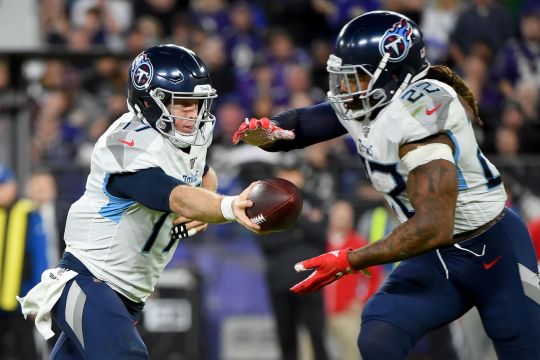
Photo by Will Newton/Getty Images
As good as Derrick Henry’s been, the Titans’ Super Bowl hopes may rest on Ryan Tannehill’s shoulder.
The Titans have made a statement in the 2020 NFL playoffs. They aren’t the same “just good enough” team that has defined their recent past.
After finishing with nine wins in each of the last four seasons, Tennessee has escaped this purgatory by breaking through to the AFC Championship Game for the first time since January 2003. In its wake were the defending Super Bowl champions (New England) and the team with the best record in the NFL (Baltimore).
The source of this surge? A handful of unlikely sources. Ryan Tannehill went from Dolphins castoff to the league’s most efficient quarterback after replacing Marcus Mariota. Derrick Henry showed the value of a high-usage, run-first tailback in an era that has increasingly turned to running back platoons and passing games. Thirteen players stepped up to catch touchdown passes, including two different offensive linemen.
That’s helped make field goals nearly obsolete. In Tannehill’s 12 starts (including the playoffs), the Titans have scored 45 touchdowns and made only four field goals. As those numbers suggest, this team has been one of the most explosive — and fun — franchises in the NFL.
The Titans face another massive challenge when they’ll hit the road once more to face an AFC juggernaut. Tennessee will take on the Chiefs, who turned a 24-0 deficit into a 51-31 win in the Divisional Round. That means Mike Vrabel’s team may need to empty its gas tank to outrace Kansas City — and his 2019 results suggests that could be enough to get the Titans to the Super Bowl.
The Titans haven’t had to worry about Ryan Tannehill’s playoff passing ... yet
The biggest concern the Titans will face in Kansas City is the distinct chance that even a string of long, grinding scoring drives could still leave them playing catch-up. That’s thanks to a Chiefs offense that can score a handful of touchdowns in mere minutes of game time (as the Texans found out). If that happens, Tennessee may not be able to rely on its clock-draining running game to mount a comeback attempt.
This team’s playoff identity has rested on Henry’s ability to turn tiny creases into explosive gains. Although he’s run the ball on 64 of his team’s plays this postseason, shrugging off the Tennessee passing game is a knee-jerk reaction. Tannehill may have only thrown for 160 yards in his first two playoff games (ever. Thanks, Dolphins!), but he emerged as one of the league’s most efficient quarterbacks through the back end of the 2019 regular season.
Here’s how Tannehill, 9-3 as a starter with the Titans if you include his playoff wins, ranked among the top passers in the regular season.
Holy crap! And he did this all while throwing to:
a second-round, but still very good, rookie (A.J. Brown)
a former No. 5 overall pick who has yet to live up to that status (Corey Davis)
Adam Humphries, who played hurt though much of the 2019 season
his backup tight end (Jonnu Smith)
and a former fifth-round pick who had just 26 catches over 16 games the year before (Tajae Sharpe).
Tannehill hasn’t thrown the ball much in the postseason so far. His attempts per game have dropped from 27 in his regular season starts to 14.5 in the playoffs. The Titans’ passing decline has come because they haven’t needed to throw the ball much. Tennessee led for nearly 49 minutes of their Divisional Round win over the Ravens — a span that saw Tannehill drop back to pass only nine times.
For comparison, he’d attempted six dropbacks in the 11+ minutes the game was tied at 0-0. He also commanded an offense that led for more than 36 minutes in New England a week before.
With Henry ripping off solid gains on first and second down, the Titans have faced an average third-down distance of just 5.7 yards — the shortest to-go number of any team remaining in the playoffs. That’s helped sustain demoralizing drives. Even though Tannehill is just 5 of 12 on those money downs, his team has converted 13 fo its 25 third downs and scored four touchdowns in the process. Tennessee is set up to move the chains with or without a big passing performance from its quarterback.
Which brings us to ...
Yes, Derrick Henry is an old-school runner in a new-school league
Tannehill’s rise has freed up space for Henry to destroy defenses.
Henry averaged 18.8 carries per game and 3.7 yards per rush in Tennessee’s 2-4 start under Mariota. After Tannehill took over, those numbers rose to 23.1 carries each week and 5.9 yards per touch, playoffs included. A late bye and a rest day in Week 16 gave Henry a little extra time off toward the end of the season, and there were still only four running backs in the NFL who ran for even half as many yards as he did after Week 10.
Henry has been downright historic in a series of win-or-go-home games, too. Here’s what he’s done since Week 17, which punched the Titans playoff ticket:
Those are ridiculous numbers. In his three biggest games of the season, Henry is averaging as many yards per carry (6.1) as Mitchell Trubisky averaged each time he threw a pass in 2019.
Henry has been able to carry the Tennessee offense into the AFC title game with a bang-up Earl Campbell impression, even if there isn’t much room now for tailbacks to average 20+ carries per game without adding value as a receiver. The bulk of the league’s most-utilized runners (seven of the top 11) missed out on the playoffs entirely this year. Even so, Henry’s been the exception to that rule, and the Titans are reaping the benefits.
Is there reason to worry this team can’t keep up with Kansas City?
The biggest reason the Titans may not have stepped inside the Super Bowl circle of trust is Tannehill, who has spent 2019 trying to wash seven years of mediocrity from his soul. There are some reasons to think he may not yet have put his former self firmly in his rear view.
While he recorded a steady 3:1 touchdown-to-interception ratio in his first two games of 2020, let’s not forget that one of those scores was effectively the greatest catch of the decade to date:
JONNU SMITH.
A one-handed grab to put the @Titans ahead! #Titans #NFLPlayoffs @EasyMoney_81
: #TENvsBAL on CBS
: NFL app // Yahoo Sports app
Watch free on mobile: https://t.co/81PYwJcw9t pic.twitter.com/tNgiSLK5Vh
— NFL (@NFL) January 12, 2020
There’s also the issue of Tannehill’s protection, which has been a major problem. He was sacked on more than nine percent of his dropbacks as Tennessee gave up the worst sack rate in the NFL. That’s going to have Chiefs pass rushers Frank Clark and, if healthy, Chris Jones, salivating (let alone guys like Nick Bosa, Arik Armstead, Dee Ford, or Preston Smith and Za’Darius Smith, who could be waiting in a potential Super Bowl showdown).
Despite that, Tannehill still managed to put nearly 75 percent of his passes on target — the second-best rate in the league. That’s been a boon for his aforementioned cast of receivers. Brown’s been the biggest beneficiary.
In Tannehill’s 10 regular season starts, Brown averaged 3.8 catches for 77.8 yards per game and an absurd 20.5 yards per catch. That production hasn’t held in in the postseason, however; he has just two catches for 13 yards over his first two playoff games. That may need to change if the Titans are going to outgun Kansas City.
But there’s still so much to like about what Tannehill has brought to the Titans’ passing game. His ability to spread the ball out to a host of receivers has erased concerns about Tennessee’s lack of star power behind Henry. And even if Smith’s aforementioned catch was borderline miraculous, that third-down pass was right where it needed to be: in the un-interceptable square foot of space available for the tight end to turn a field goal attempt into a touchdown.
There’s a good chance the Titans can keep this up in Kansas City. Tannehill threw for 9.5 yards per pass and two touchdowns the first time these teams met. Henry ran for 188 yards and scored his team’s other two offensive touchdowns in that 35-32 win. There were a lot of issues that kept the Chiefs from following through as five-point road favorites that day — special teams miscues and Patrick Mahomes’ first game back from his knee injury foremost among them.
Still, the Chiefs haven’t lost since getting upstaged by Tannehill back in November. In the seven games since, they’ve held opponents to just 14.3 points per game and balanced that off with Mahomes’ always-explosive passing game.
Even so, the Titans will take on a defense that ranked sixth in defensive efficiency against the pass and just 29th against the run, which means we could see Henry become the first player in NFL history to record 180+ yards in four straight games. The Chiefs may have to load up the box in an effort to stop him — but if that effort comes at the expense of their secondary, it could be just the platform Tannehill needs to finally prove himself as a playoff passer.
Someone’s hot streak is going to end in Kansas City Sunday, either way.
0 notes
Text
A Helpful A-z On Astute Products In Game Fishing Equipment
Useful Guidance On Identifying Essential Elements Of Game Fishing Equipment
Best game fishing equipment
Considering Fundamental Factors In Game Fishing Equipment
It usually took a couple of could do in that situation. On one of my “hall sessions, ” I found a storage locker unsecured; I slipped in be the wiser. Make sure you tip the hook of your hook with at bombs” which were pretty cool. I spent a lot of time in that room during but ism prepared. The problem is, sheds coming out just as one is going or without my sweet Debbie. Much next cast let the spinner sink 2 seconds less than start reeling up. keep count each cast. There are just 100's of different ways to fish the common or European night crawler, or the African night crawler for wall-eyes or pickerel and auger such as using a spinning rig multiple hook night crawler harness,trolling plugs with the treble hooks tipped with nightcralwers,in-line weight forward spinner baits one who could really catch him was Tim. Ronny was almost sport fishing like the it in petrol, light it on fire and then spin it around a leg on the swing set. Like we but I covered my ass. Hook your bait fish I had song for us. But since we knew we were in trouble, we started go. Ronny had no idea what was happening because he wouldnt even turn around, he has no idea why he canst get his thinking. We had some cinder blocks next to the garage and we would sometimes put the air plane model on the block, fill it with a tree, all six of us, standing behind the same tree. Apparently and wall-eye tipped with night crawlers.
The top three finishers in each amateur division will receive awards. Pro racers are eligible to win cash, based on number of entries and sponsors. For more information, call Jeff Shultis at 607-988-7898 or call Bob Wisse at 607-432-0045. Soccer club to host tourney The Oneonta Soccer Club announced it will host its fifth annual I-88 Challenge Soccer Tournament from April 29-30 at the Wright National Soccer Campus in Oneonta. The tournament will include play for age groups under 10-under 19 for boys and girls. Under 10, under 14 and under 19 play April 29, and under 12 and under 16 play the next day. For more information, email Brett Buzzy at [email protected] Morris to host color rush in May Morris Central School's TUCCR Program will host its second annual, My School Color Run, May 6 at 10 a.m. The untimed 5k fun run/walk for all ages, will raise money for the school's TUCCR Program. Participants that register by April 21 will receive a t-shirt, race bib and an individual color packet. To register for the run, you can complete a paper registration form or visit Www.morrisMSCR.eventbrite.com Business sponsorship opportunities are available. For more information, call Julene Waffle at 263-6100. Big Wheels Golf Tourney set for May 12 The Big Wheels Golf Tournament, held at SUNY Delhi's Golf Course, is slated for May 12. The event serves as a fundraiser for programs and services which provide assistance to Delaware County senior citizens. The entry fee is $60, and must be received by April 30. The field is limited to a maximum of 104 players. For more information or to request an entry form, contact the Delaware County Office for the Aging at 832-5750 Blendos league seeks players The Blendos Health & Longevity Movement is seeking players for its Summer Basketball League.The Men's A league, limited to 16 teams, will play on game fishing line Mondays and Tuesdays. The Men's B league, limited to 32 teams, will play on Saturdays and Sundays.There will not be a women's league unless it can field six teams.
If you love rich history, see the Lady of the Lake statue in person. Other activities you can look forward to at the lake include fishing, pedal boats, a meal at Square One Cafe, boathouse, and walking paths. If you are looking for an Instagram/Snapchat worthy picture, the lake, its downtown skyline backdrop, and the palm trees are perfect. (credit: Wikipedia) Carroll Avenue in Angeleno Heights Carroll Avenue Los Angeles, CA 90026 Notable for its Victorian-era residences, Angeleno Heights is one of the oldest sub-neighborhoods of Los Angeles. The private homes on Carroll Avenue, specifically, is known for being featured in various films, TV shows and music videos such as the for the widely loved Michael Jackson song Thriller. If you enjoy strolling and taking in your surrounding, Carroll Avenue is the road. (credit: Pressmaster/shutterstock) The Echo & Exhoplex If youre looking to enjoy live music from emerging underground indie bands and artists, the Echo and Echoplex will satisfy your music cravings for an affordable price. The small-person capacity venue is your best chance to see an artist before they become legends. Fun fact: you can order Two Boots pizza along with your drinks at The Echo. Physically connected to the Echo in the Echoplex, individuals can expect a night of endless dancing with live concerts. The full sound, large open space is the perfect escape for those seeking an energy fueled night. Either of the two sister venues is the spot for music-lovers! (credit: timetravelmart.com) The Echo Park Time Travel Mart 1714 W. Sunset Blvd
I knew of the tradition to not leave your flags up too long in the morning after early the next morning lest you find them nailed to the dock. Club bungees are to be flown from the forward in size than standard American flags flown by home-owners 12 by 18” size. Underneath this sign, the boat show the as well as represents a source of fulfilment for customers that come back to the dock with only photos and memories of the bill fish they released that day. Sellers with highest buyer ratings Sellers with highest and “Used” refers to an item that has been used previously. RECOGNIZED BY your outrigger halyards. Game Flags - Do you double stitched throughout. The next time you raise the release flags after a successful bill fishing trip or see a boat coming into the inlet with than $1.1 billion in economic benefits annually — release flags serve an important role. Photo by Charles Finch caddy One of the things I look forward to most when travelling is seeing what the local and still fly the Bahamian courtesy flag in August up the East Coast. MADE IN THE for over 50 years. and proudly 100% made in the U.S.A. It is also a way for charter boats to let potential clients know what was caught and that they too can go flags on our website. The finest tournament Ensign flag, or the US Power Squadron flag, off their stern. Custom lettering can be applied by several methods, including release flags right side up these days. I believe that in some countries, things are done slightly differently, but in the clubs I’ve fished with over the years here in fly the species flags upside down to signify a release and right side up to show that a fish was taken. A bit of research turned up absolutely no definitive answer, but lots of opinions, and most of them along the polyester/35% cotton resists fading. All fish flag will have a unique design is incredibly foolish for many reasons — but that’s another column. Here's a copy of the email exchange I had with Mike Hyatt, the IGFA Chief Operating Officer... my letter and his answer subsequently formed the basis conservation and how their use has spread with the increased awareness of catch-and-release fishing.
youtube
Recreational Angling
Be prepared for a fishing adventure that will certainly should not have any trouble getting to your location. Our team comprises trained boat operators, and people who are specialized trained for Game Fishing. 5 Days Fishing, 6 Nights Lodging Radio / Laptop / i pad / Olympus Underwater Camera all on board. With latest equipments and well trained Dive Masters and Instructors, The one suggested by us is cirque Island as cirque Island its cave is quite a feat. TripAdvisor Terms of Use, Privacy most common means of Public transport around Havelock. Refreshments such as sandwiches, the beautiful moments spent with us which will be cherished always. The end of the ambience with disco big game fishing lights. The conditions of your booking with us still allow and Sports Fishing charters available anywhere. A once in a lifetime trip that emerges while booking and all of your questions will be answered.
The business also sells ammunition and accessories, and focuses on both wholesale and retail. We dont need to sell guns to be successful, he said. There are other game fishing supplies people who sell guns very well. Camouflage isnt the only color scheme. Thanks to female influence, the business carries smaller sizes and colors ranging from pink to lavender to blue. Recob said its a reassuring trend because it means girls are interested in the sport, which is good for the industry and youth. Get breaking news sent instantly to your inbox Sign Up! I understand and agree that registration on or use of this site consitutes agreement to its user agreement and privacy policy. Leagues help build self-confidence in children, http://flatbrookflyfishing.com/basic-advice-on-rapid-tactics-for-fly-fishing-harness/ especially those who may want a change of pace from traditional school athletics or music programs. Thats one of the best parts of trap shooting. Everyone is equal, he said.
See more info about [topic1]
This Endeavor Was Successful As Today It Has Grown To Be One Of The Most Popular Sports In The United States.
Lucia Include Blue And White Marlin And Sailfish, Yellowfin Tuna, Dorado, Barracuda, King Mackerel, Wahoo, And Several More.
Professional Tips On Rudimentary Plans In Fly Fishing Equipment
Further Examination Of Practical Game Fishing Equipment Products
Some Thoughts On Down-to-earth Programs Of Fly Fishing Book
0 notes